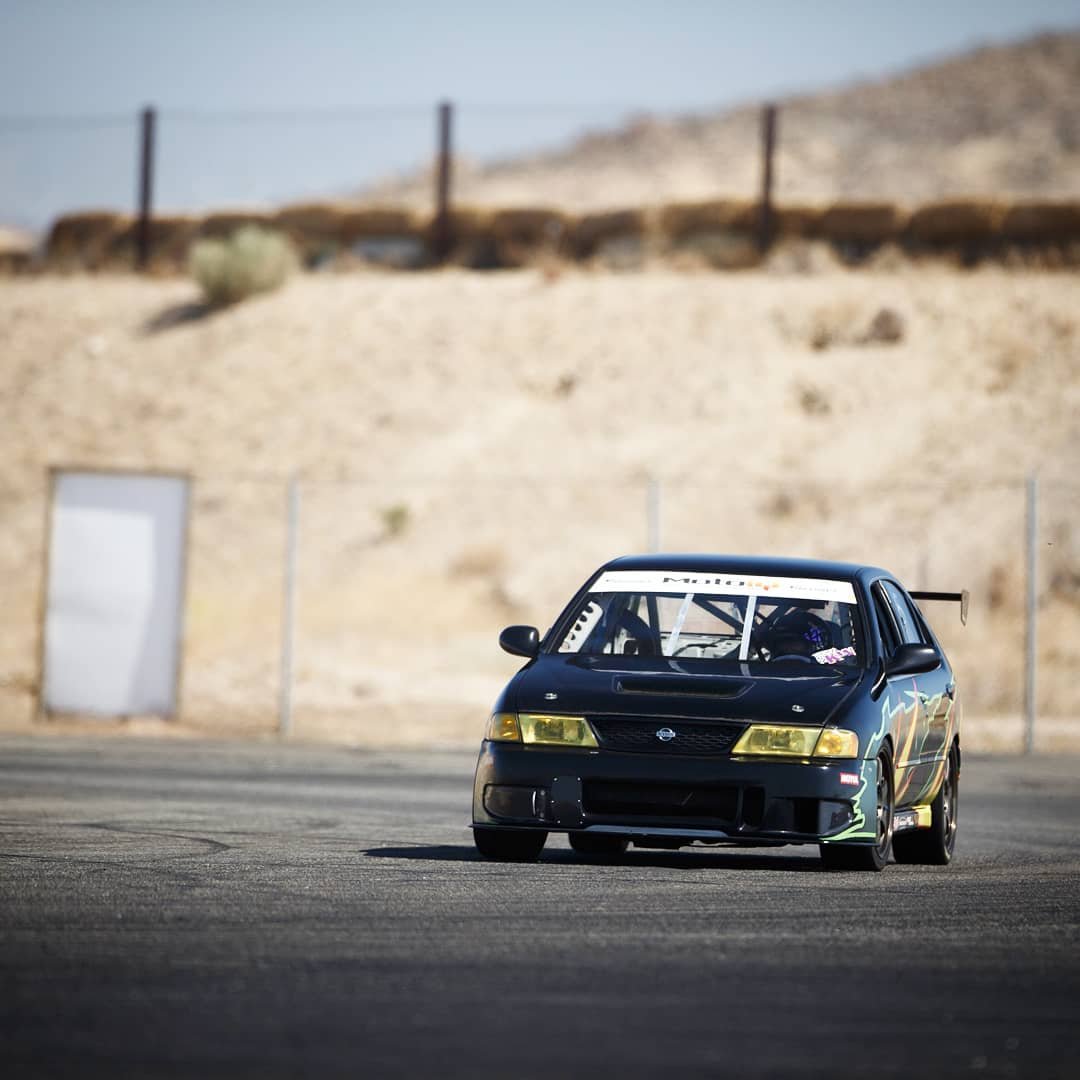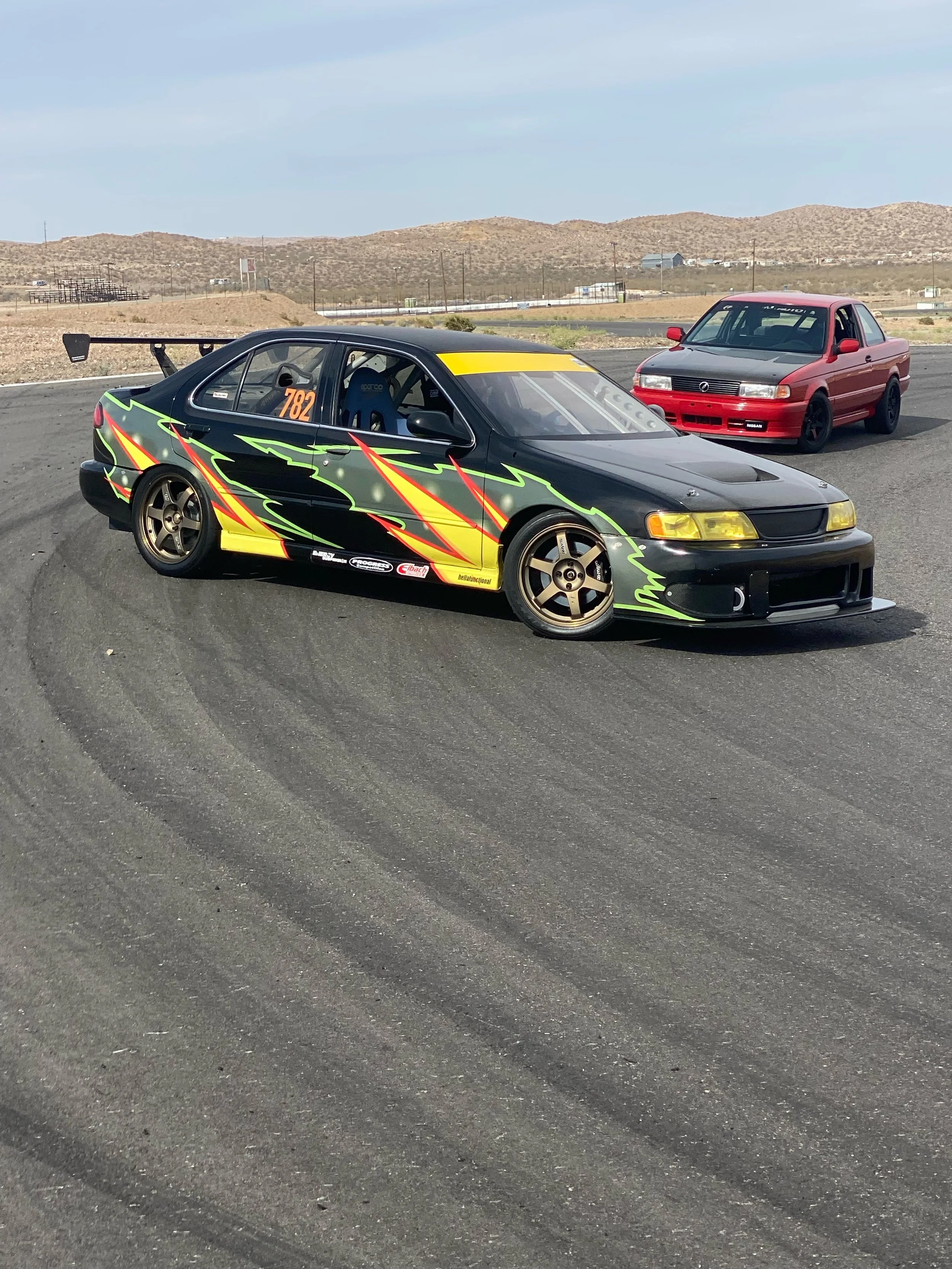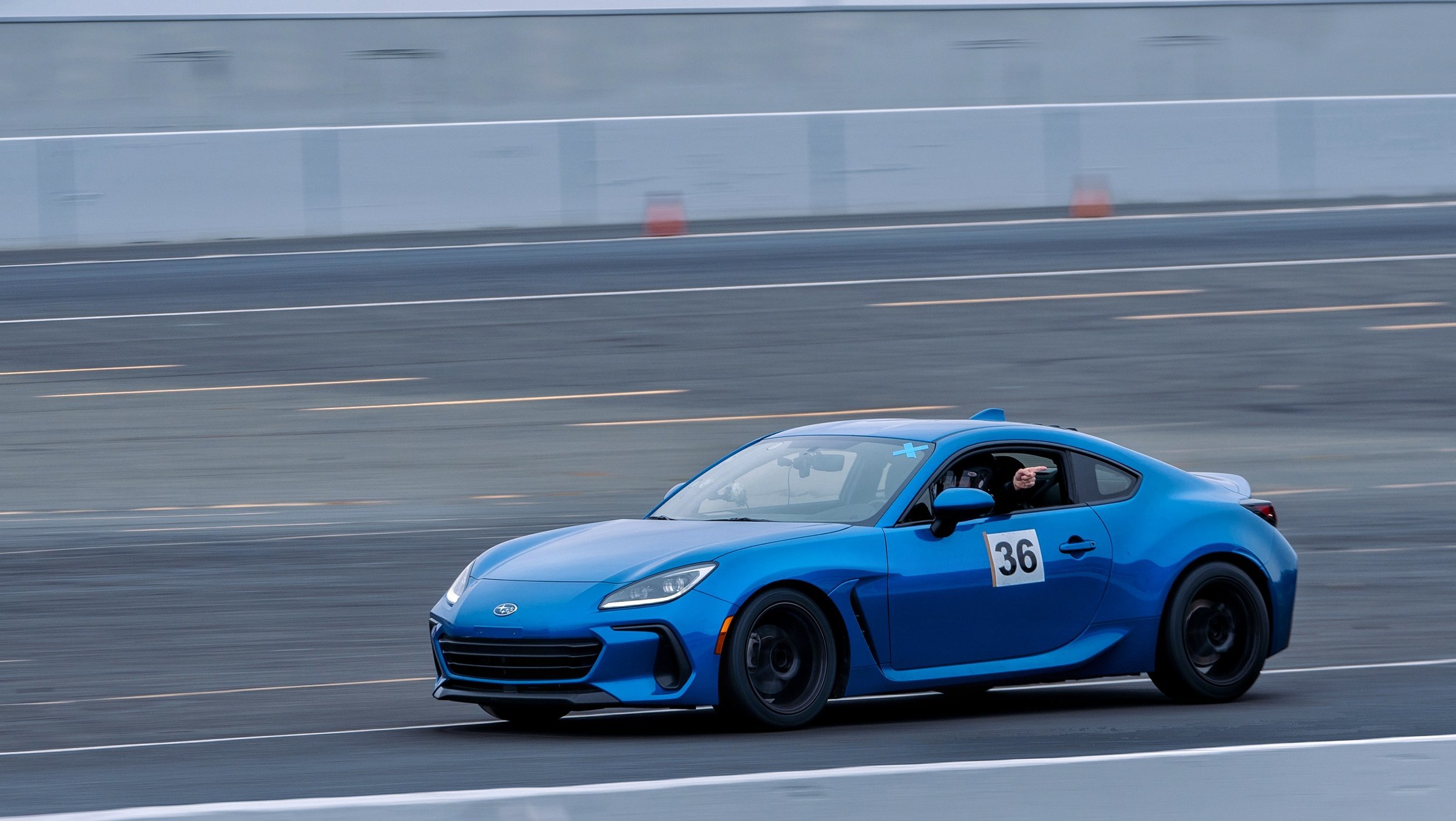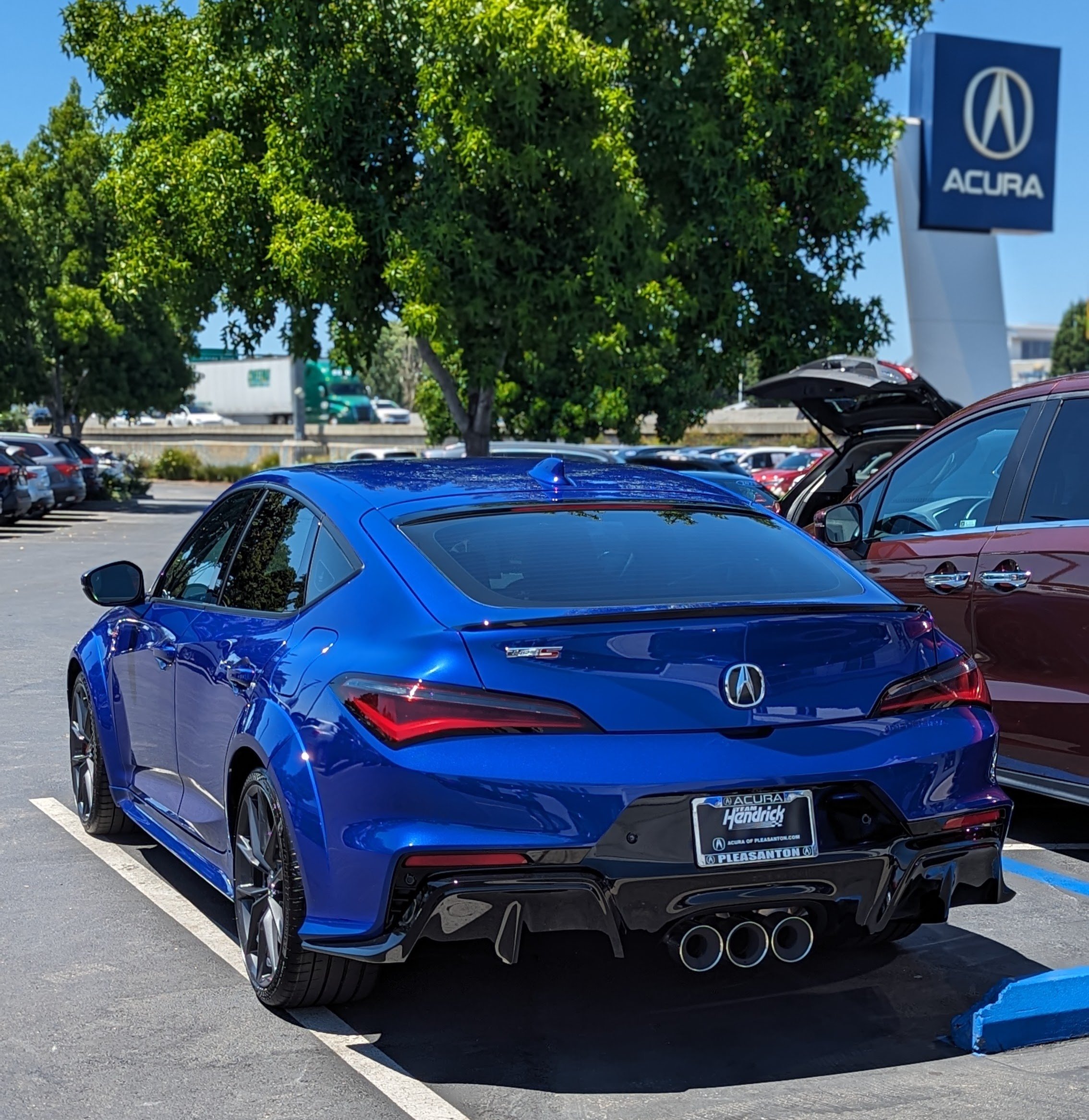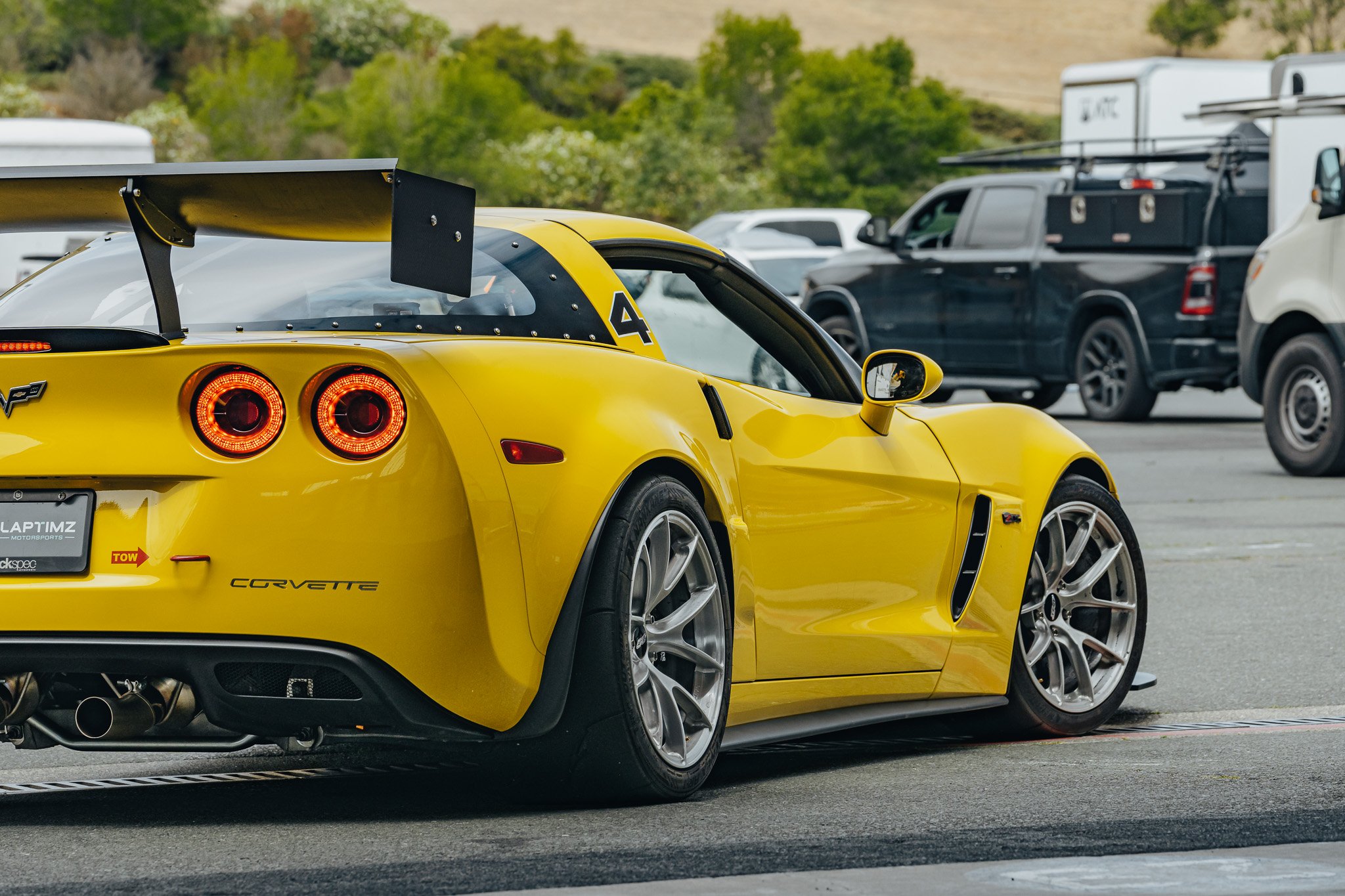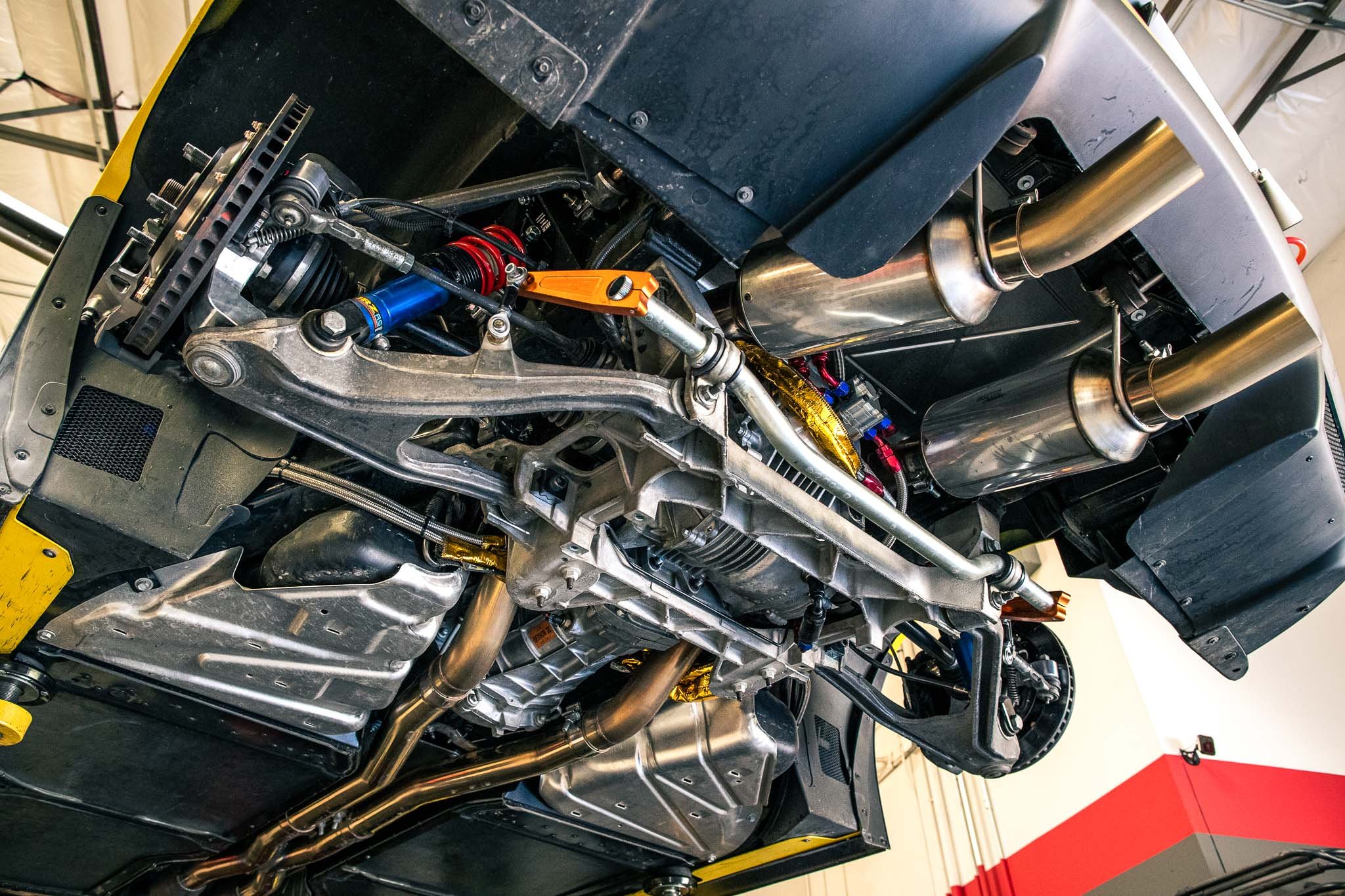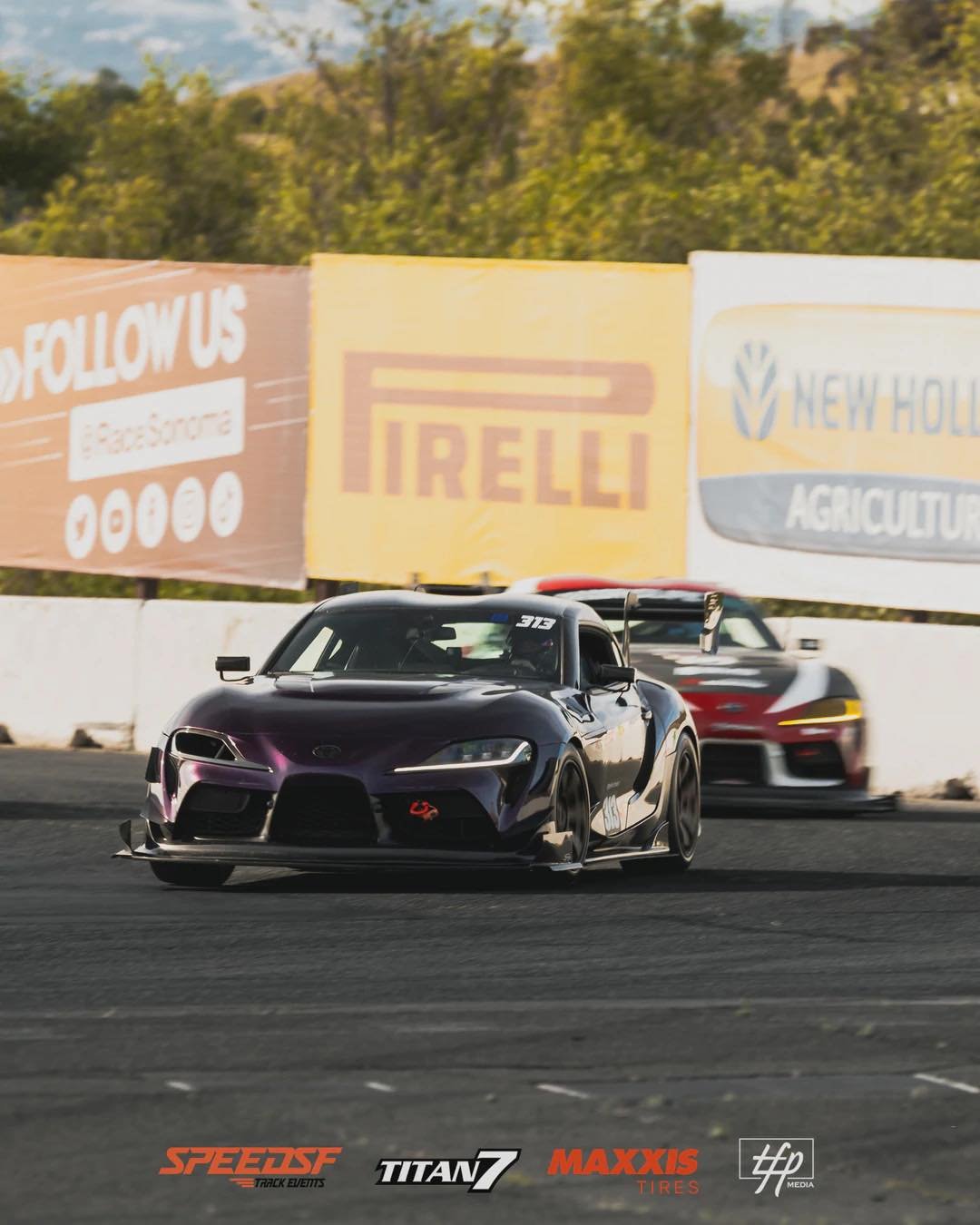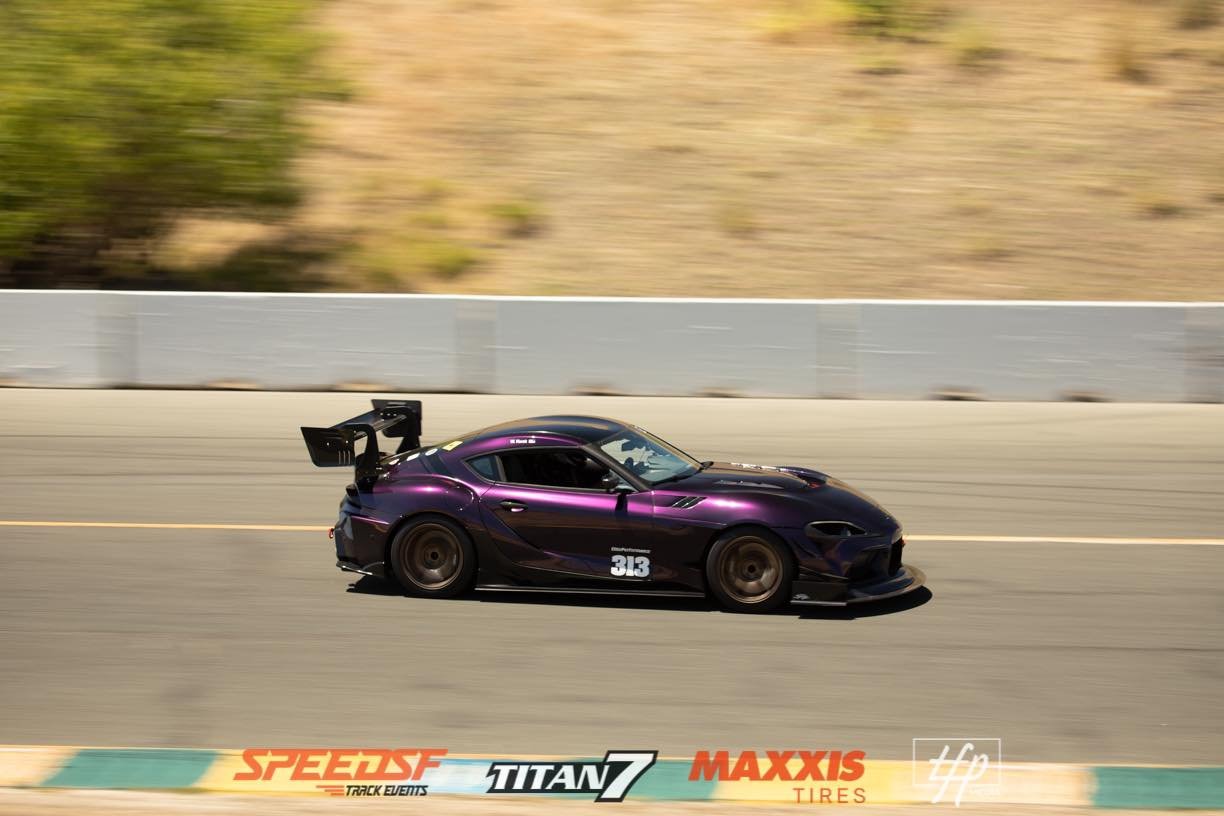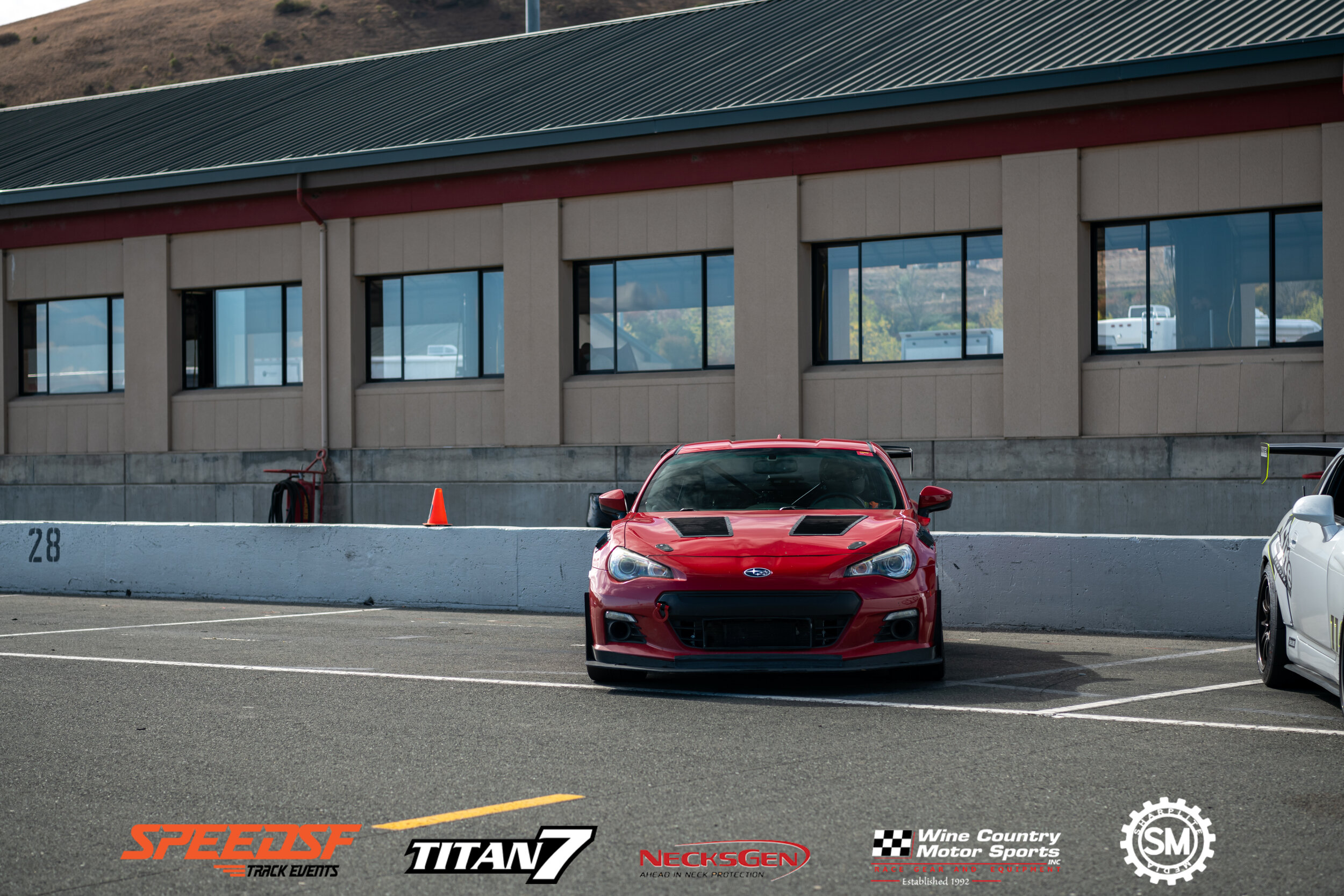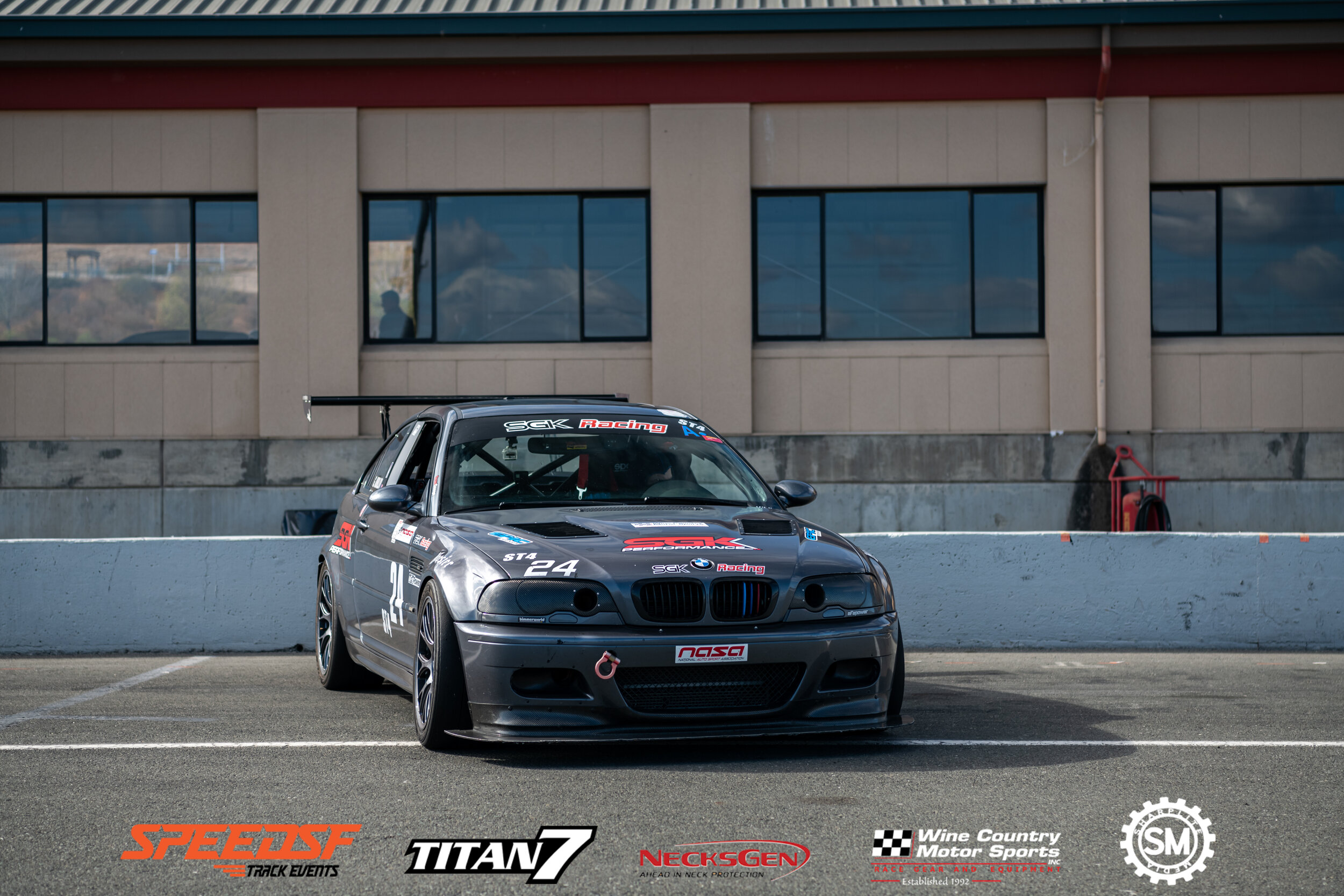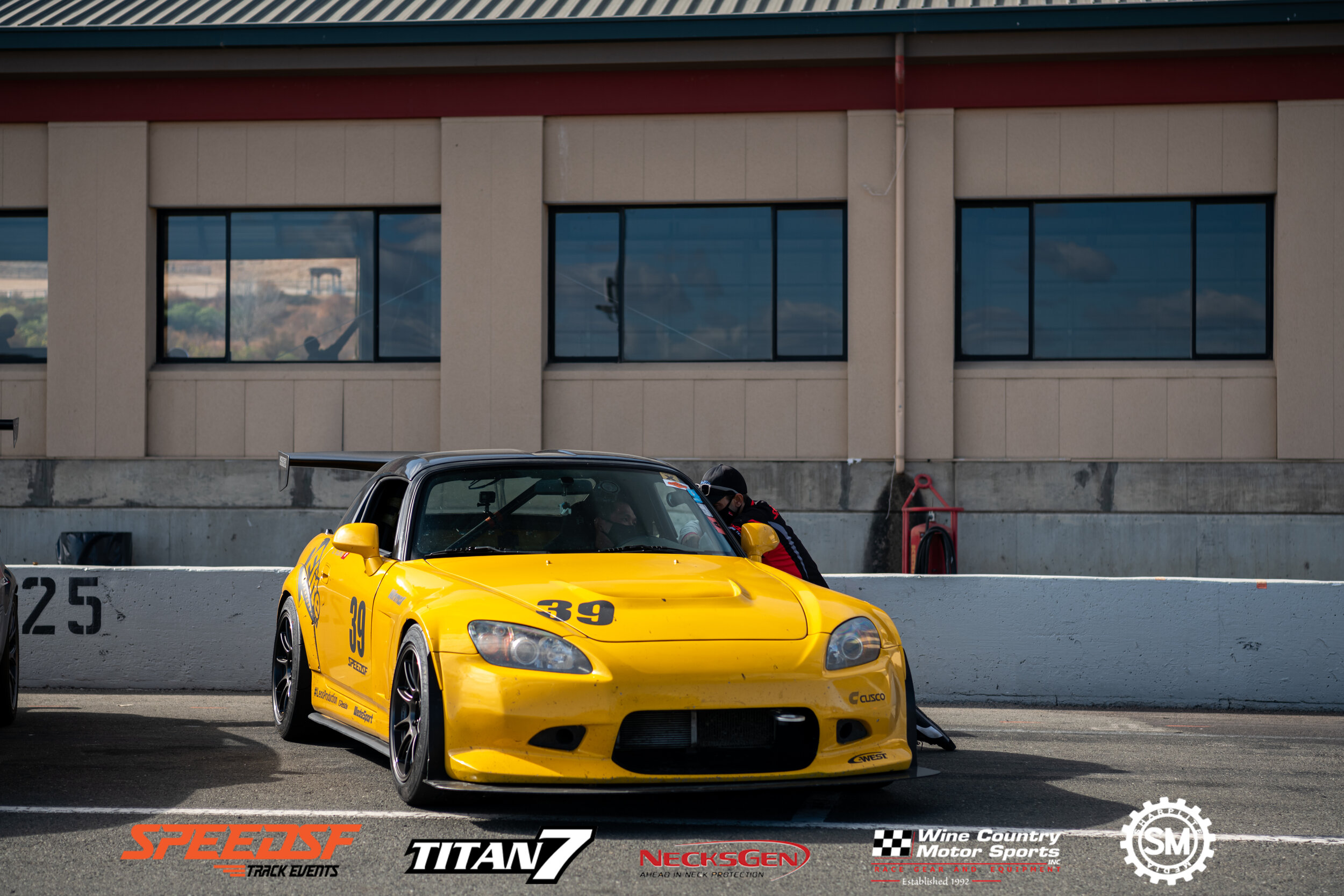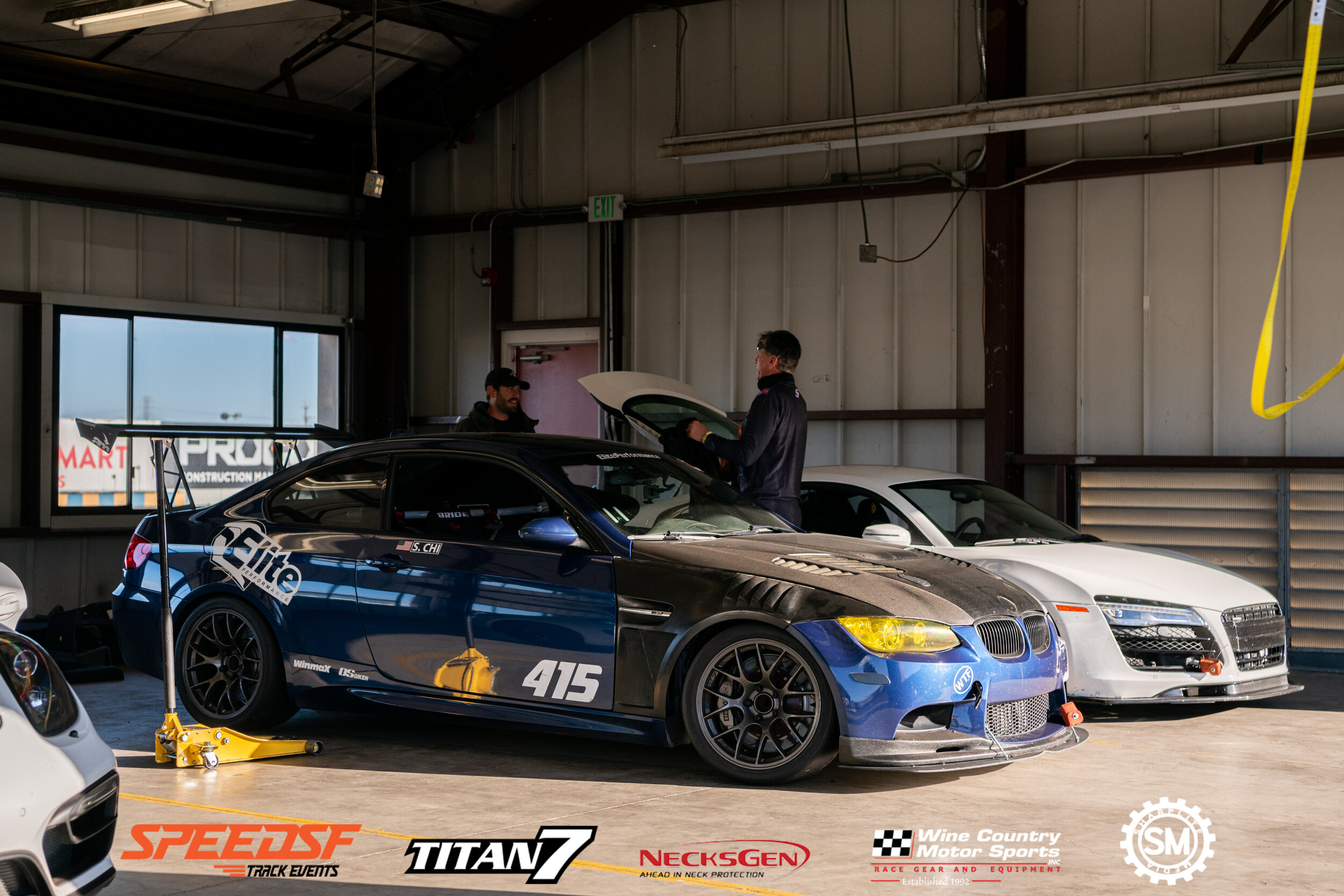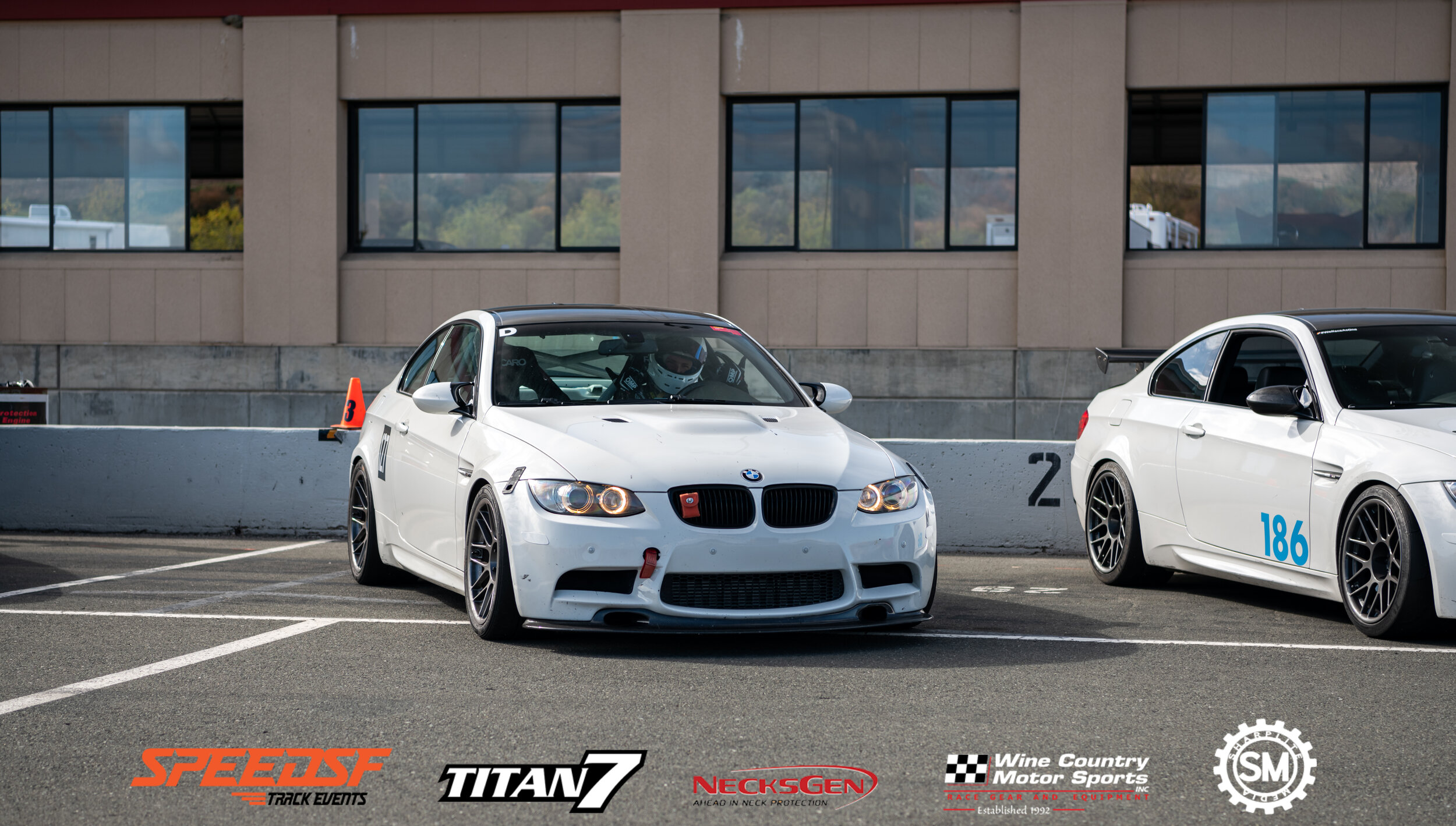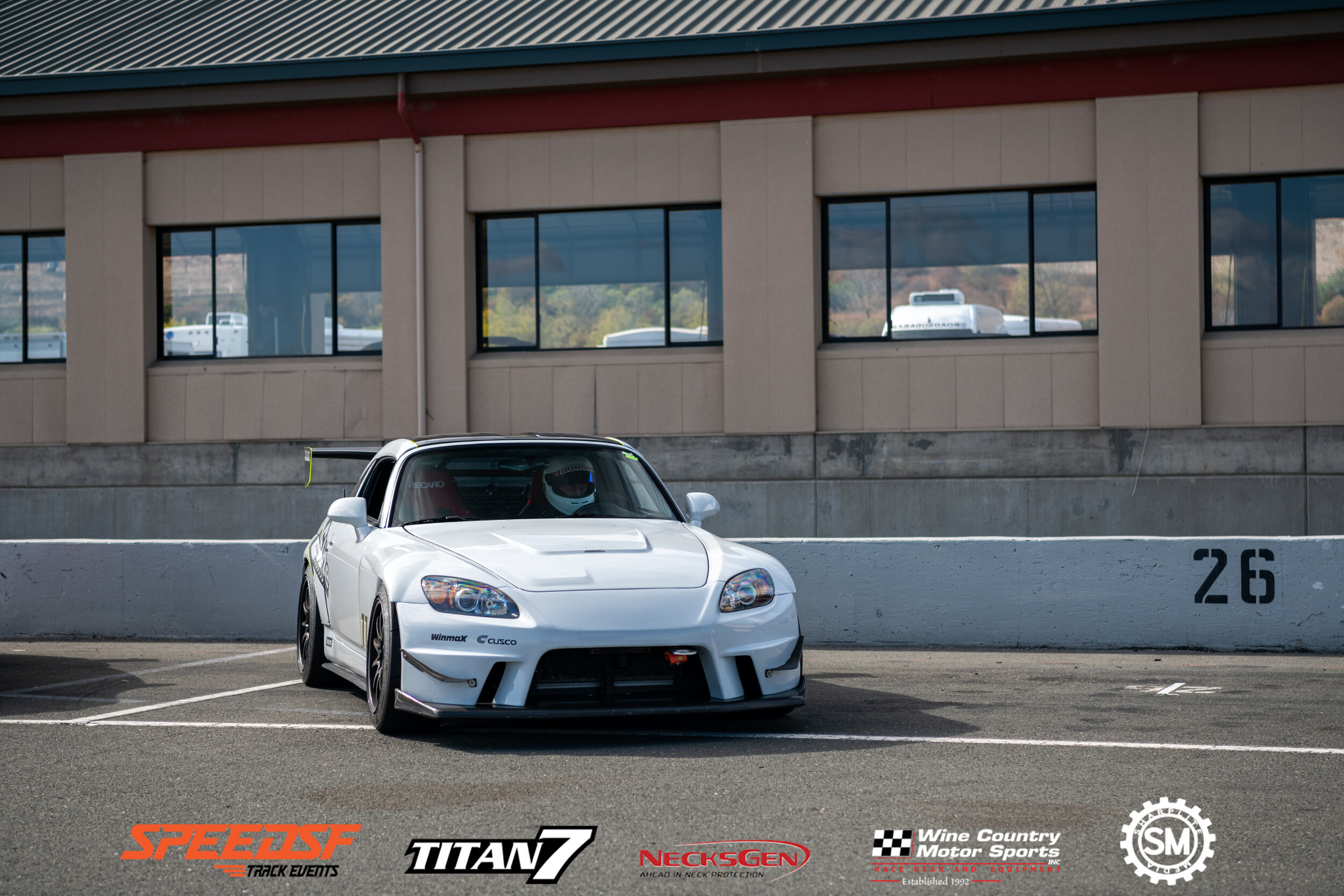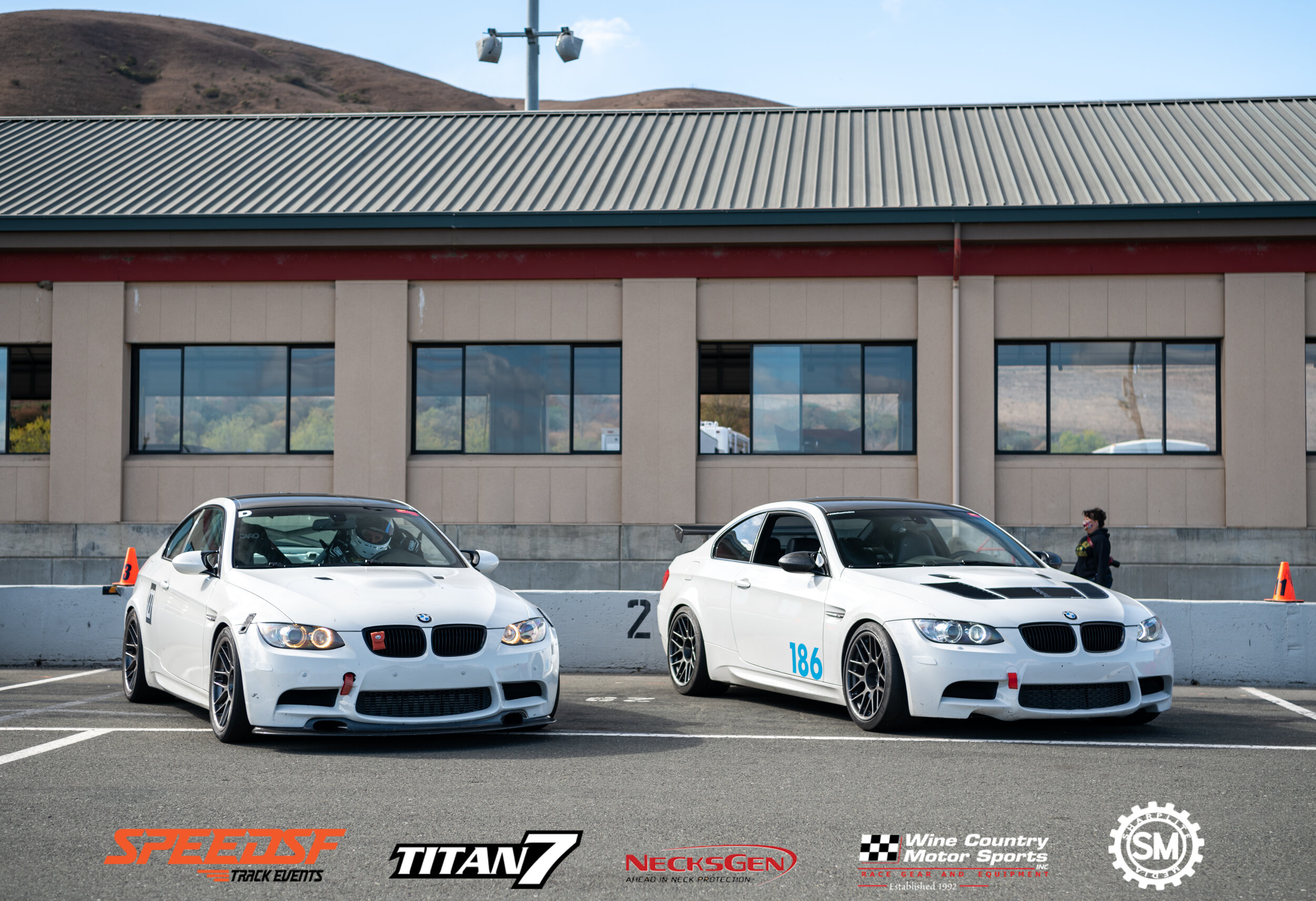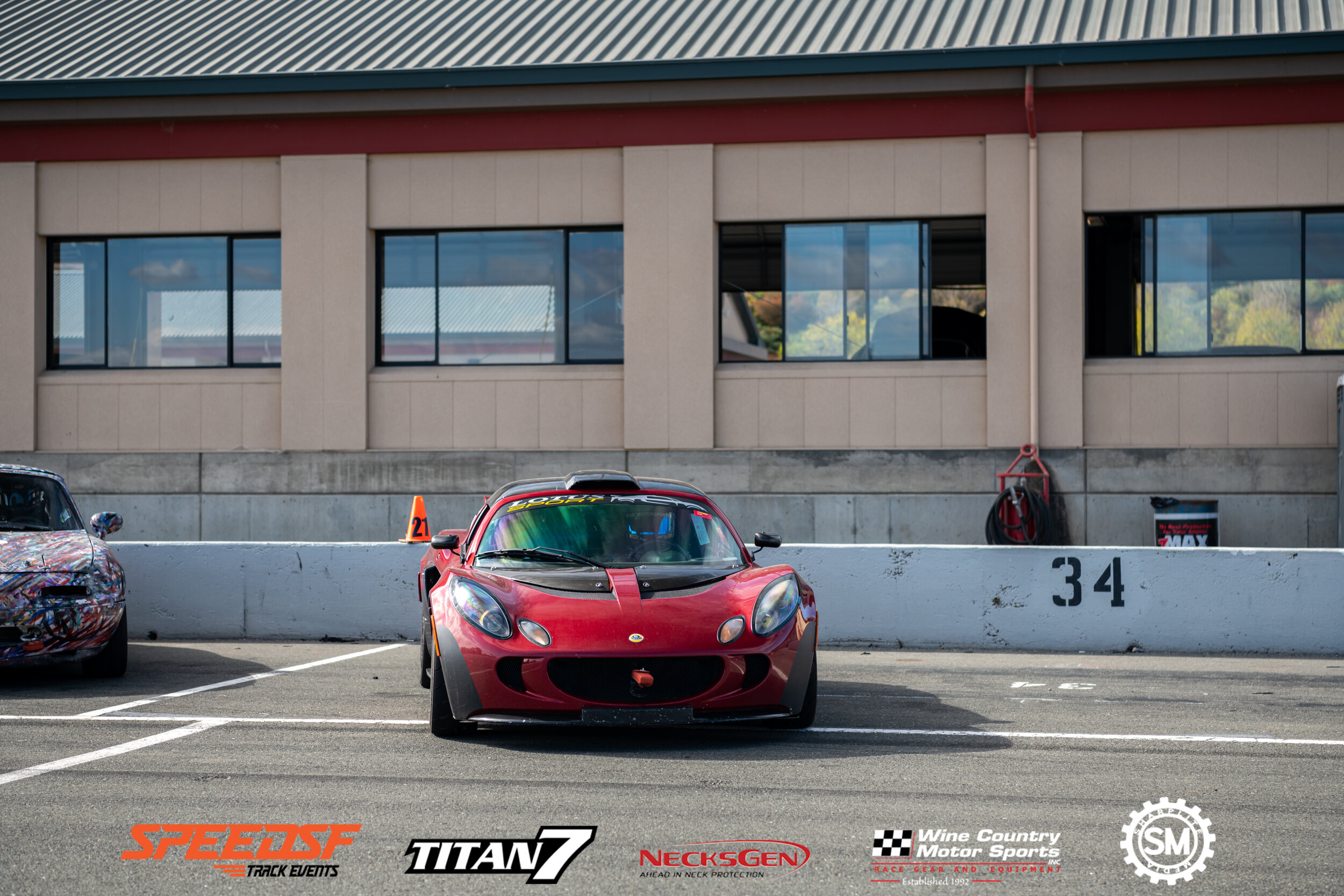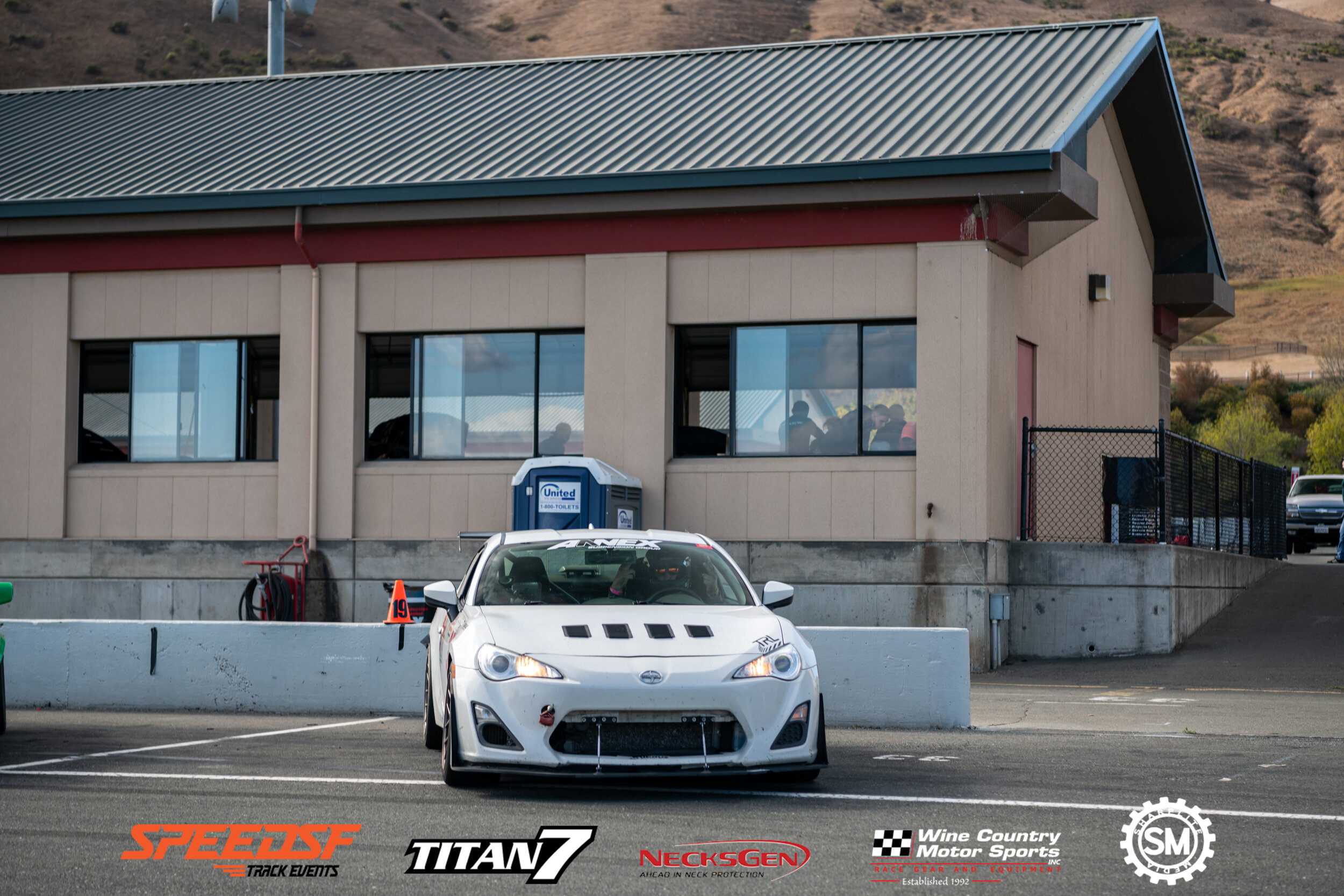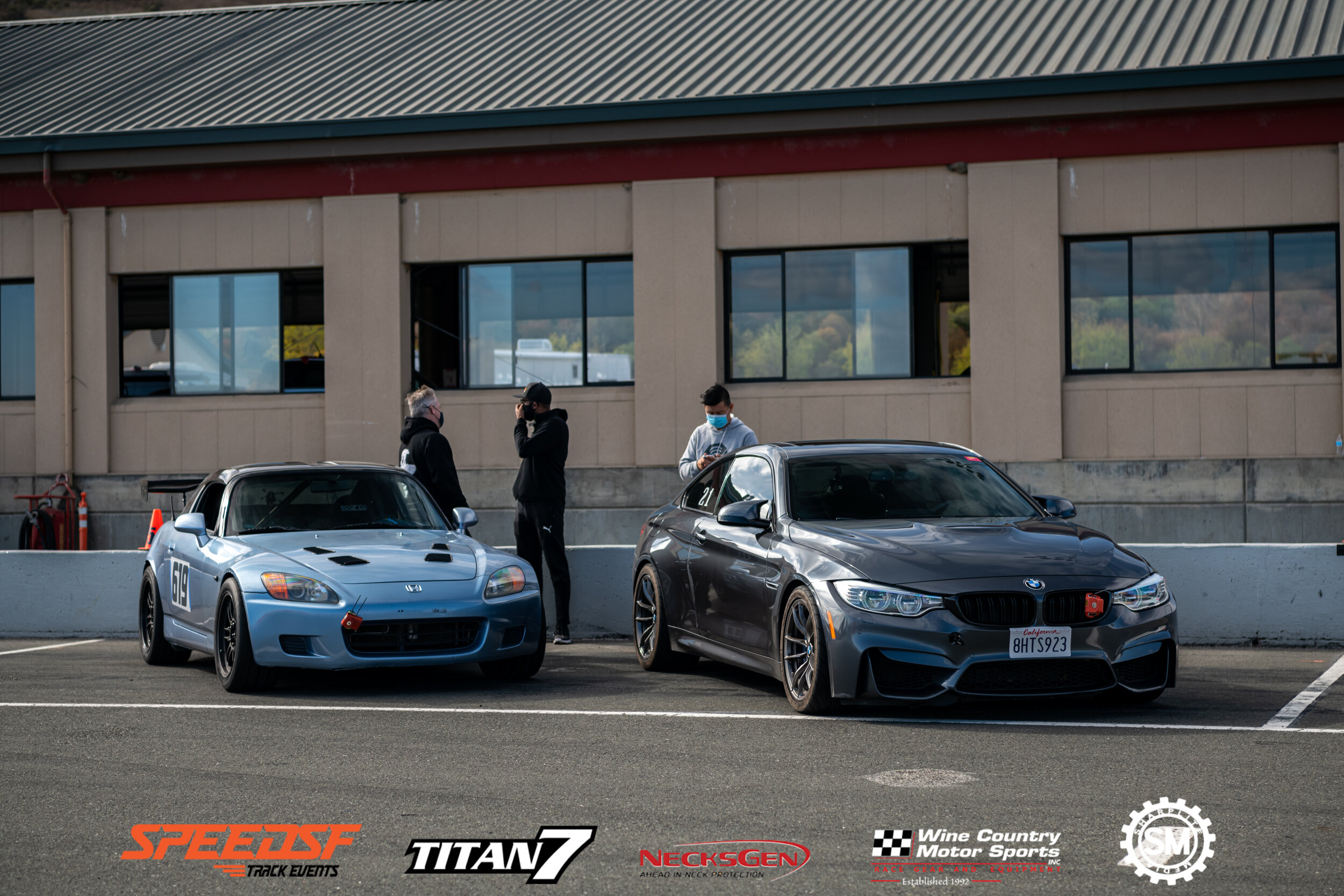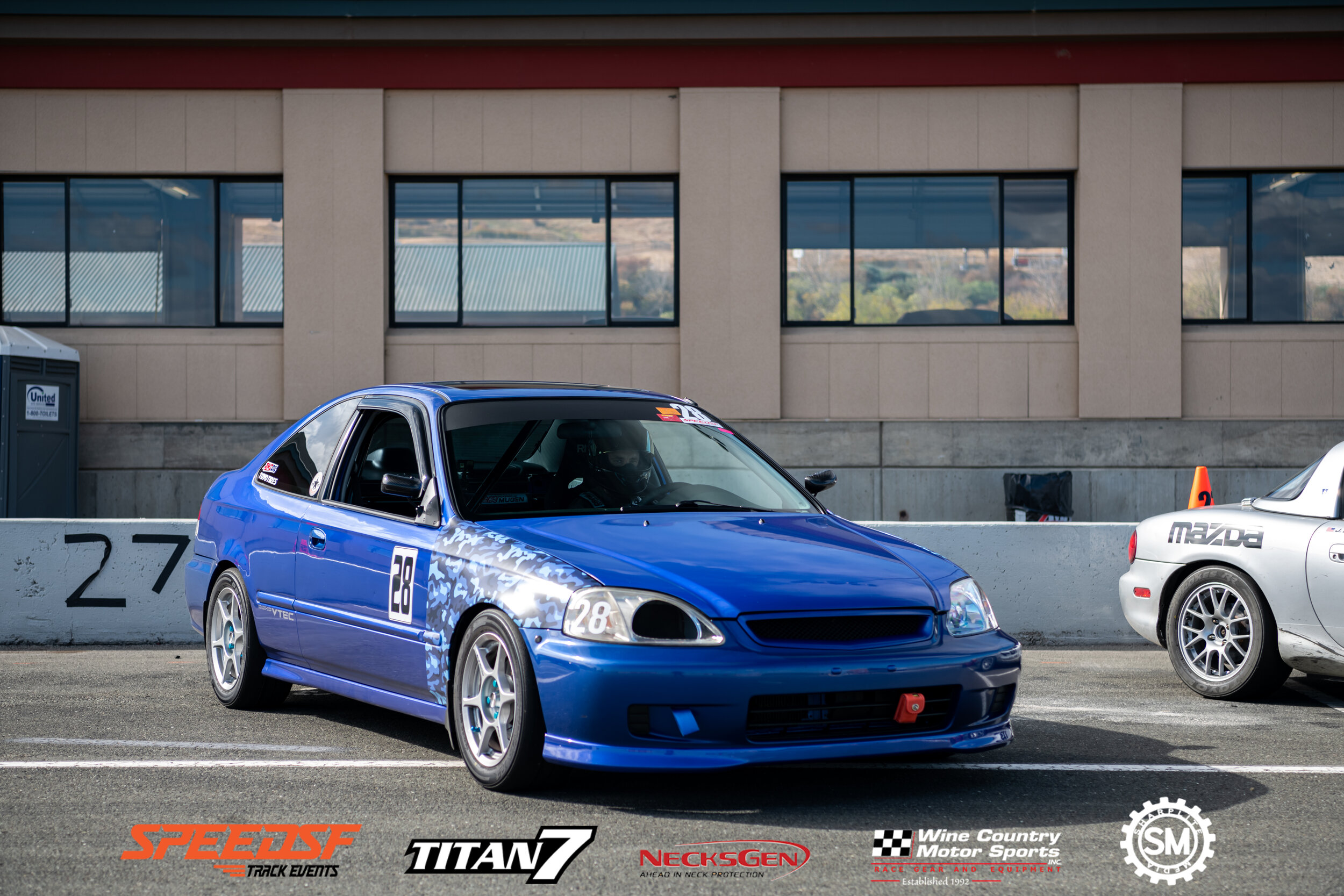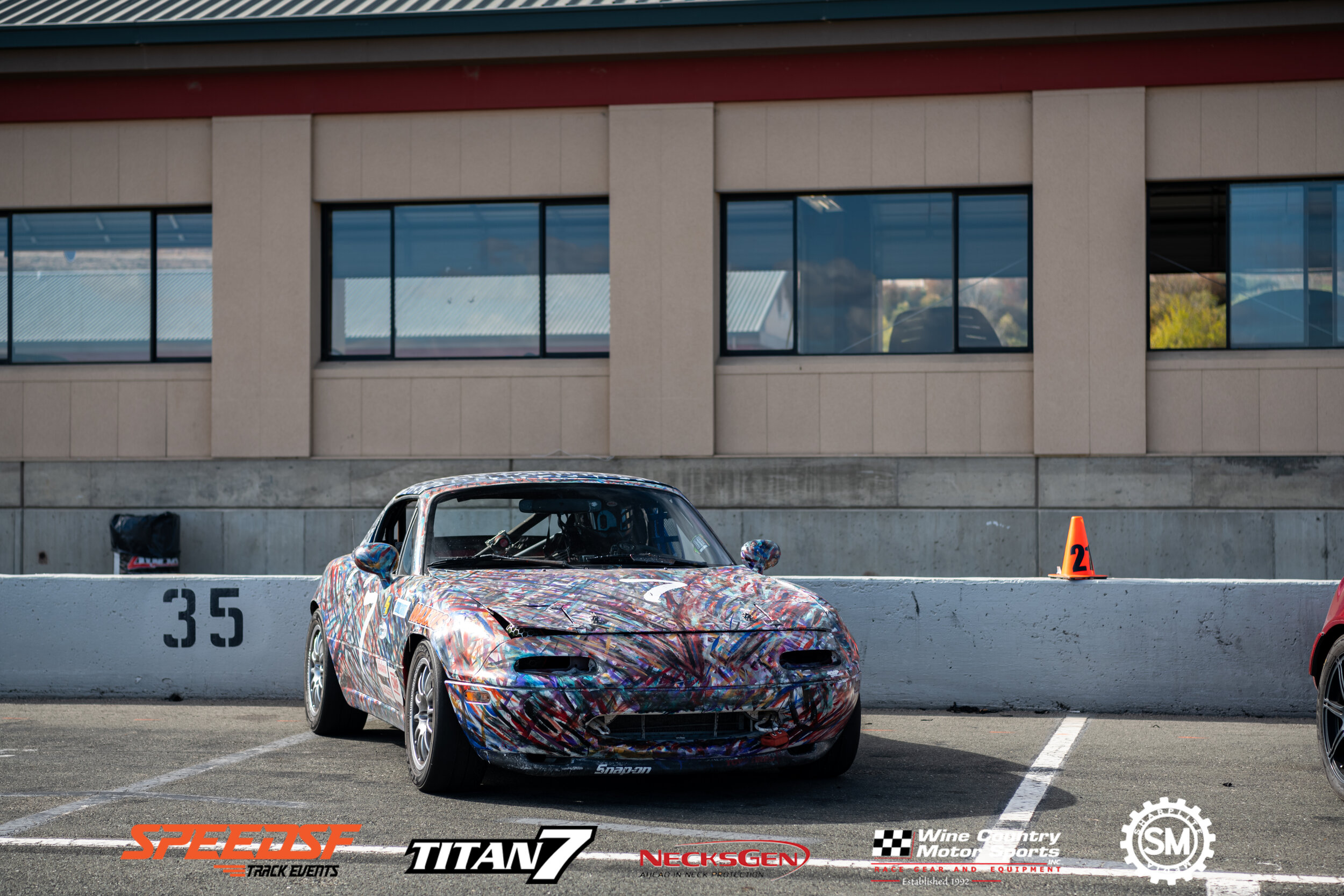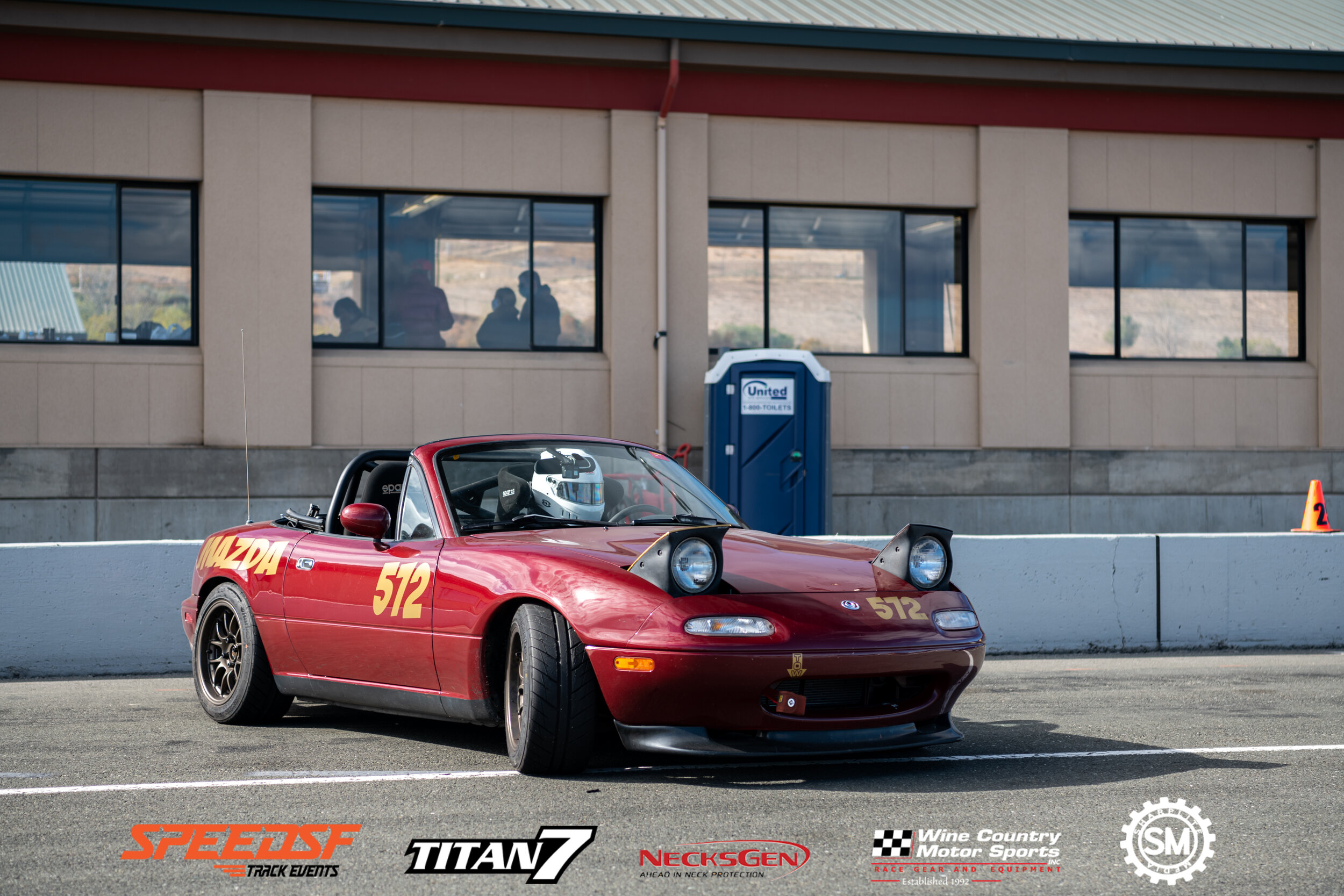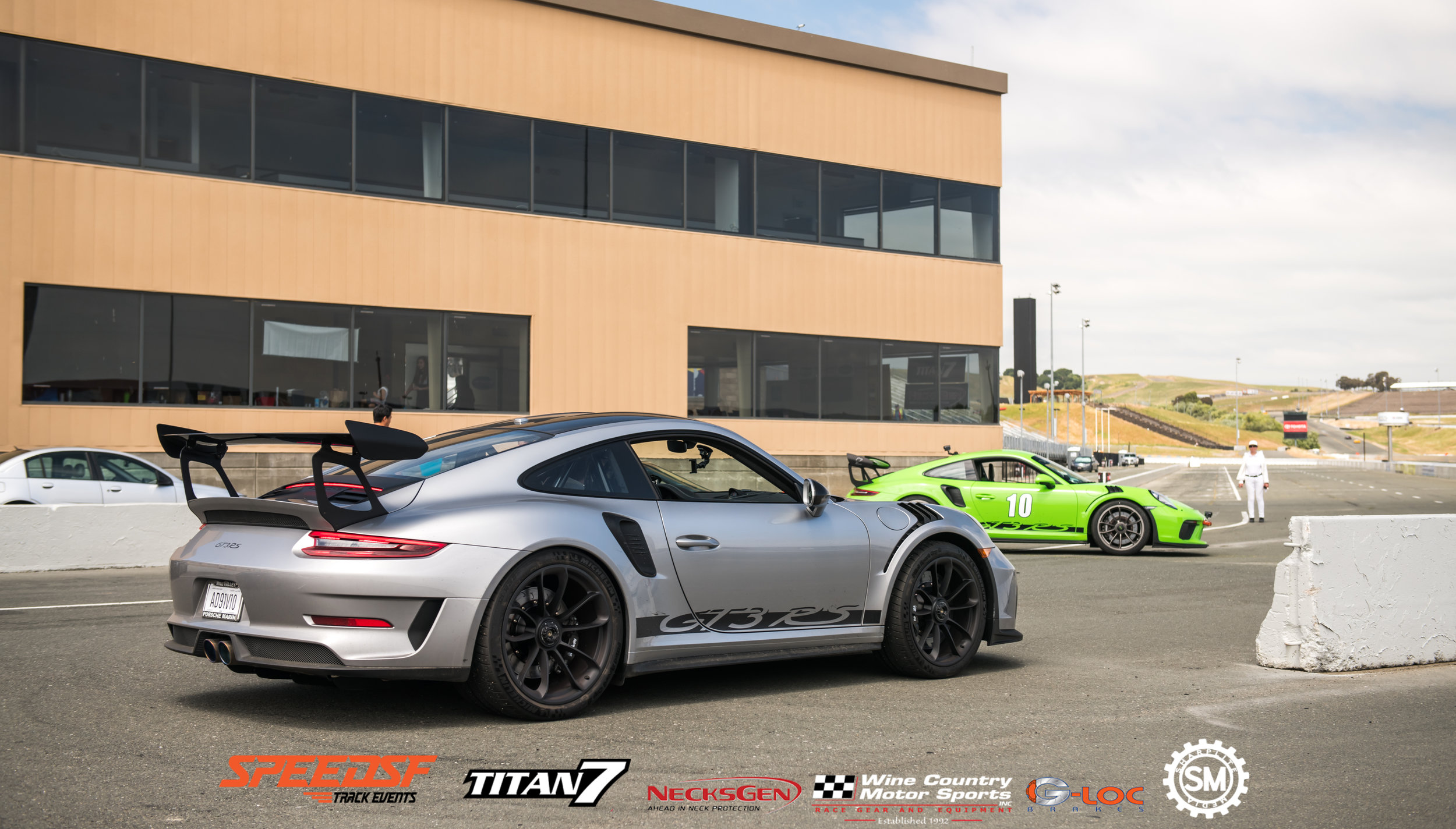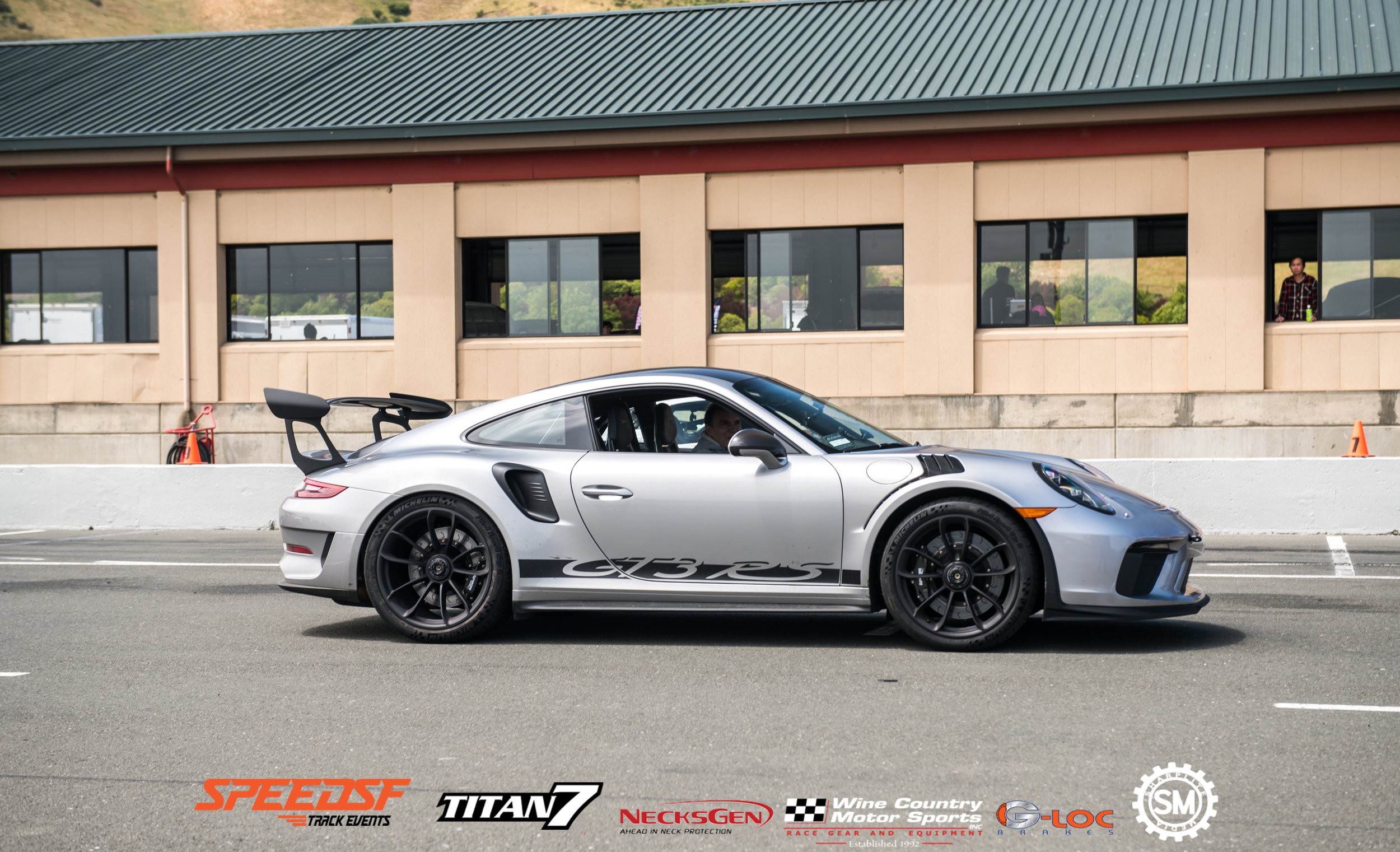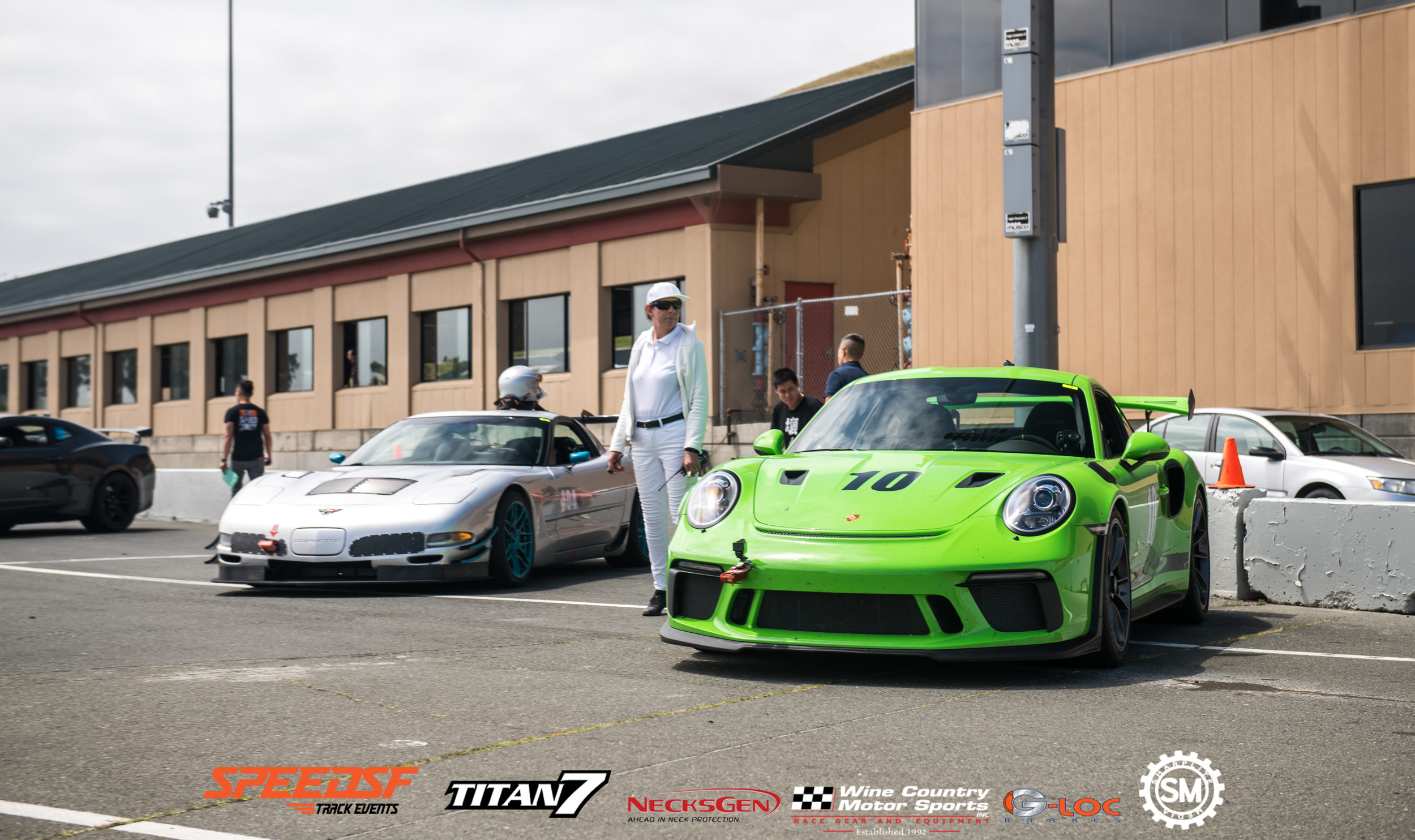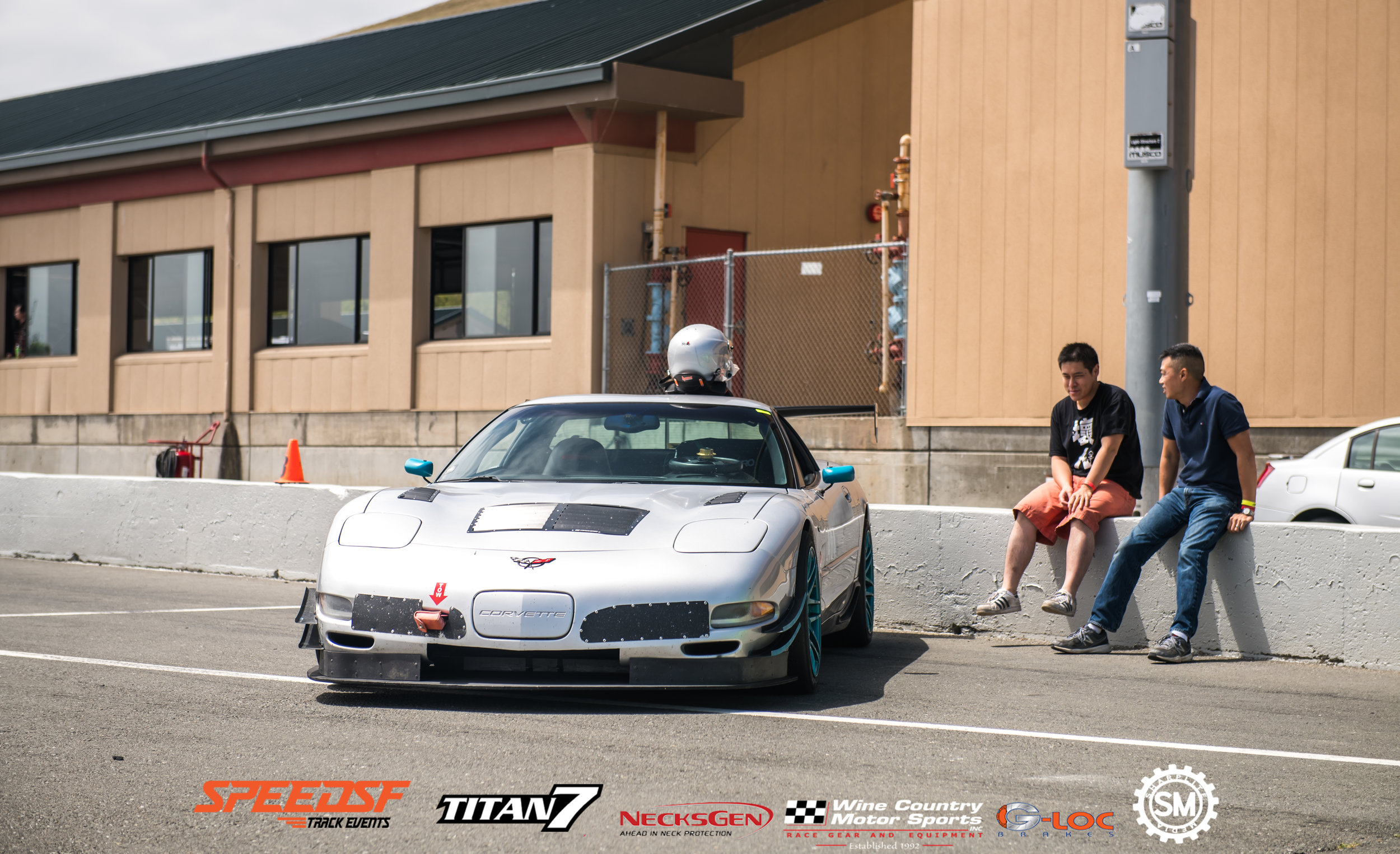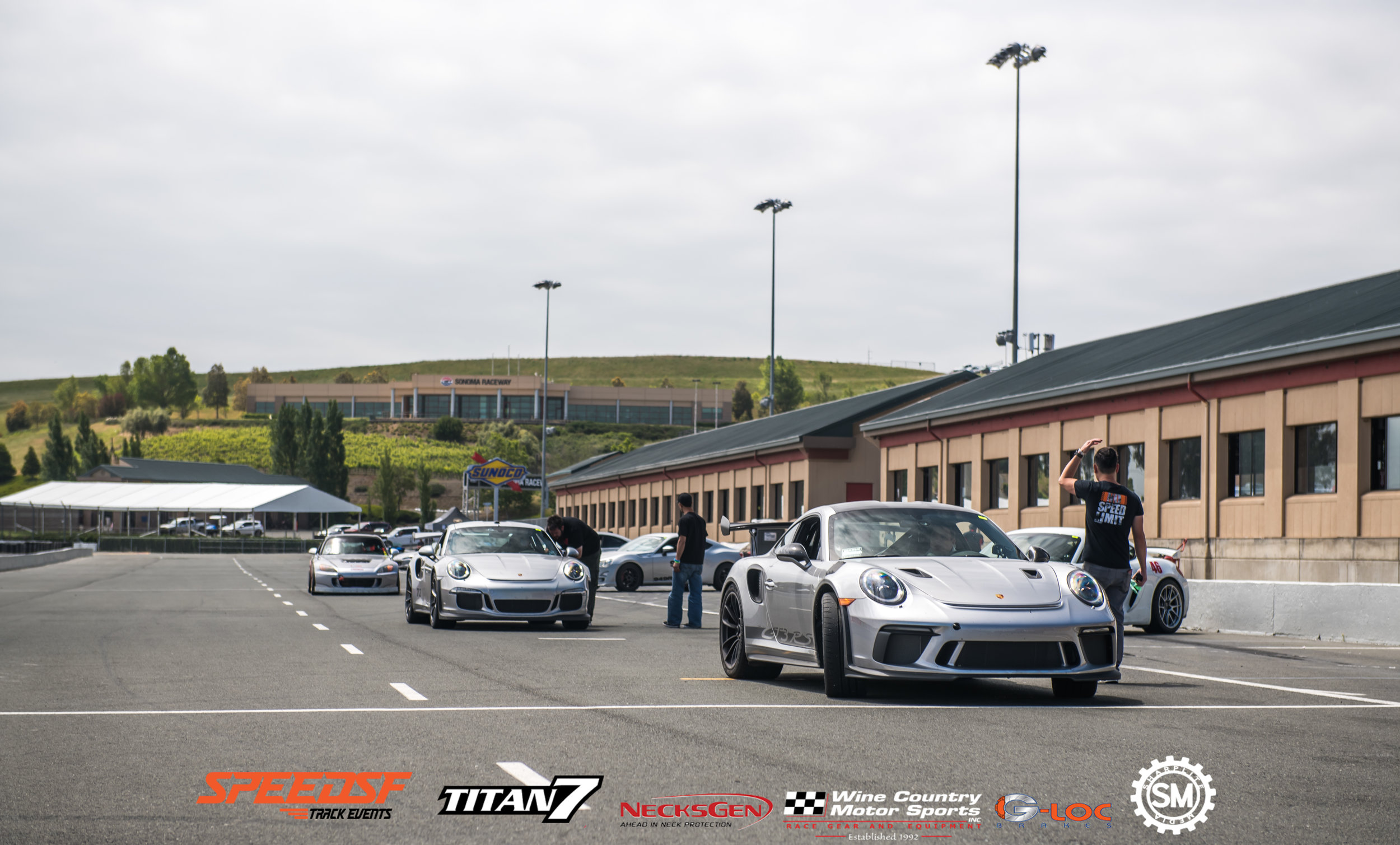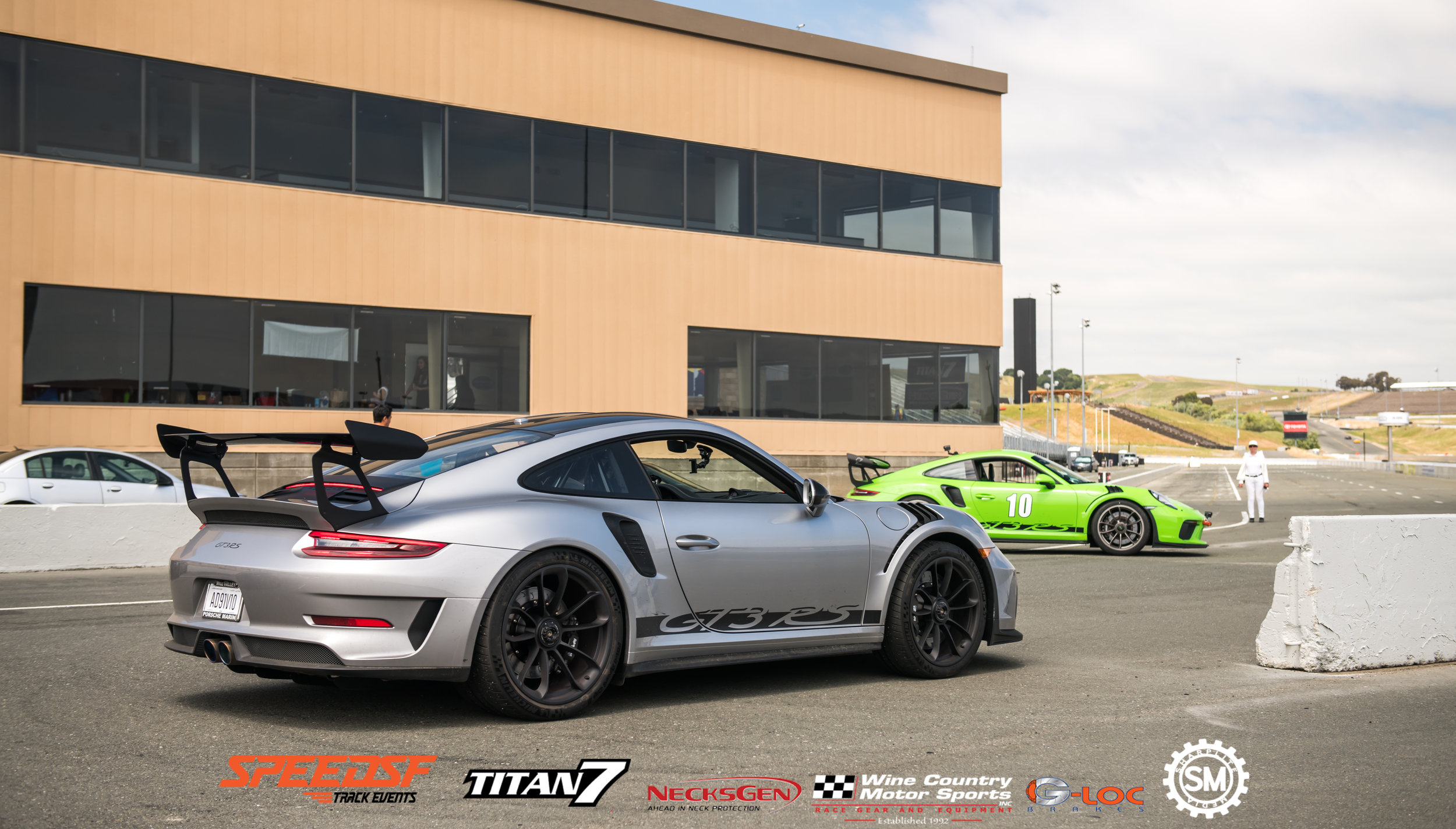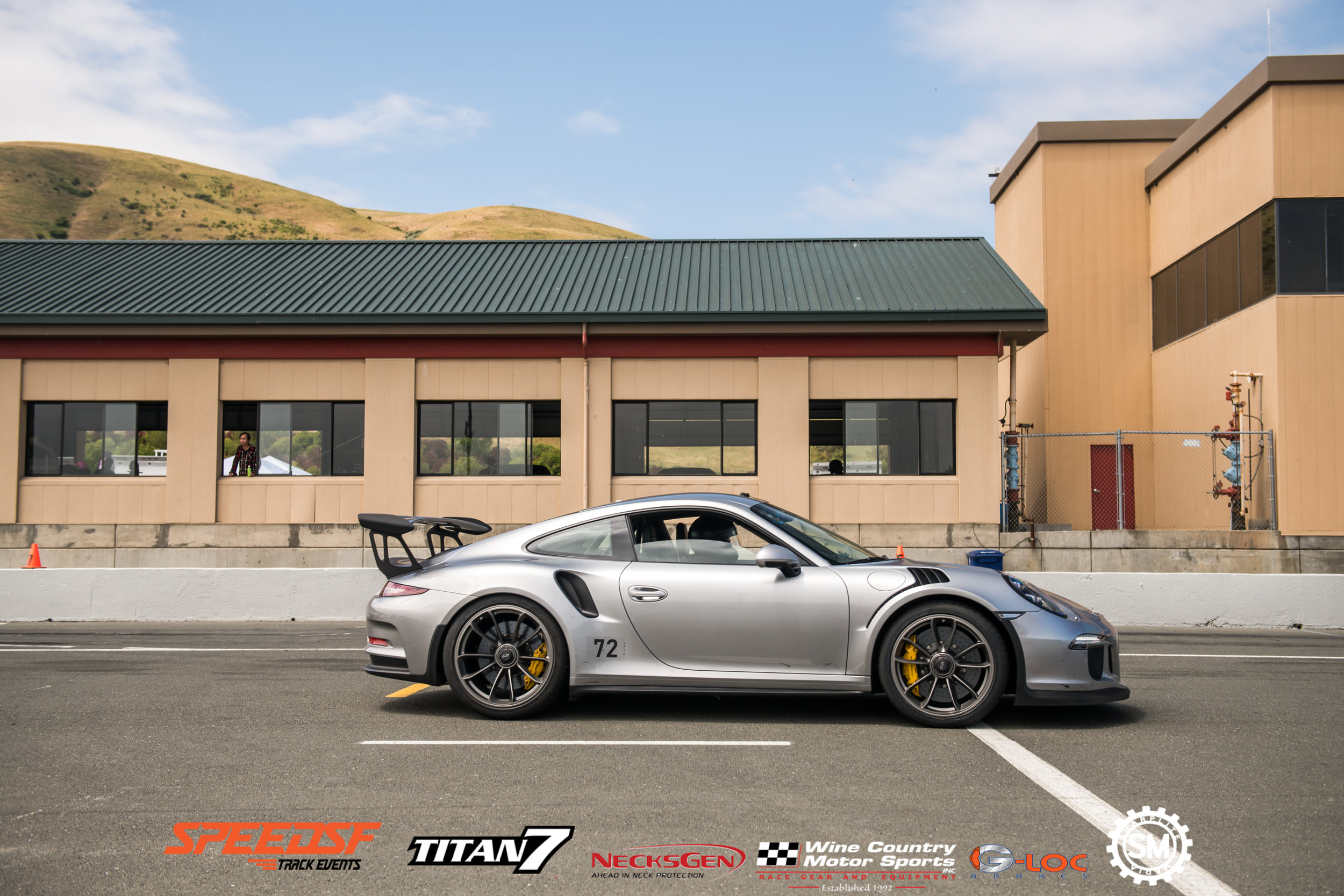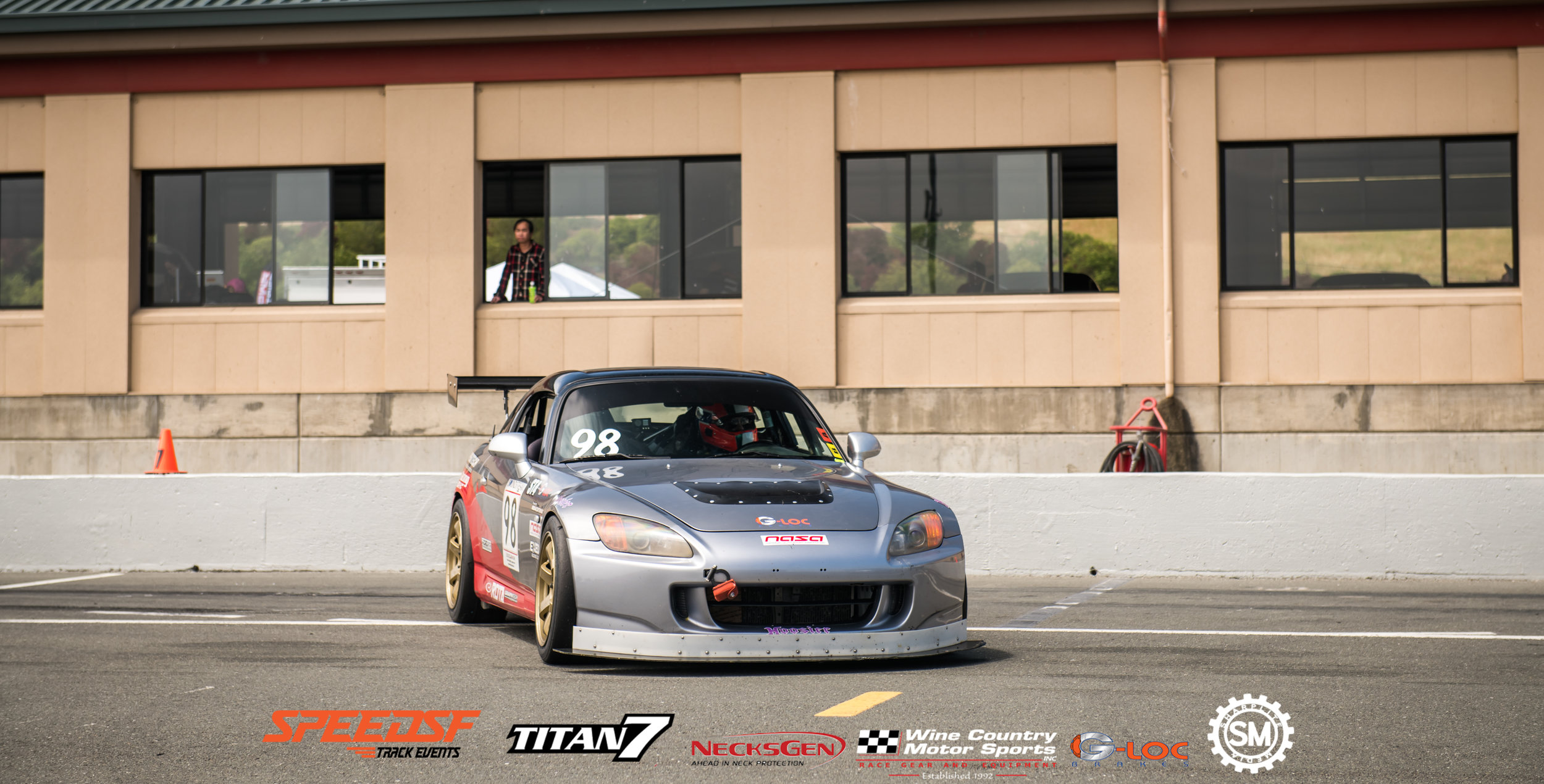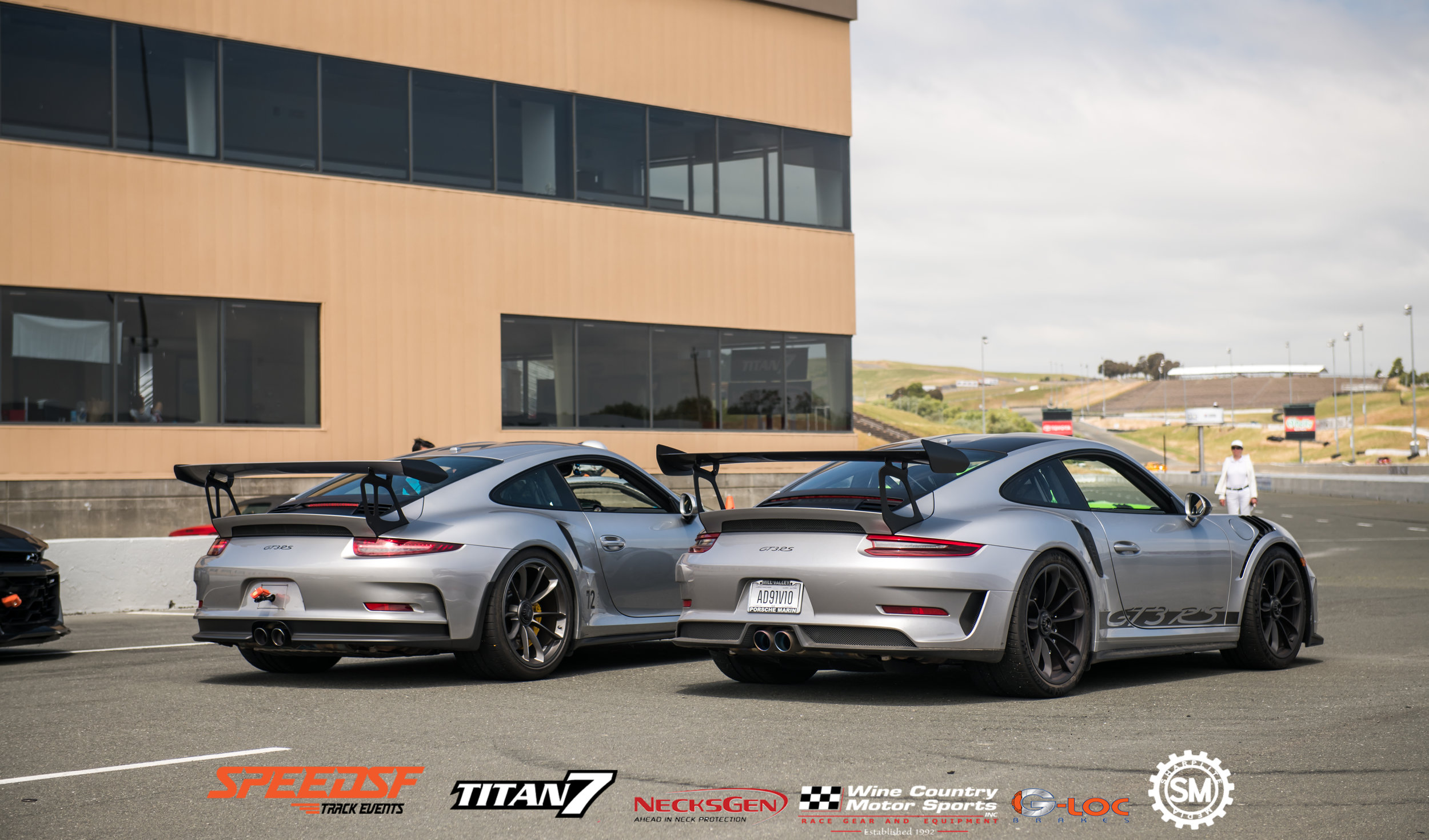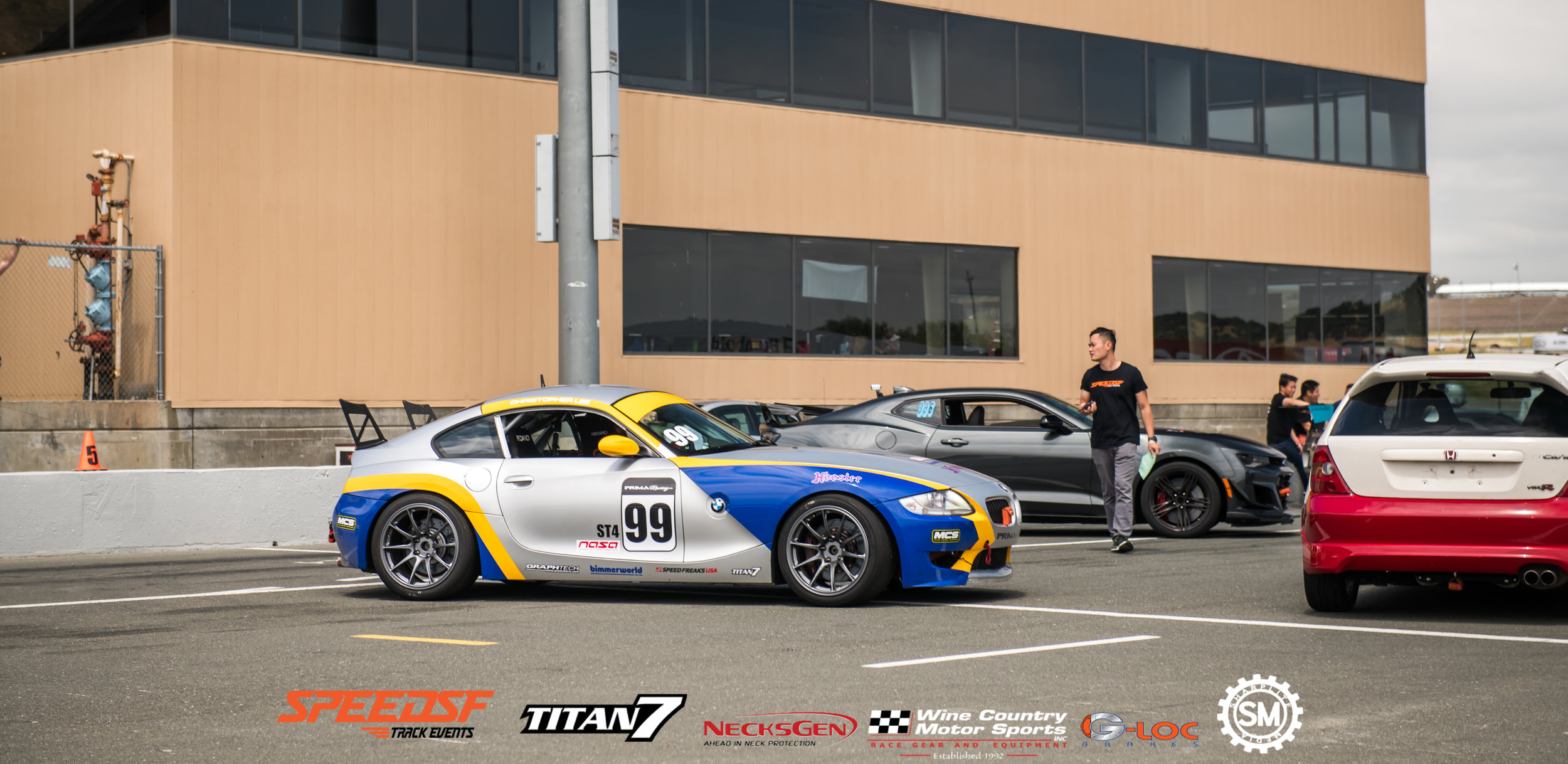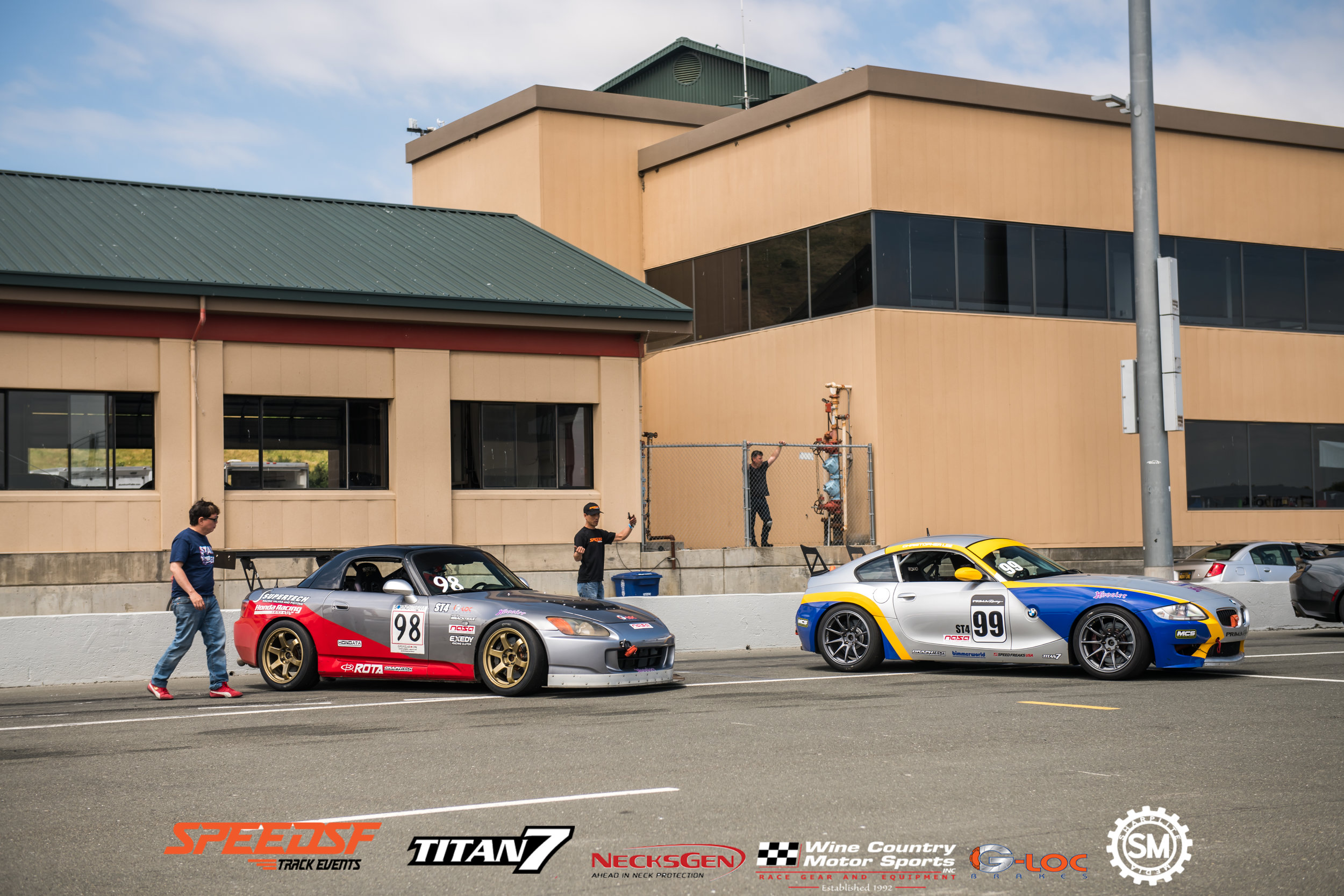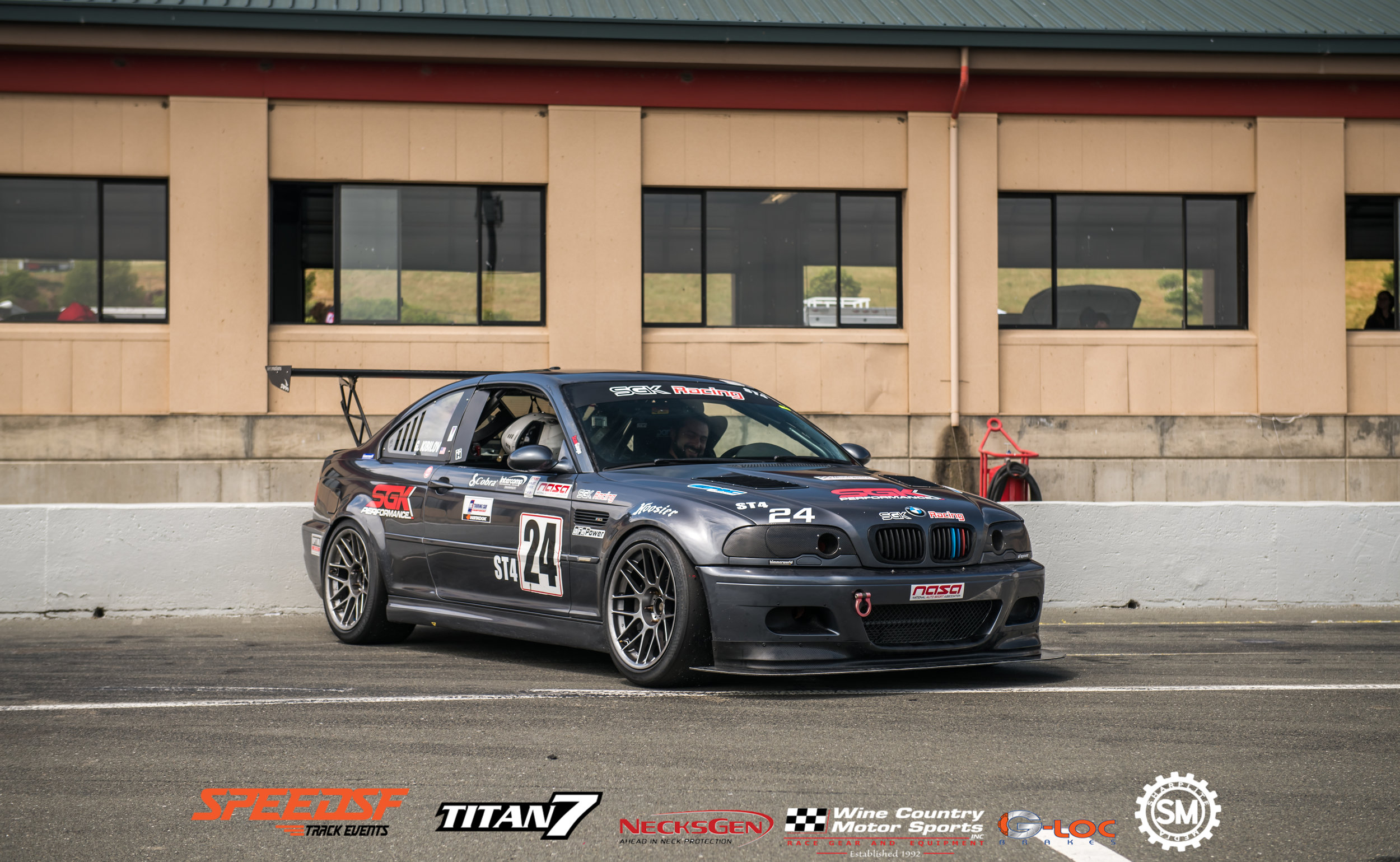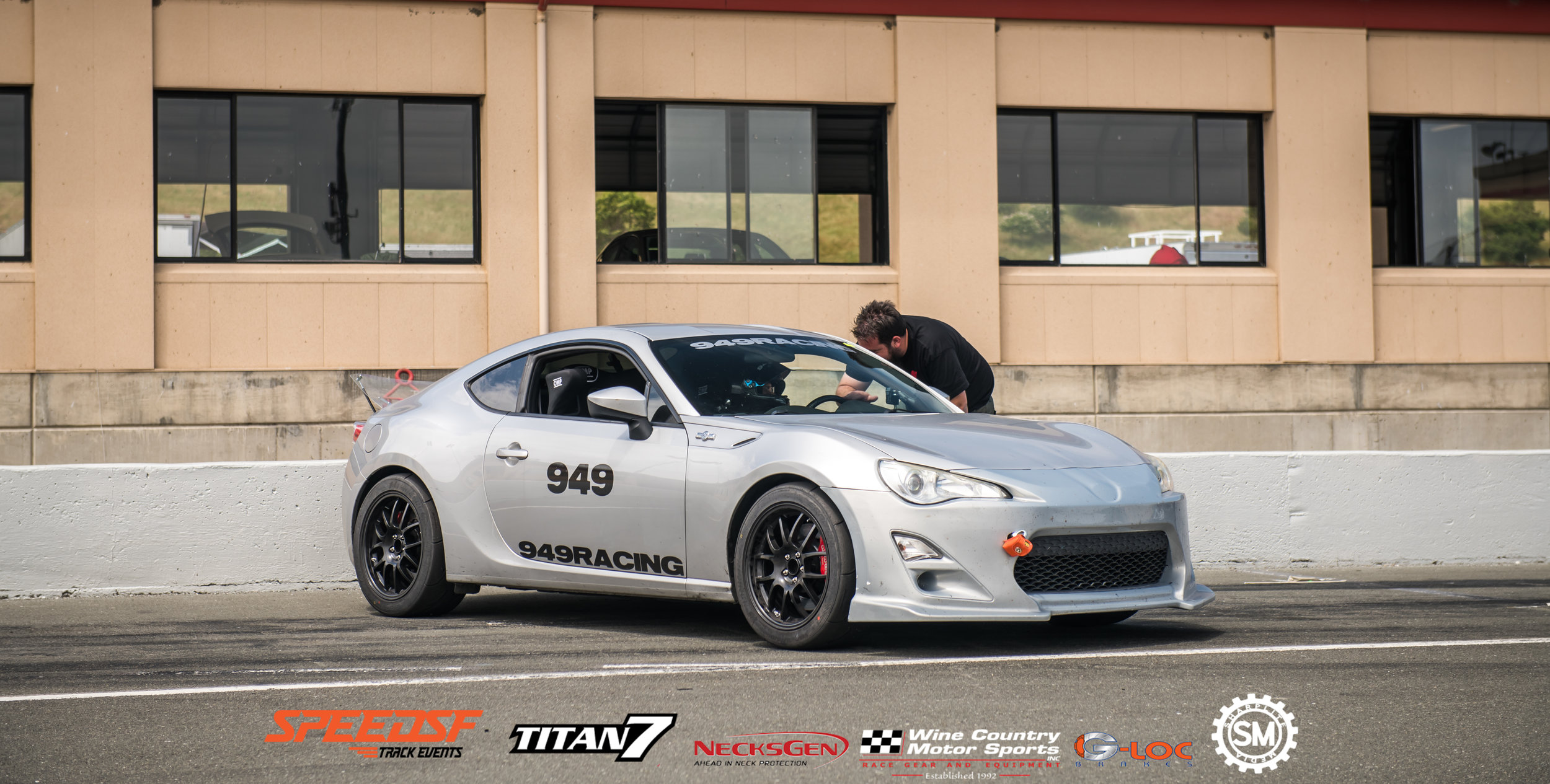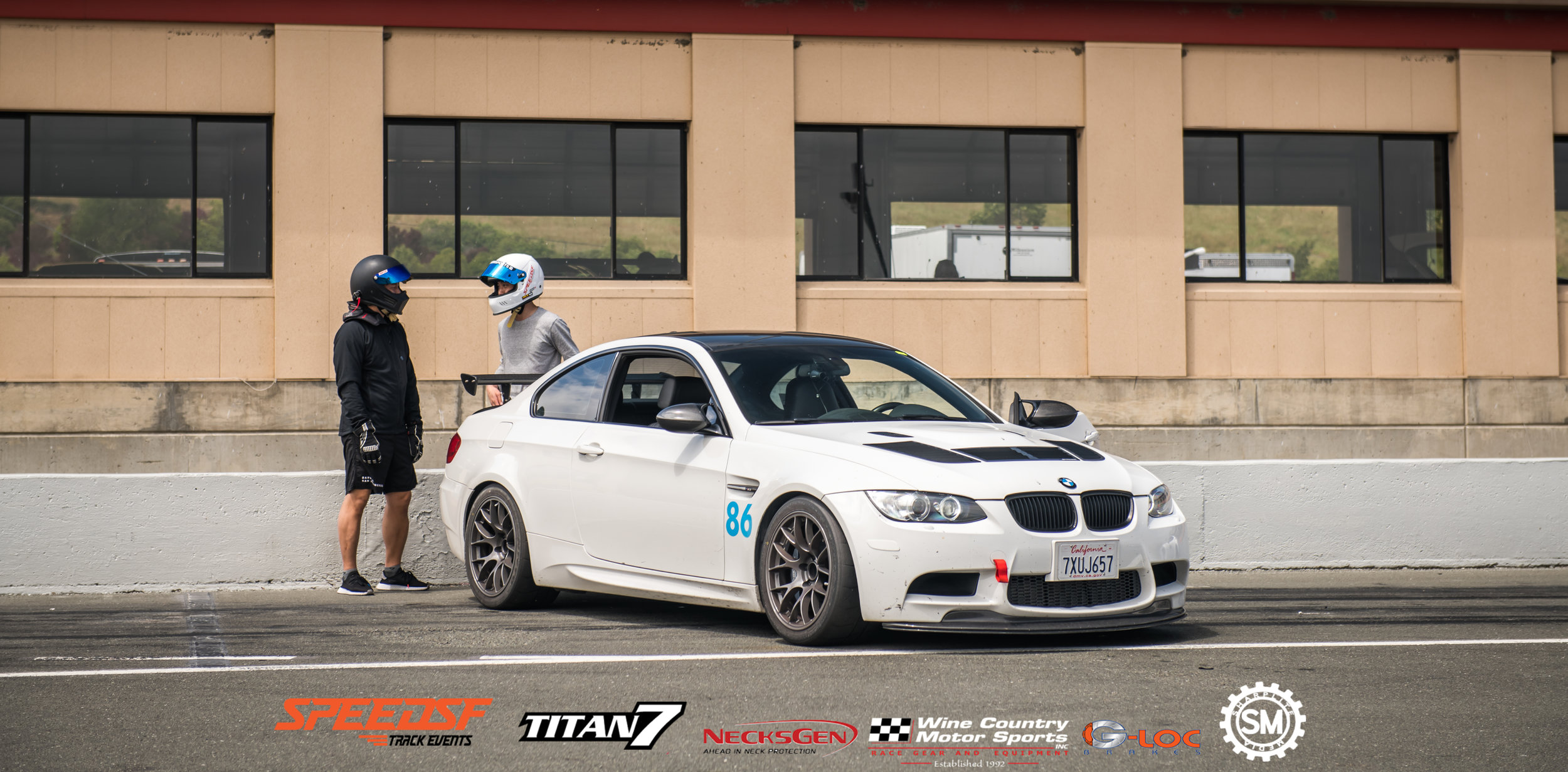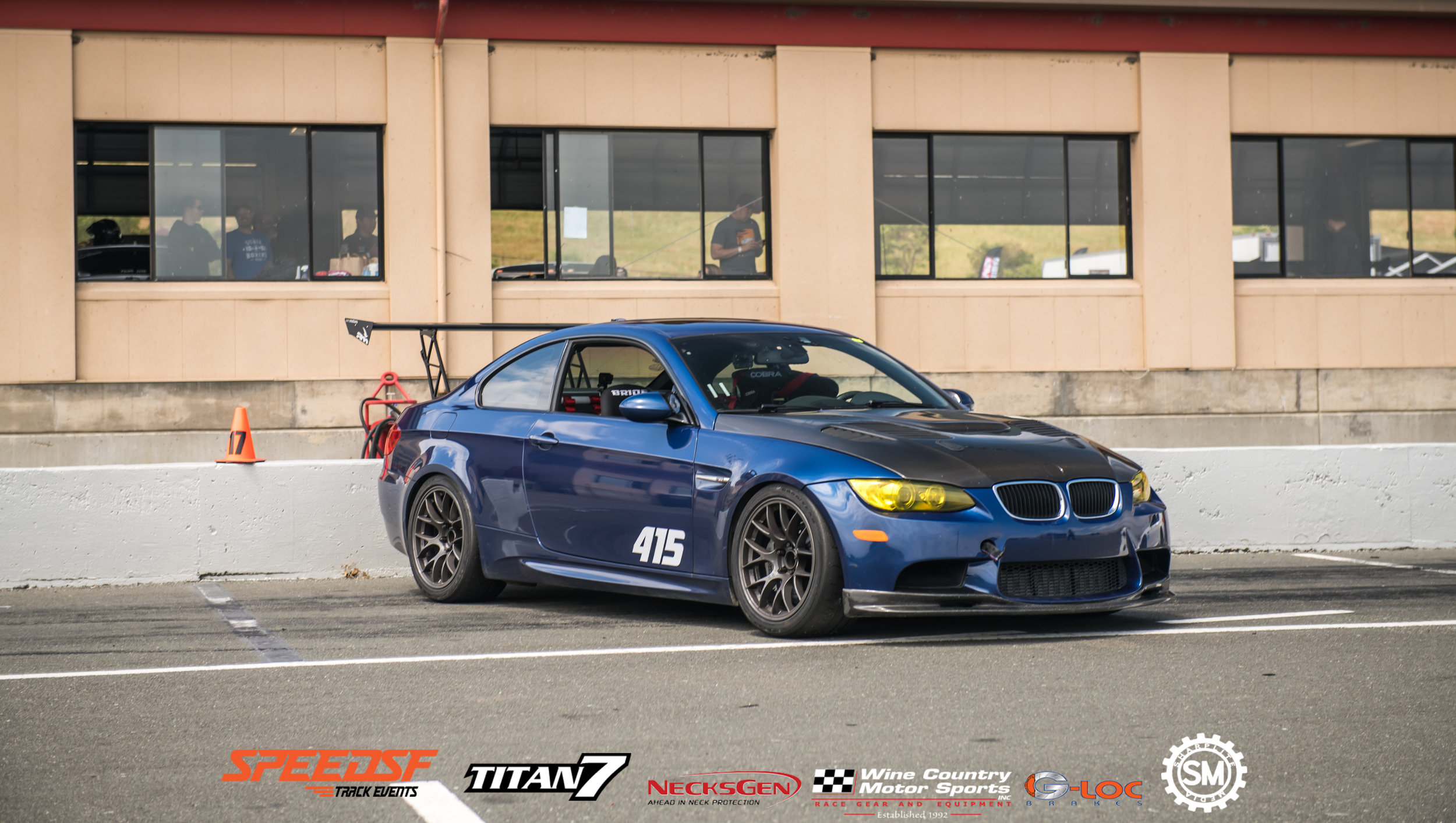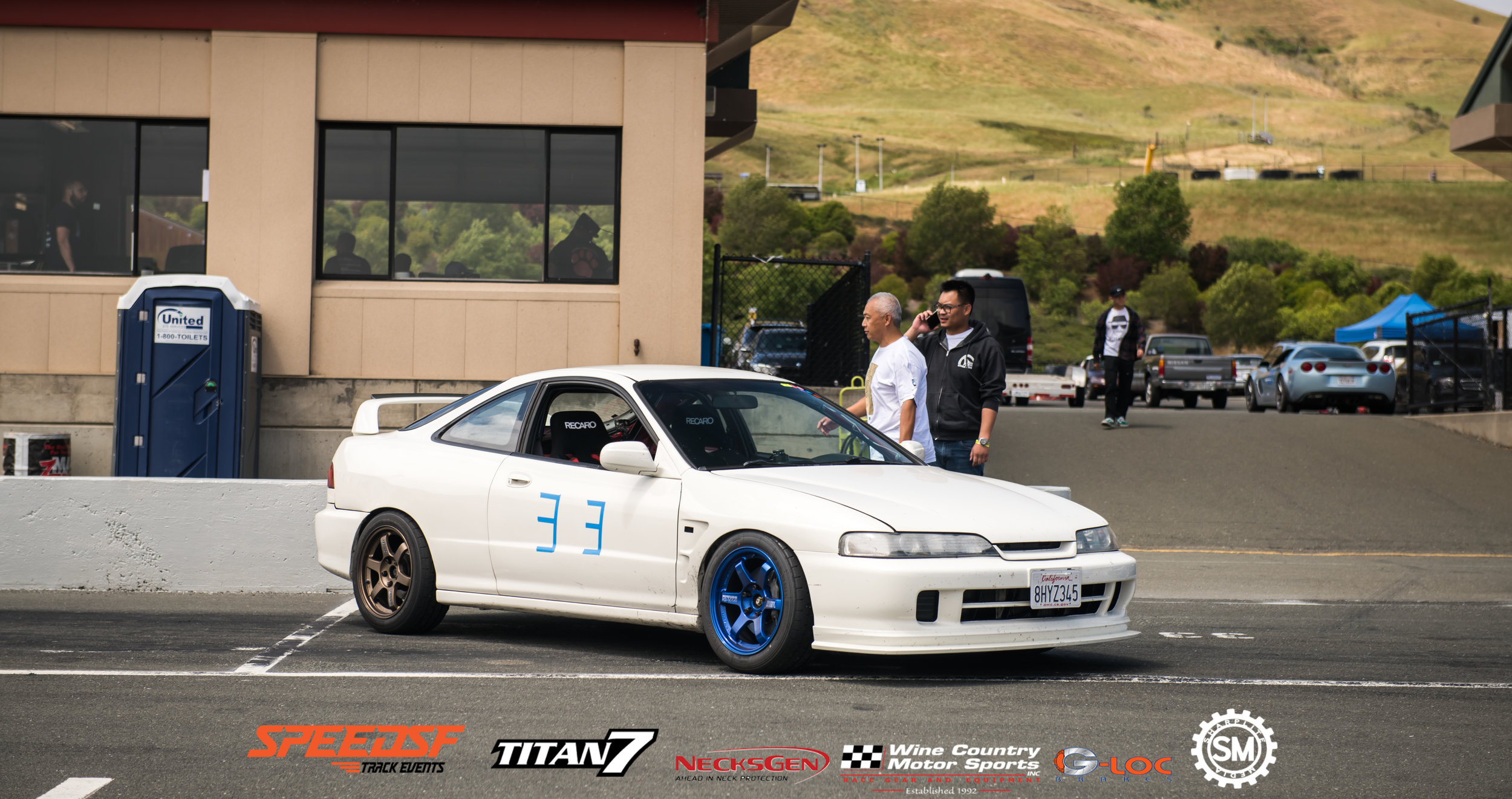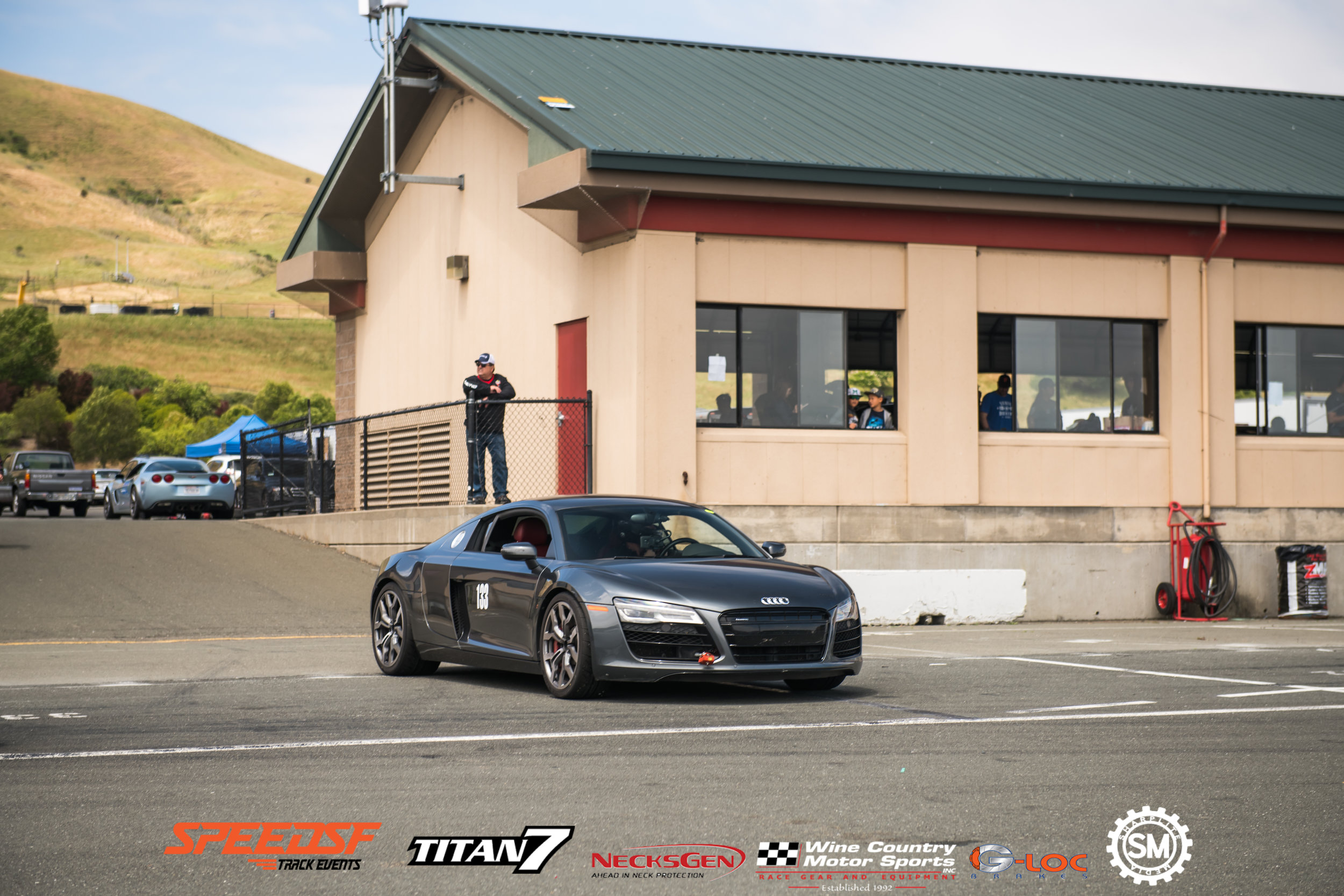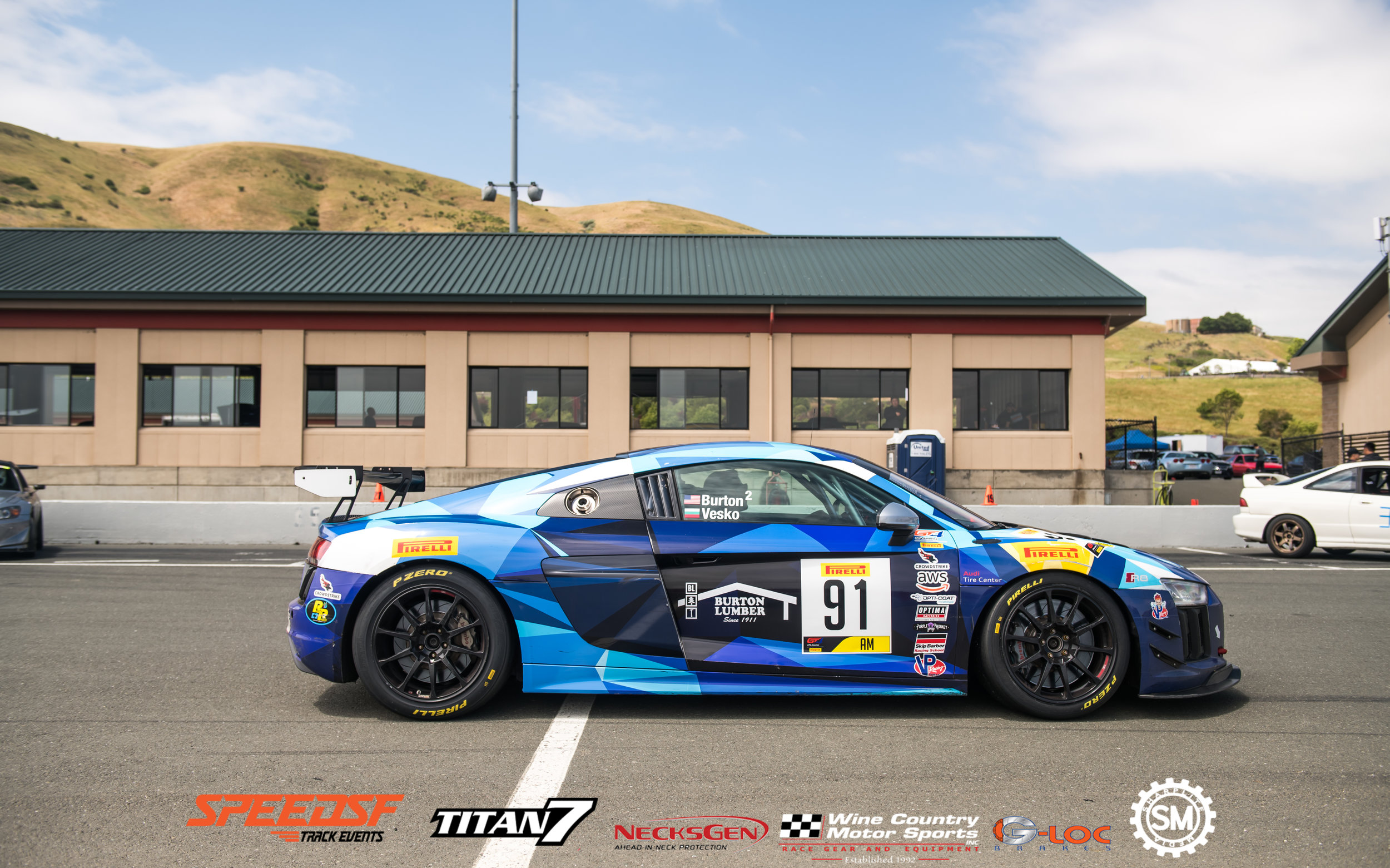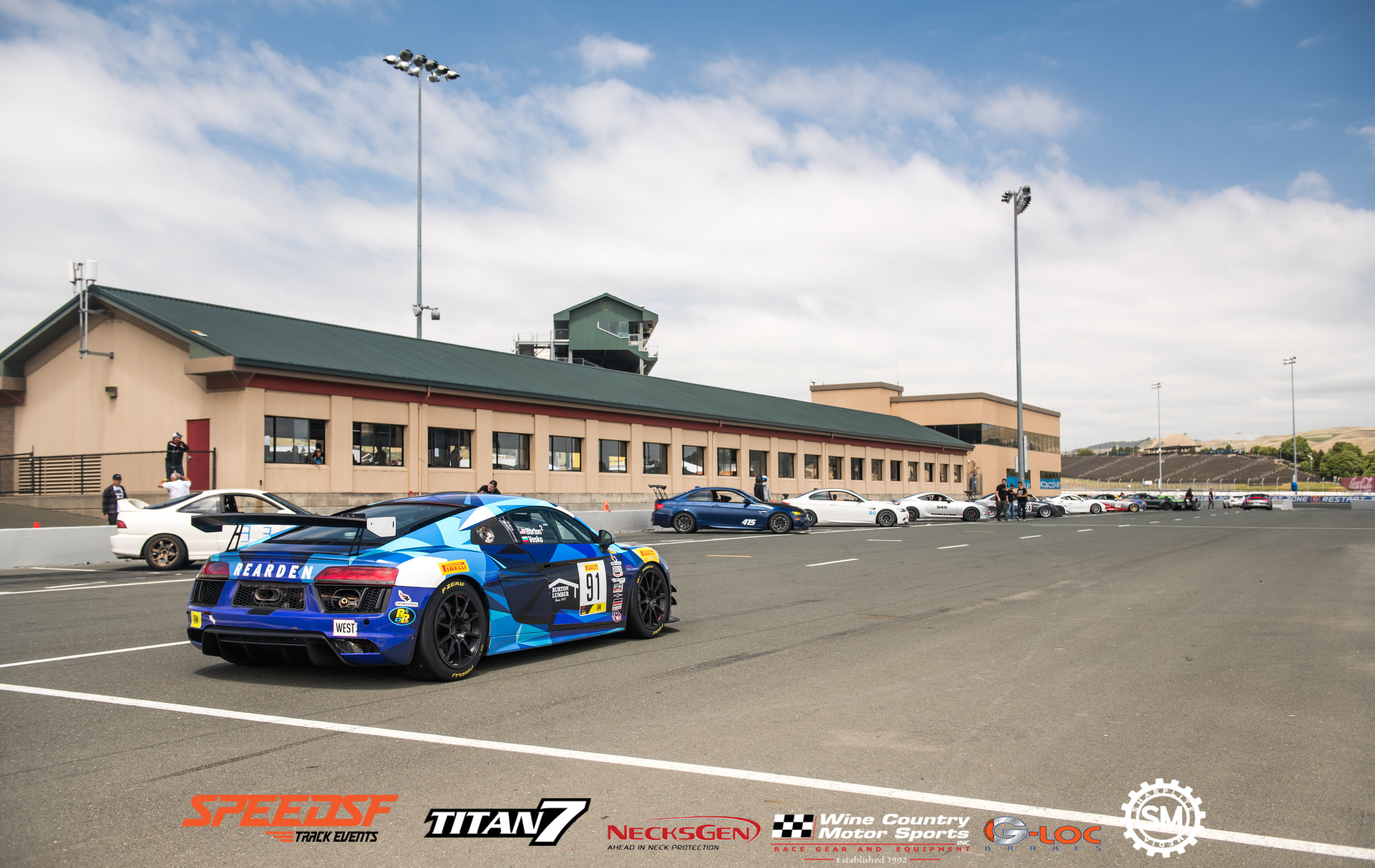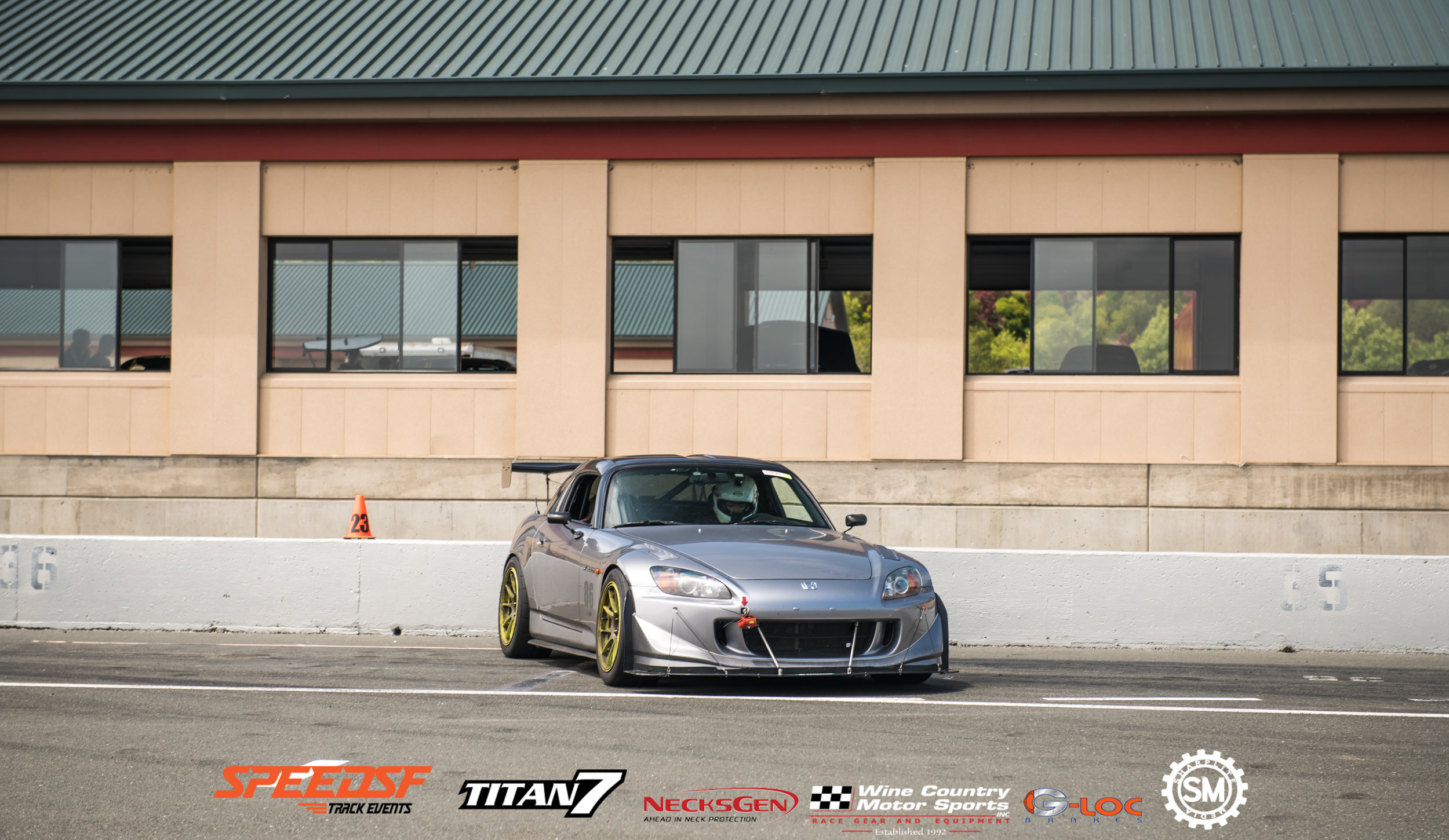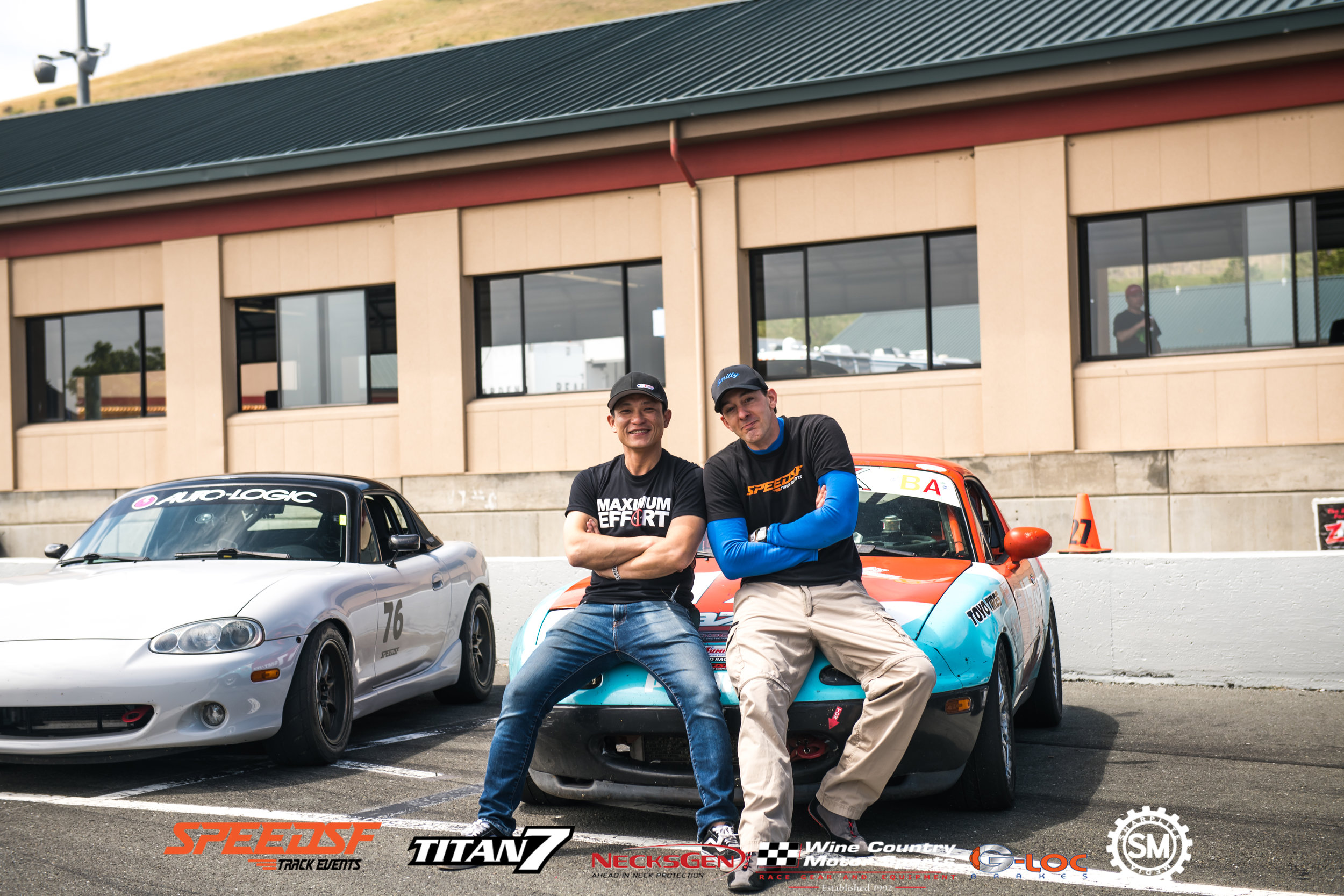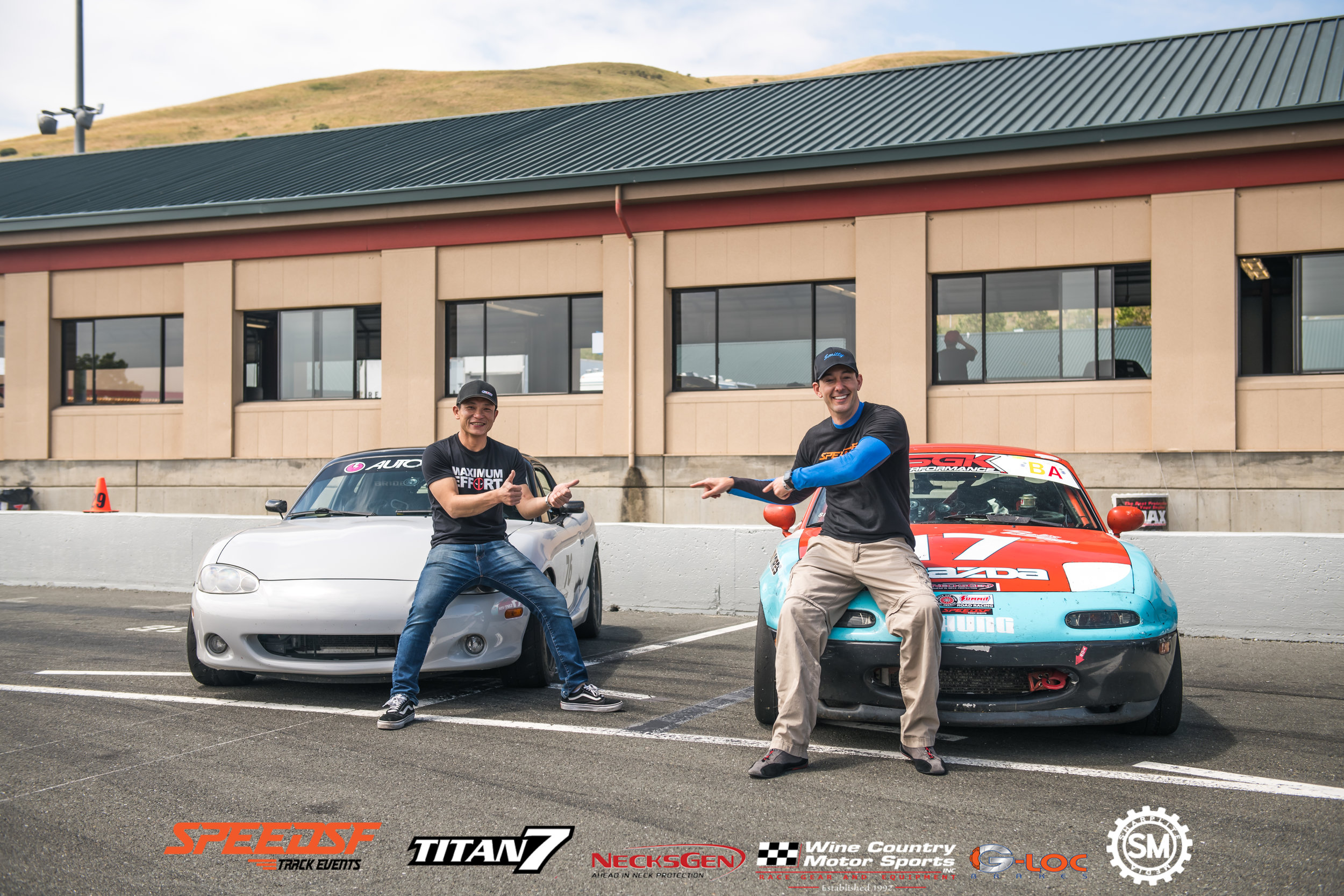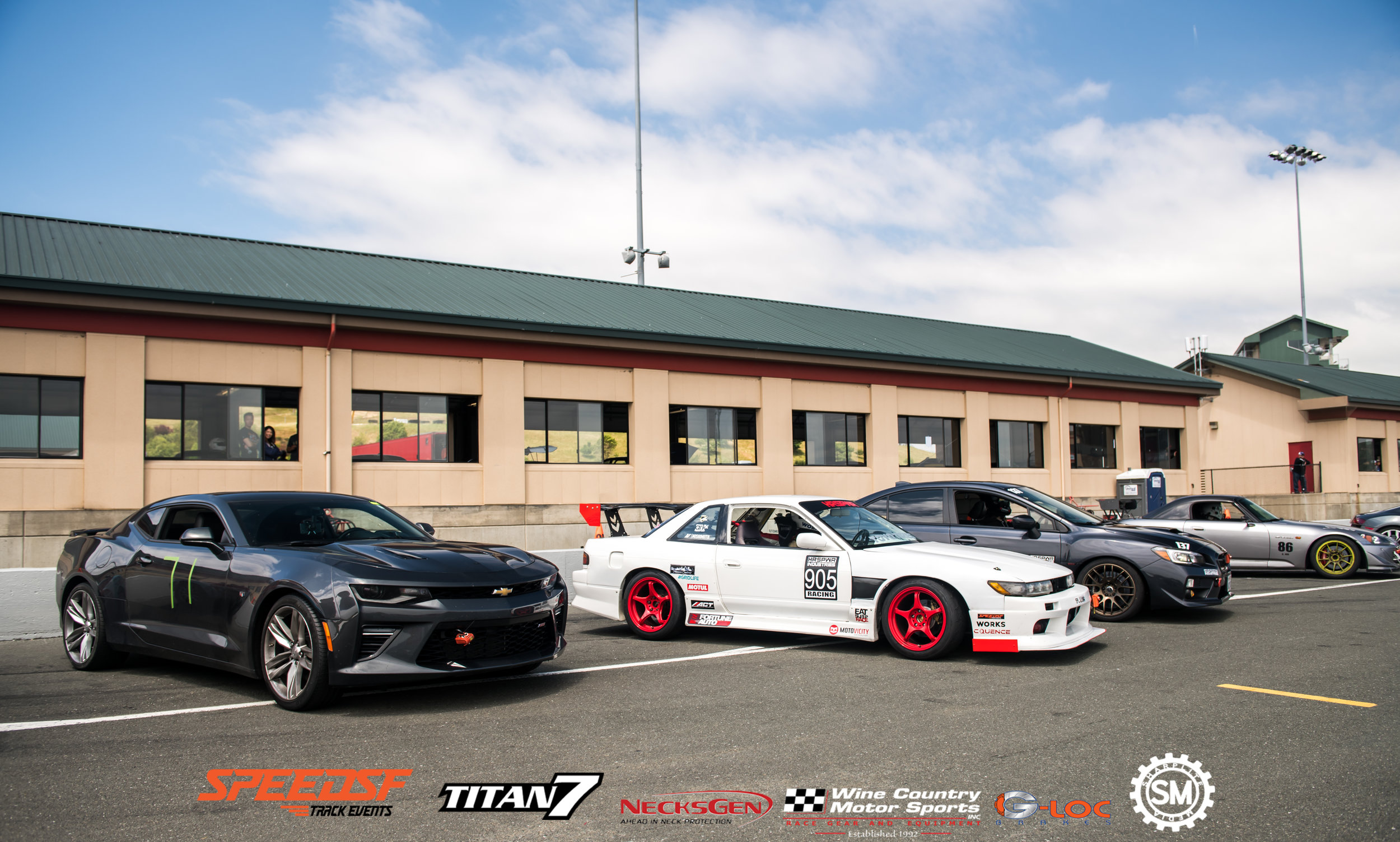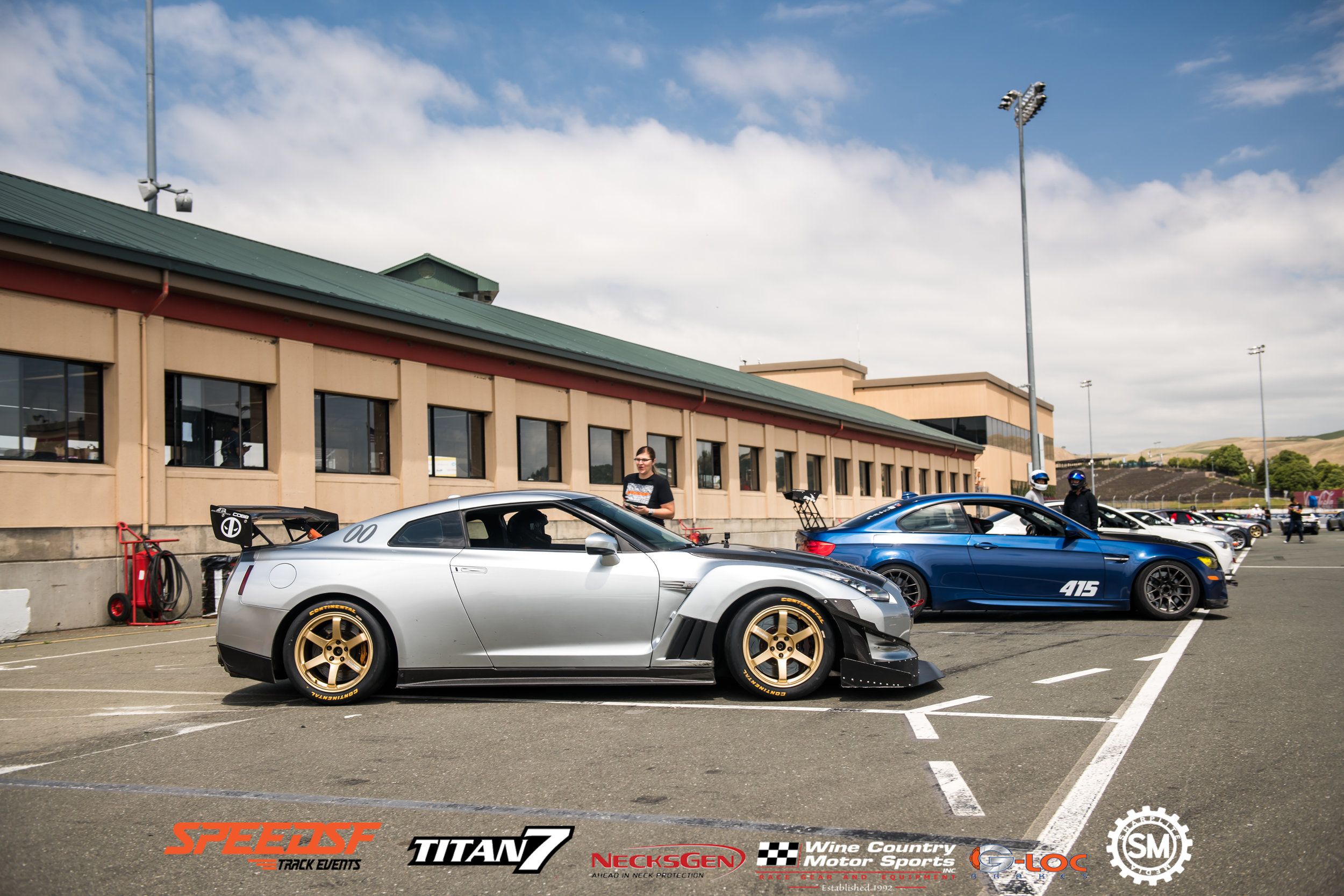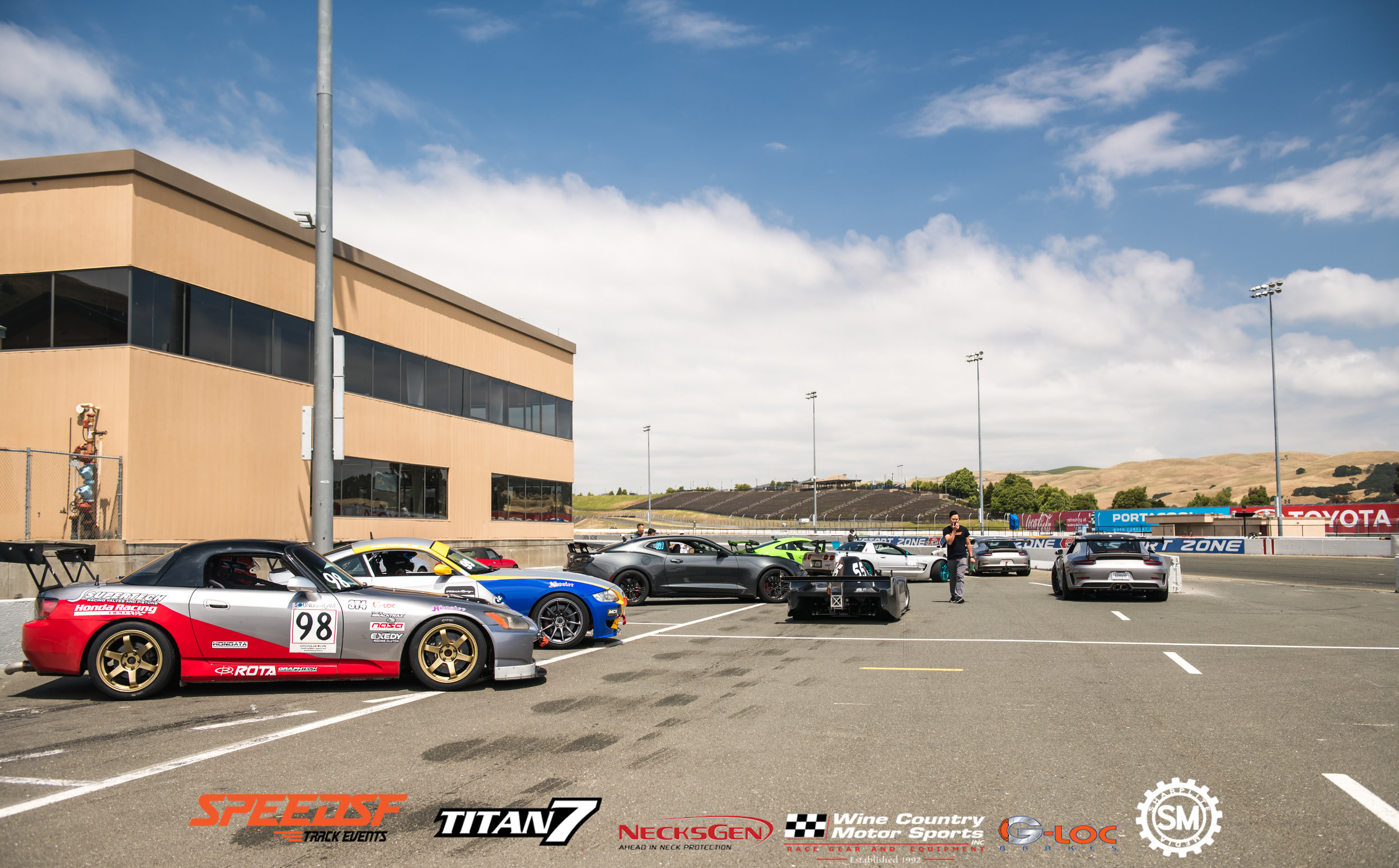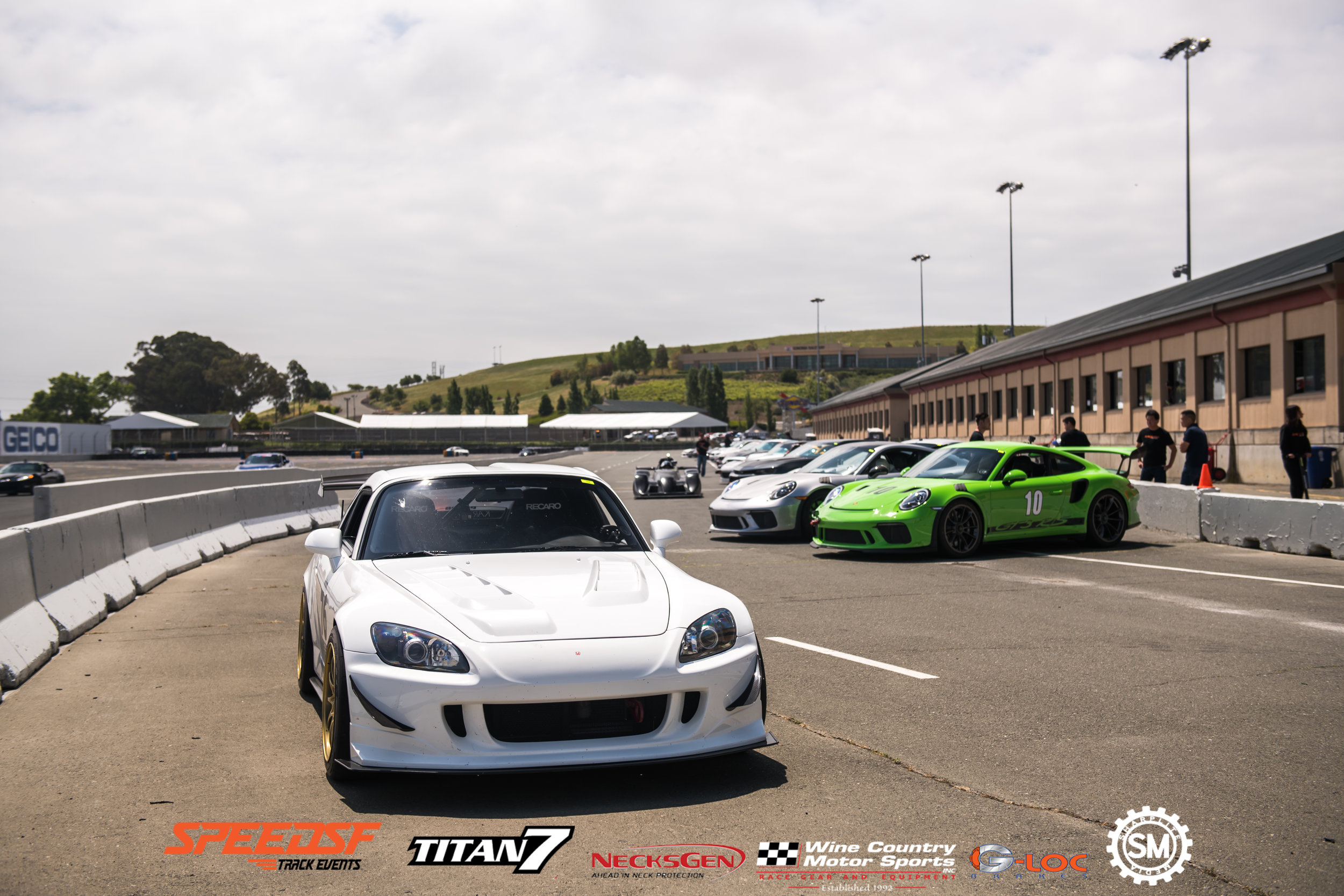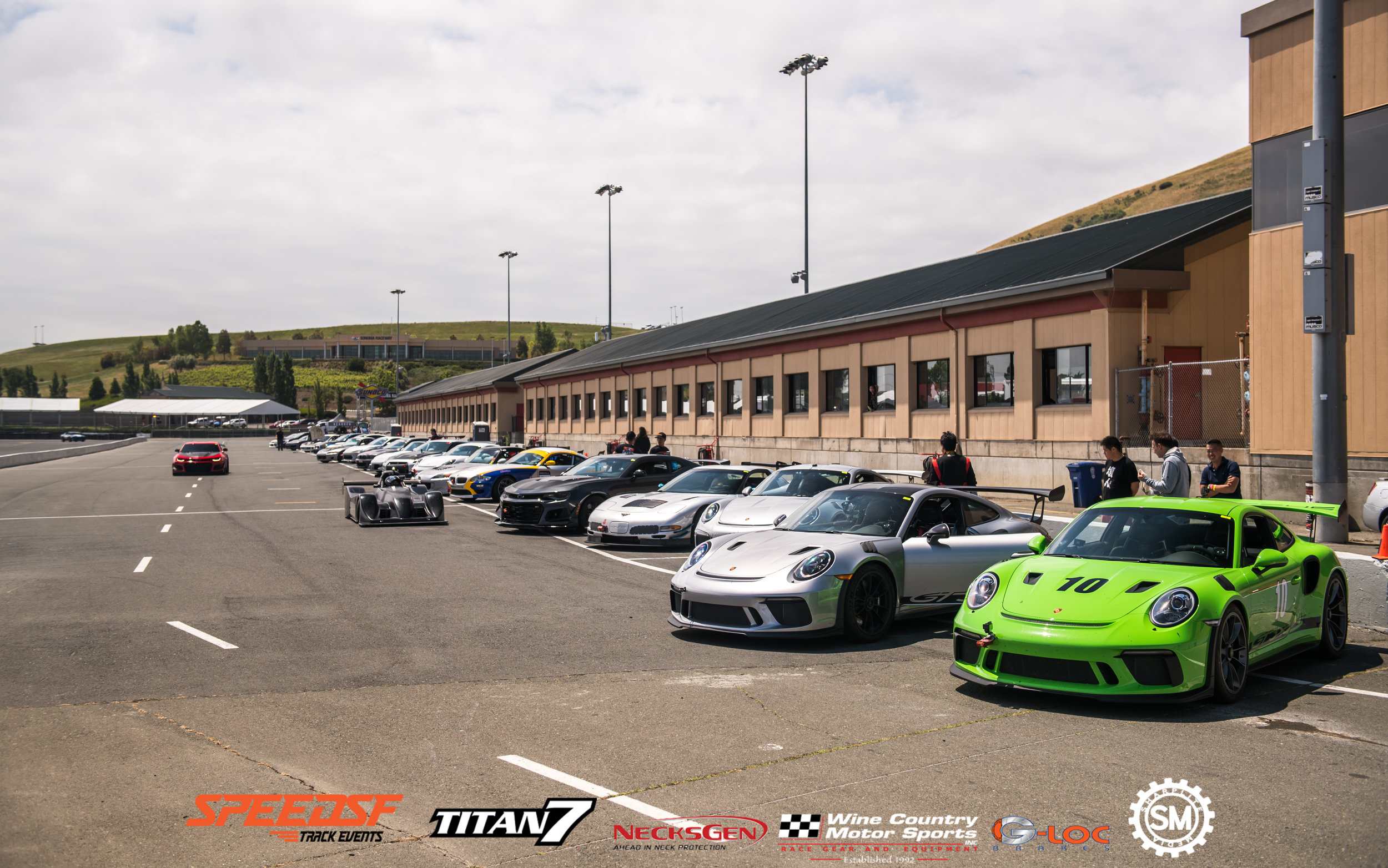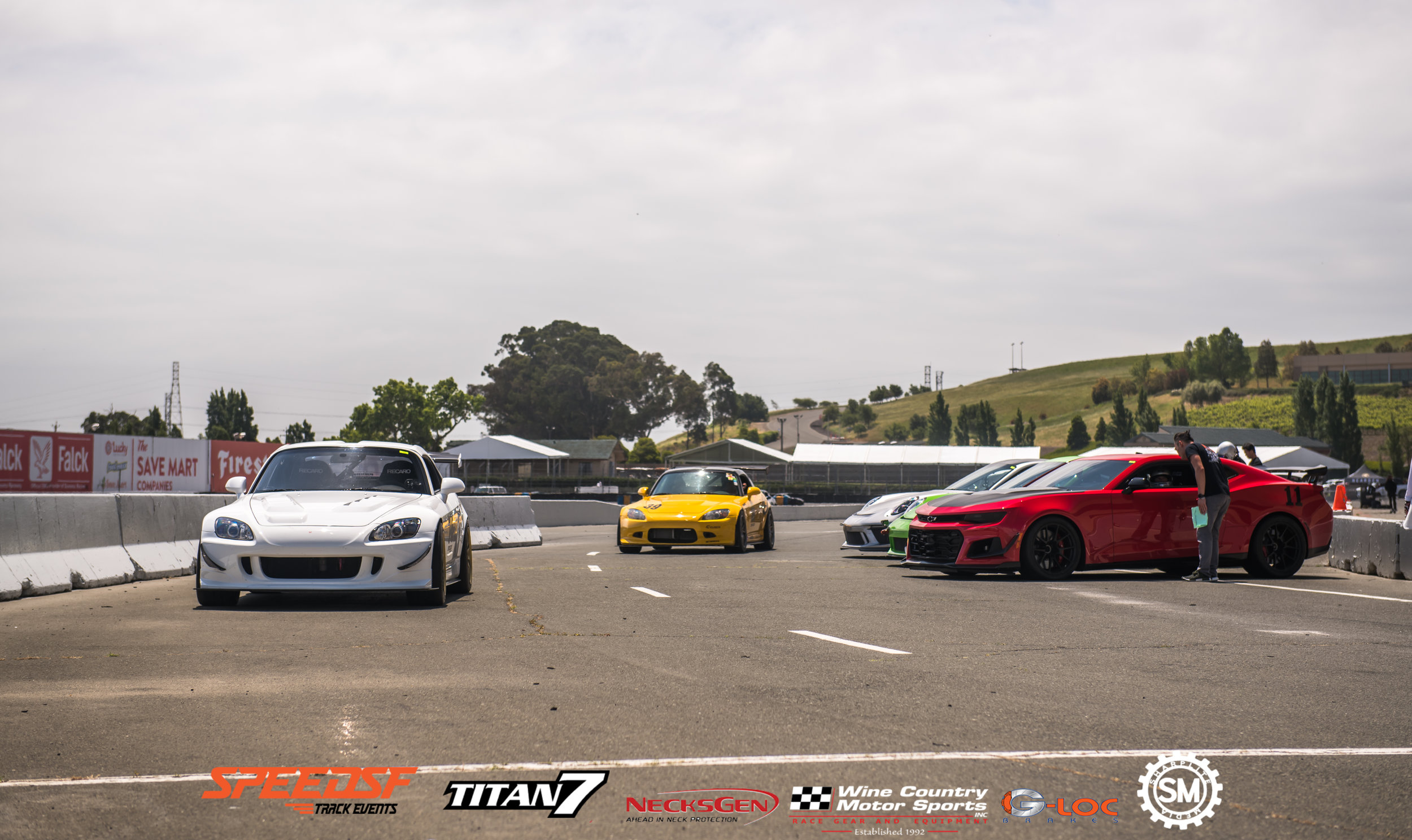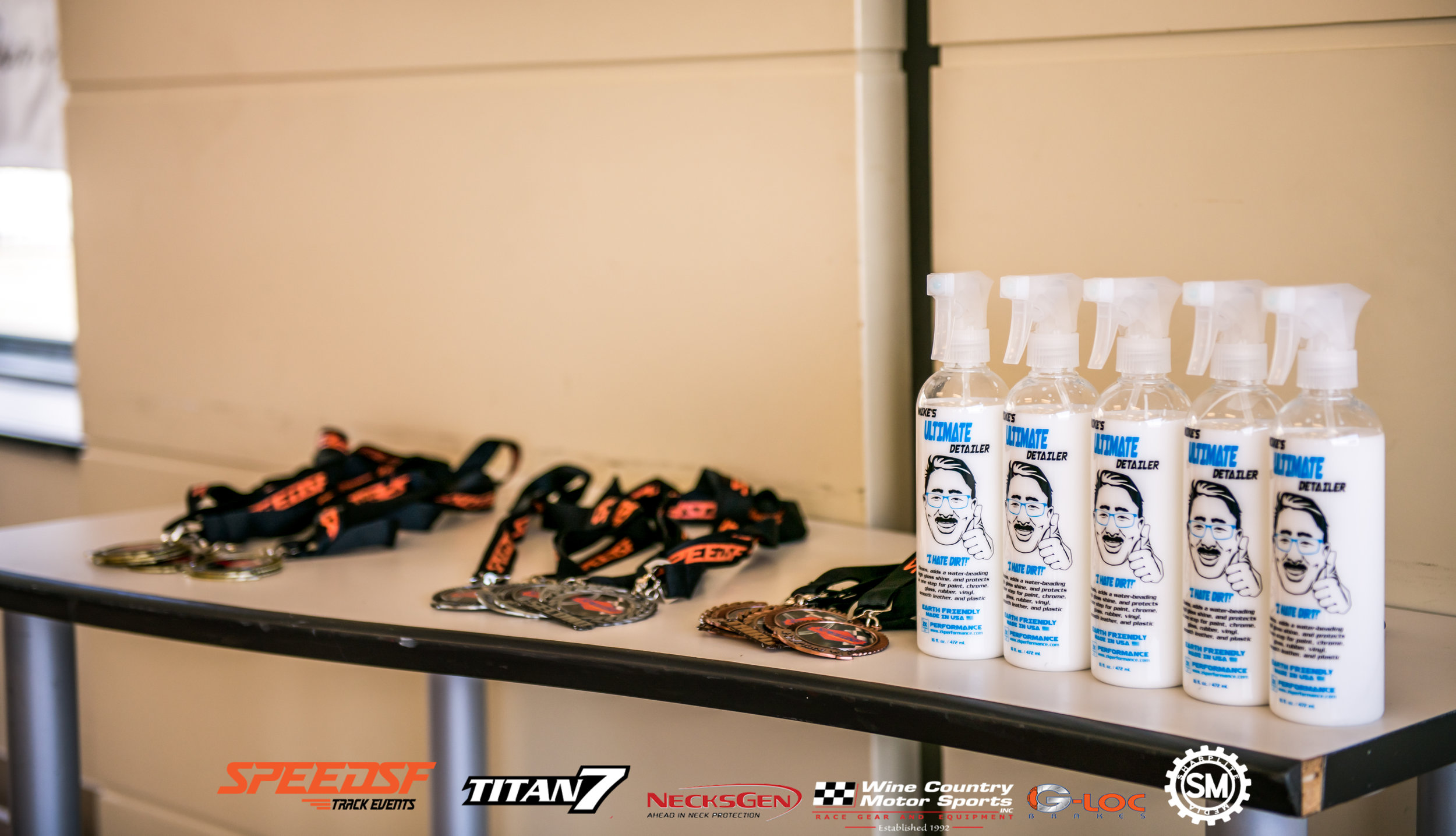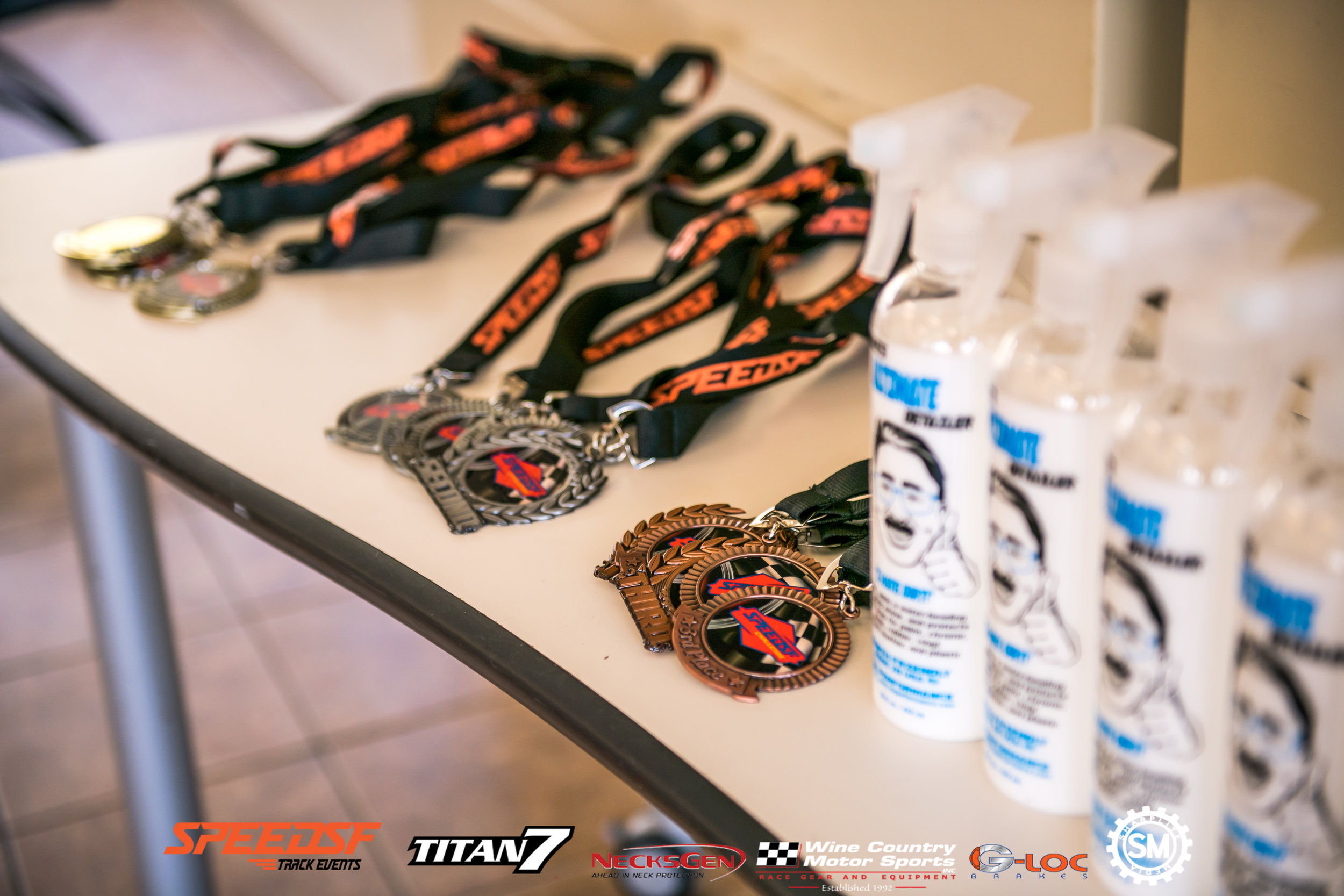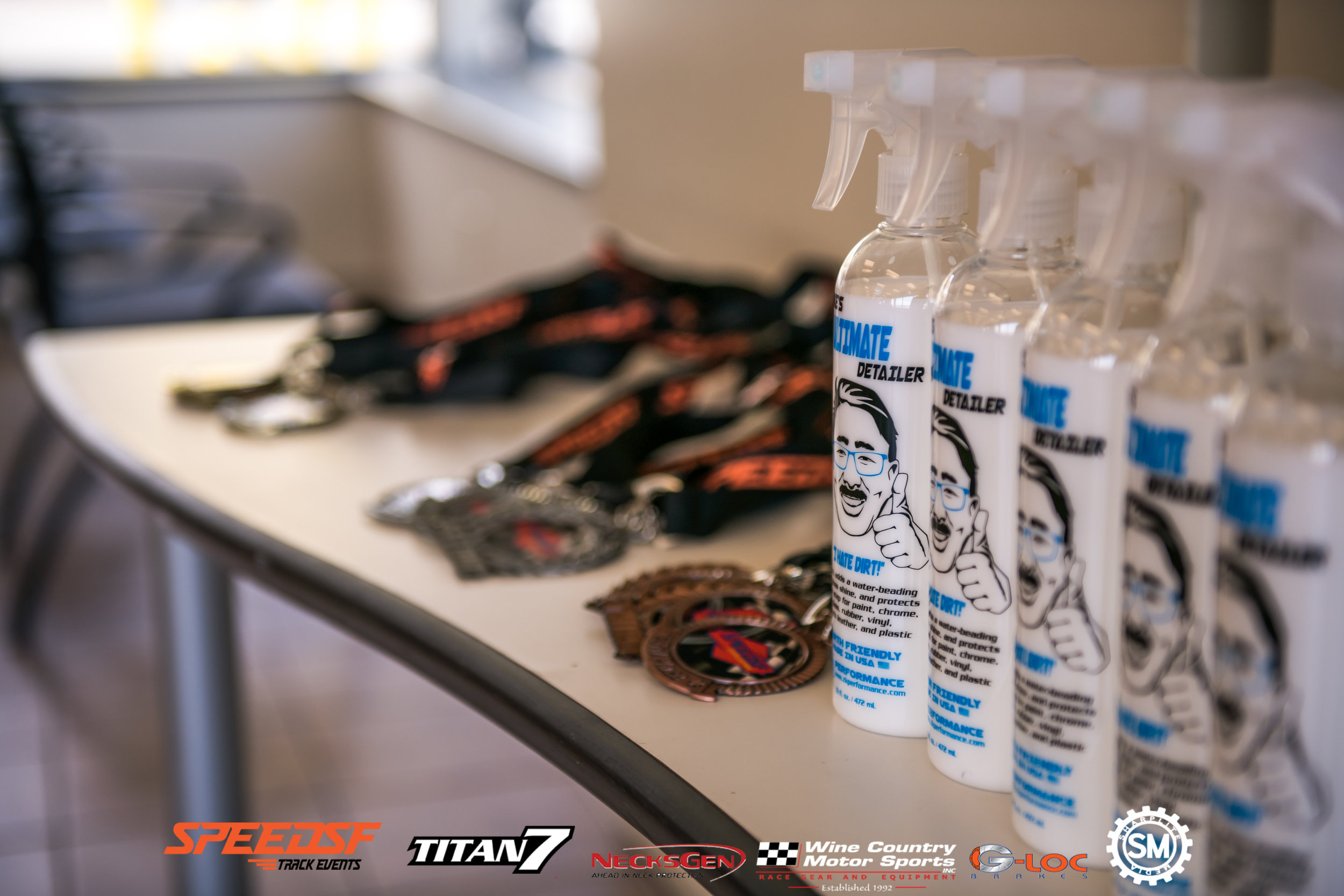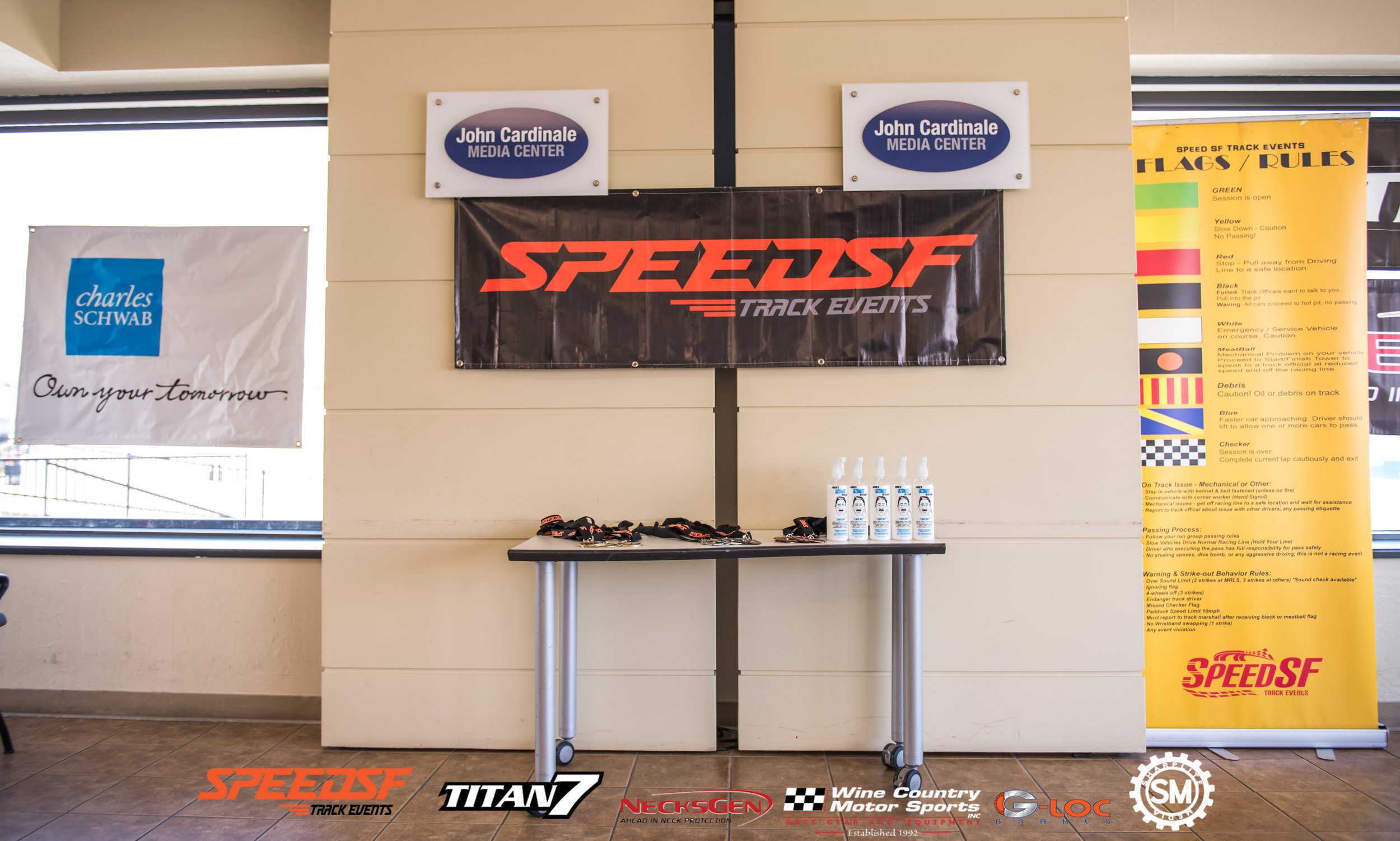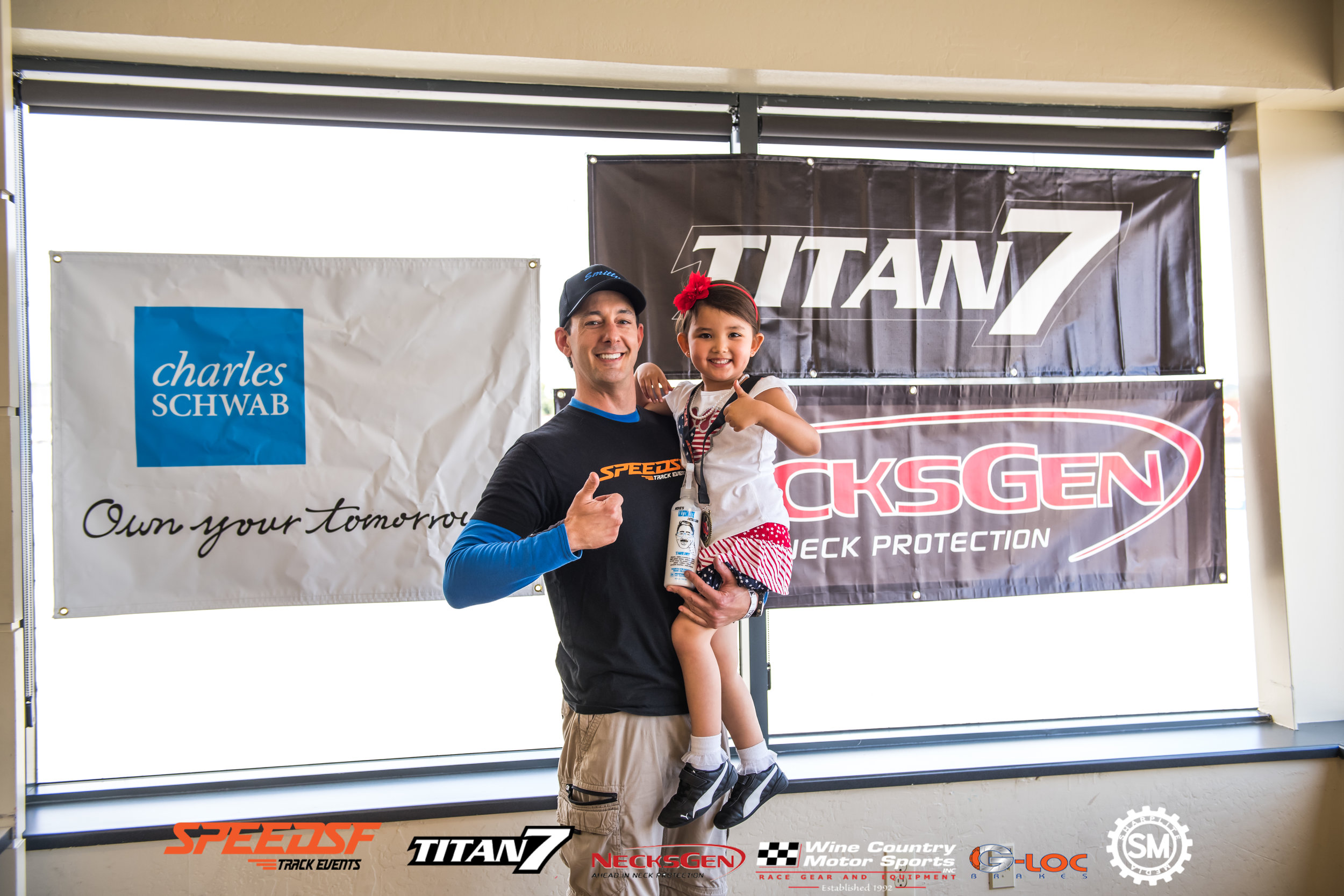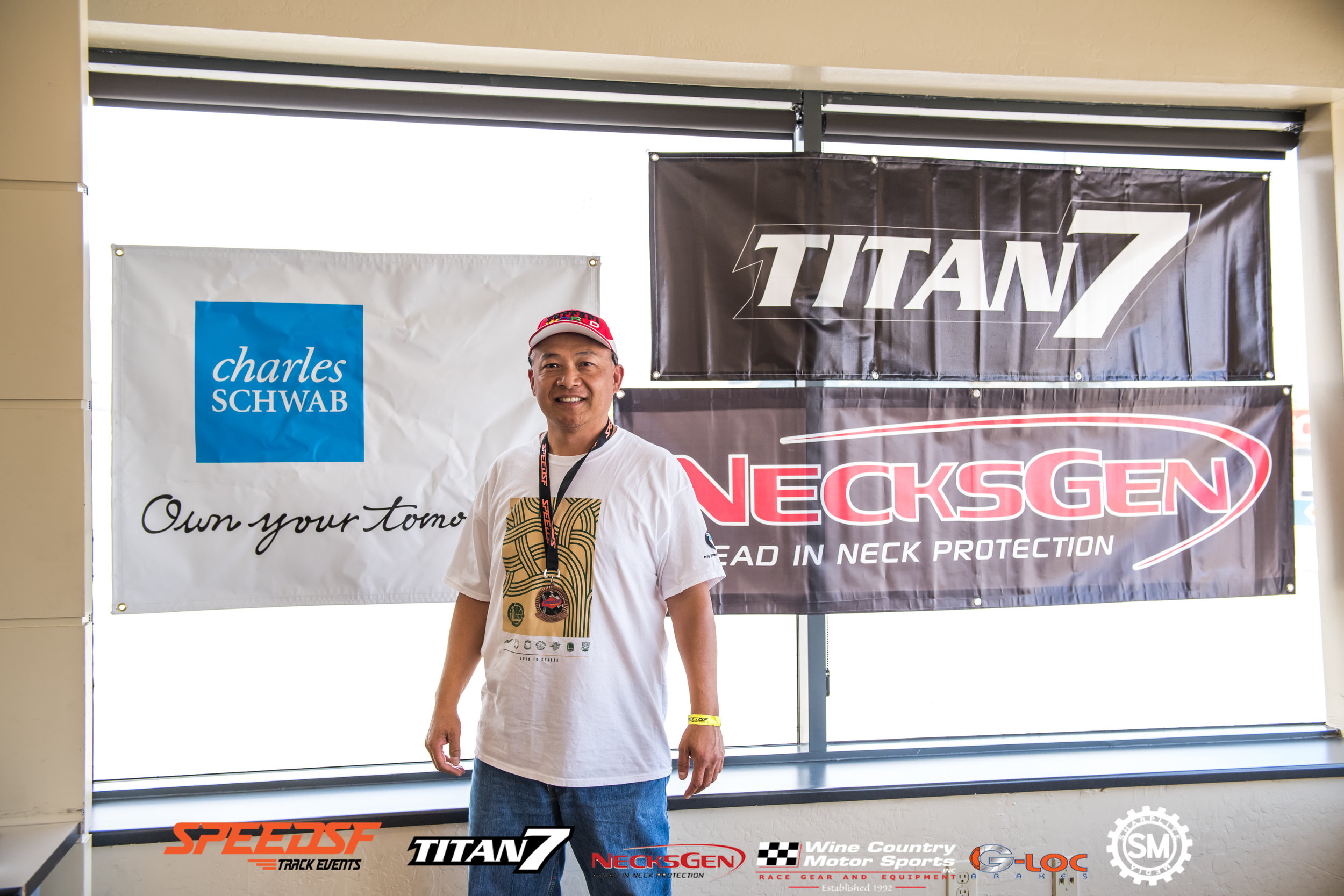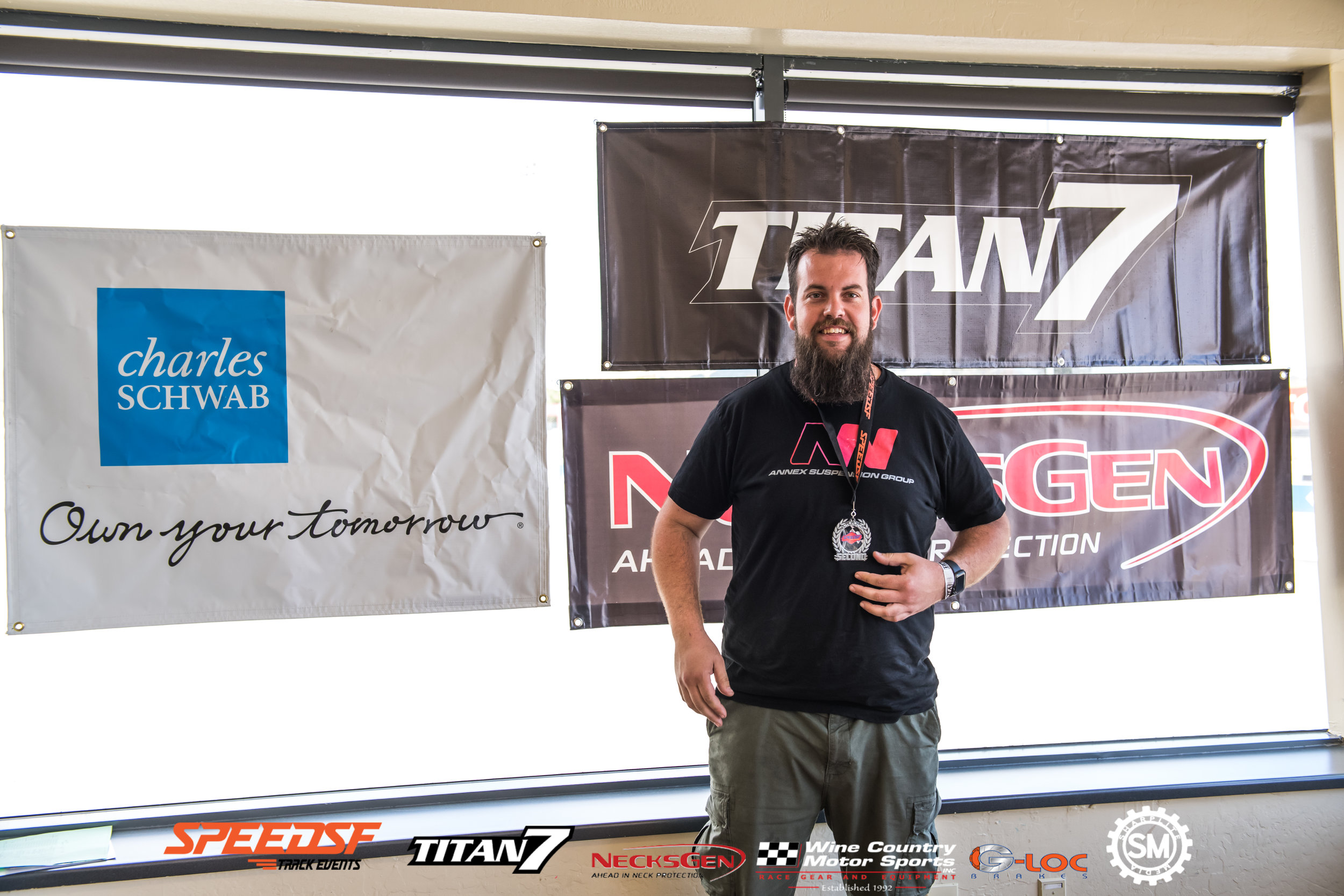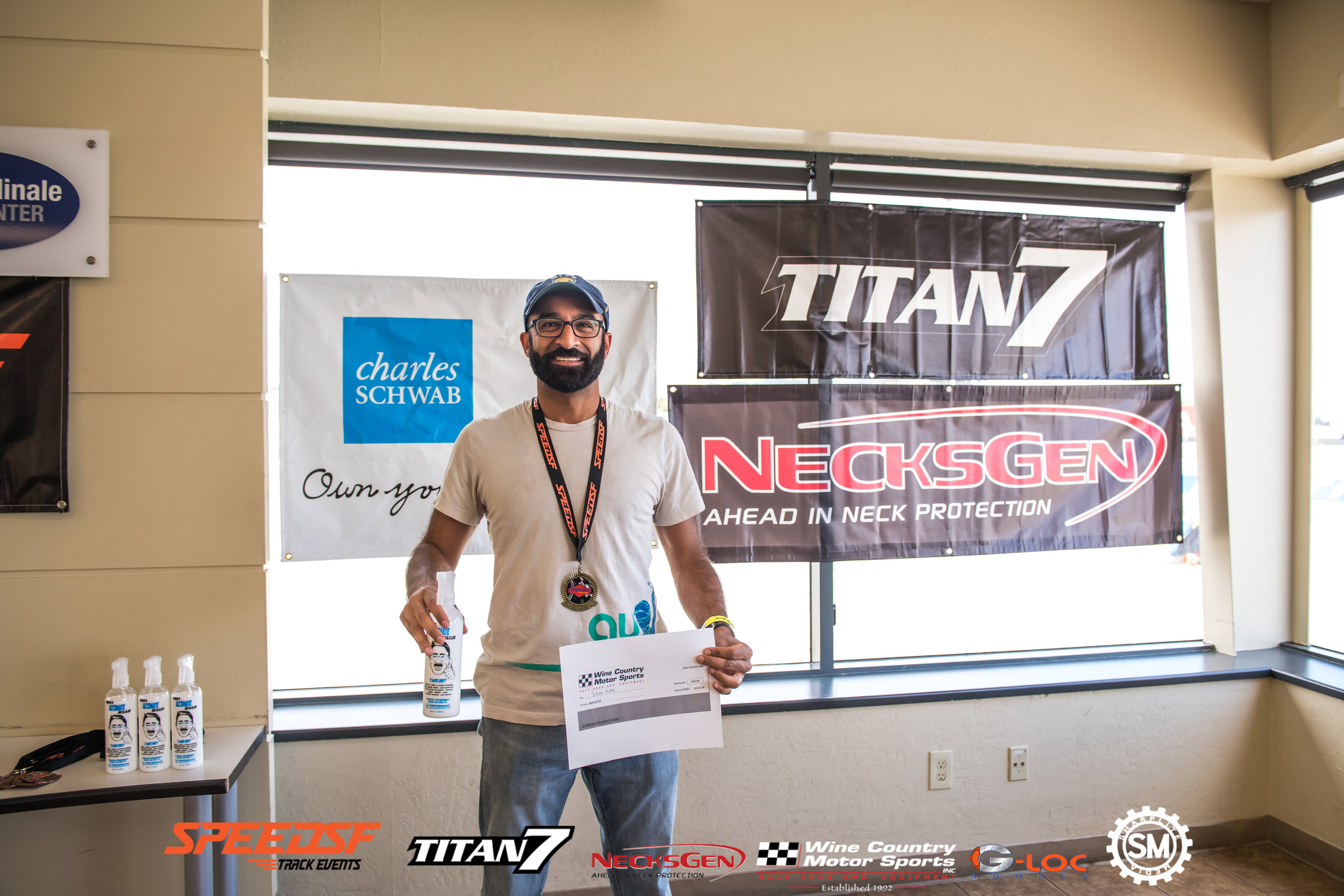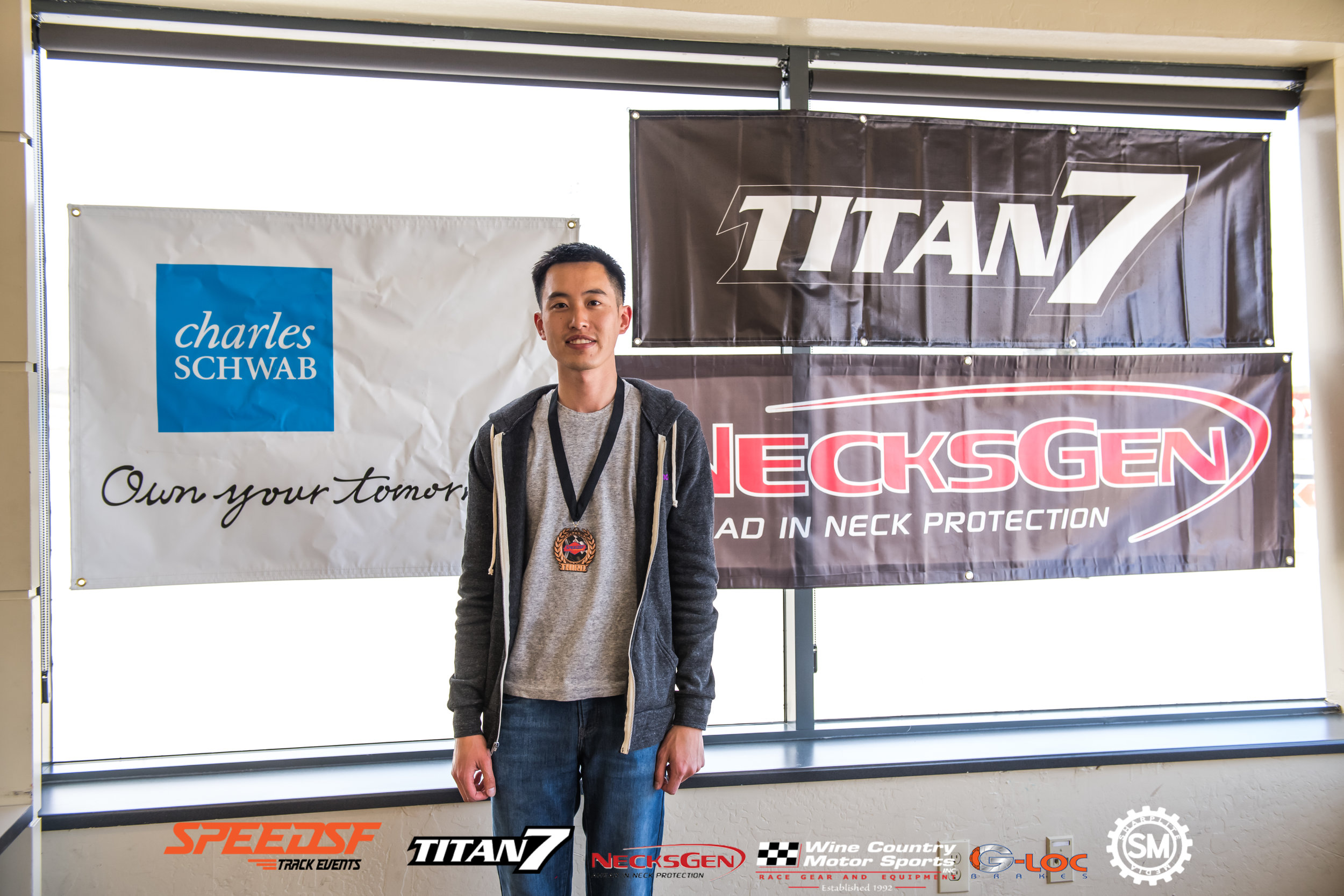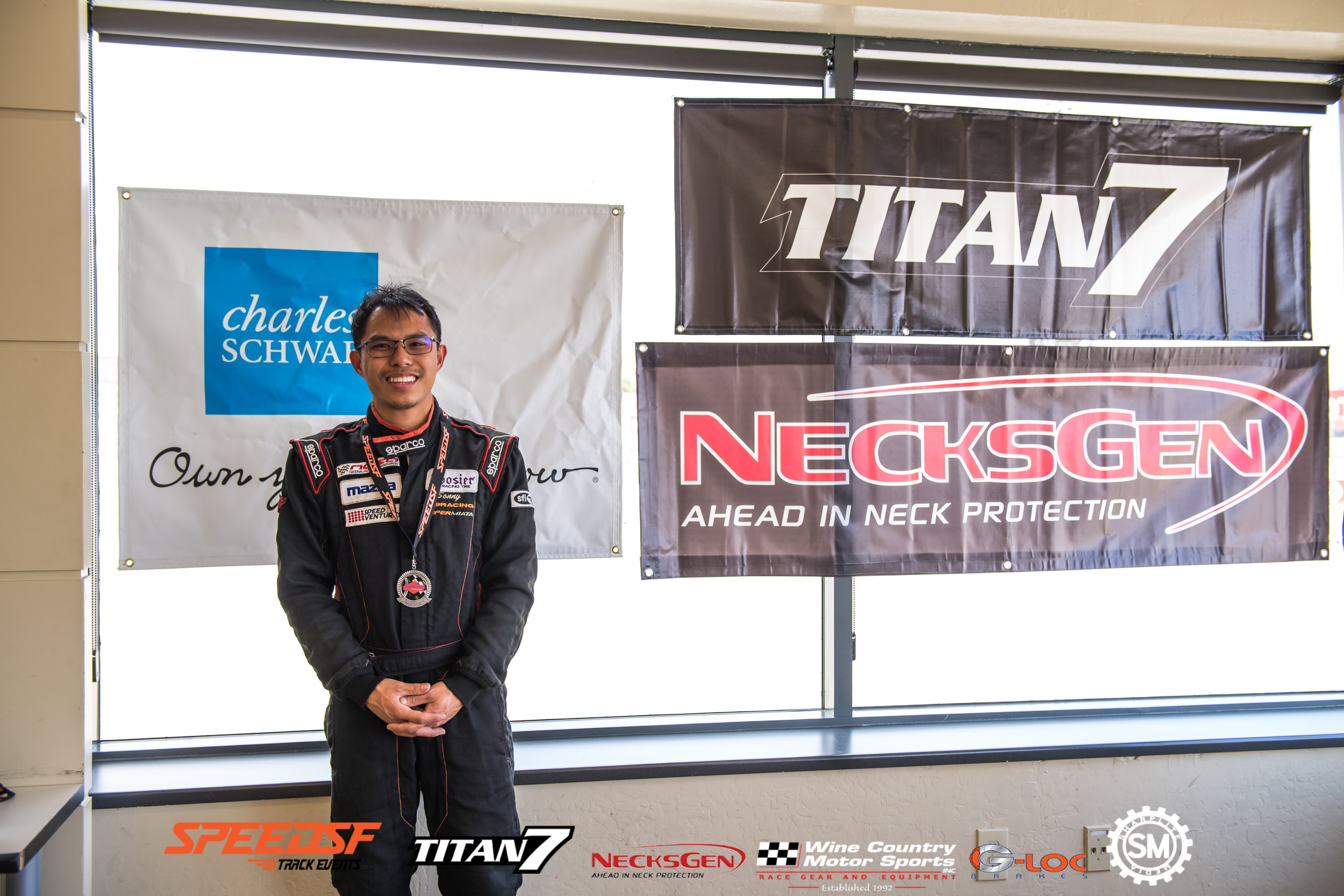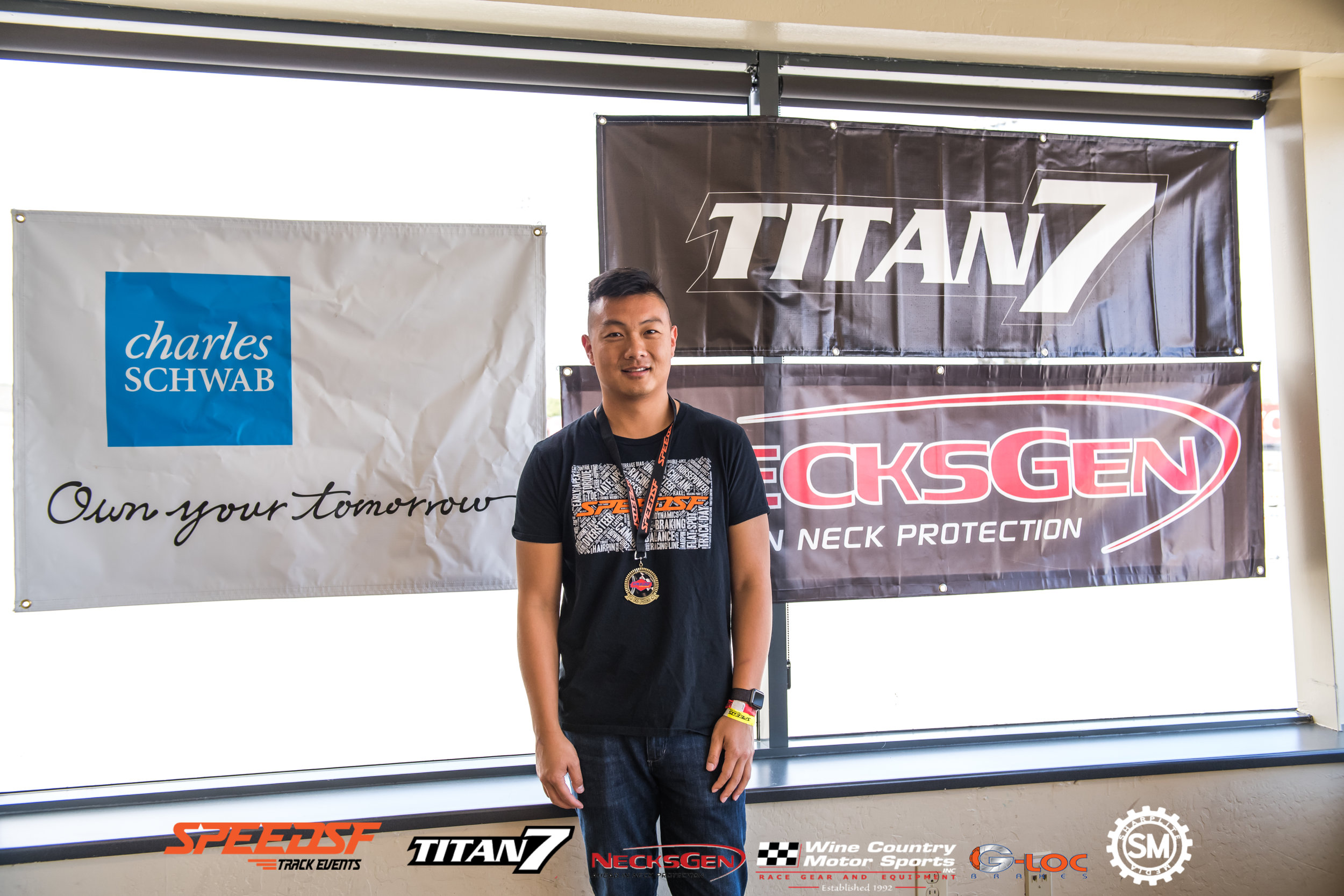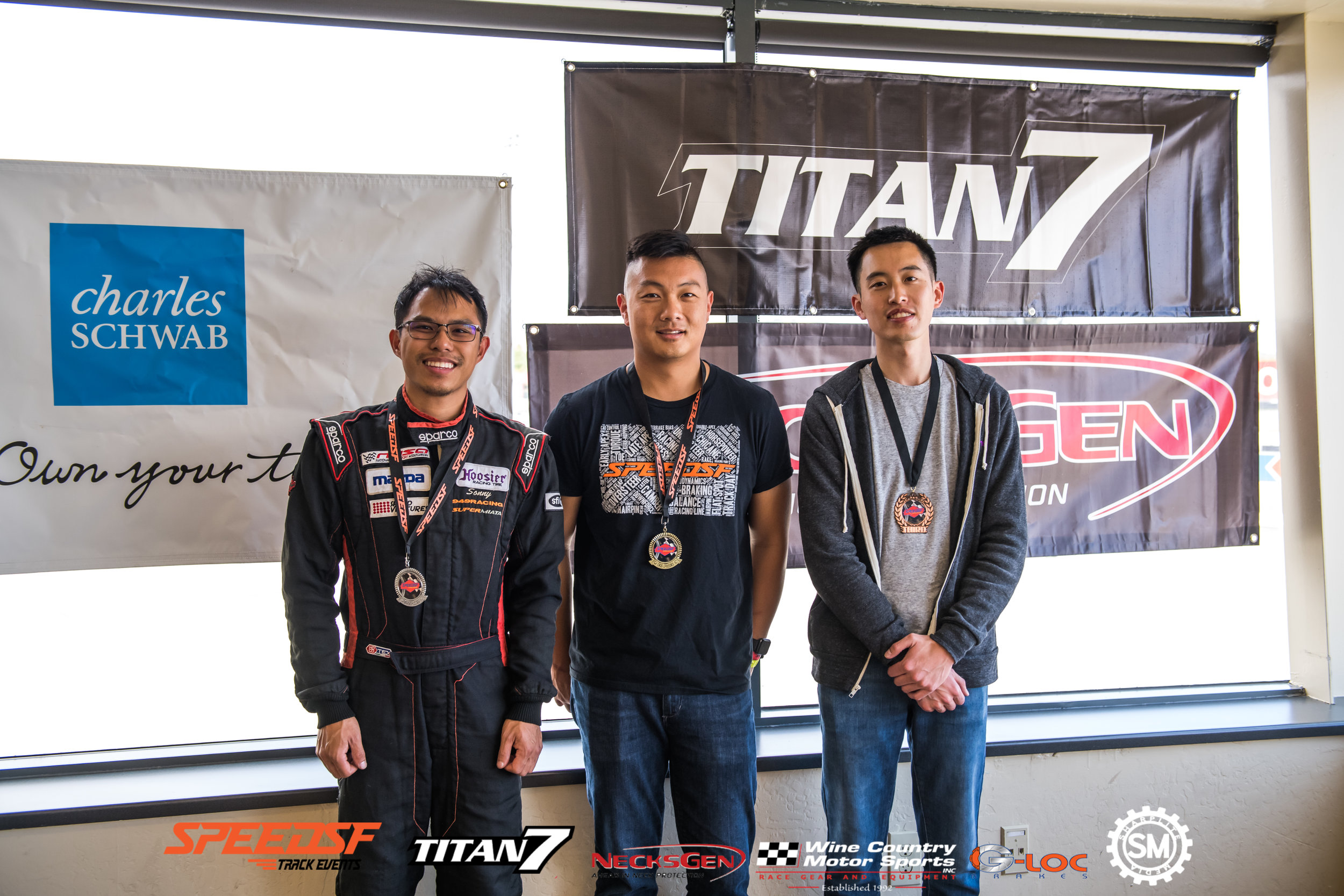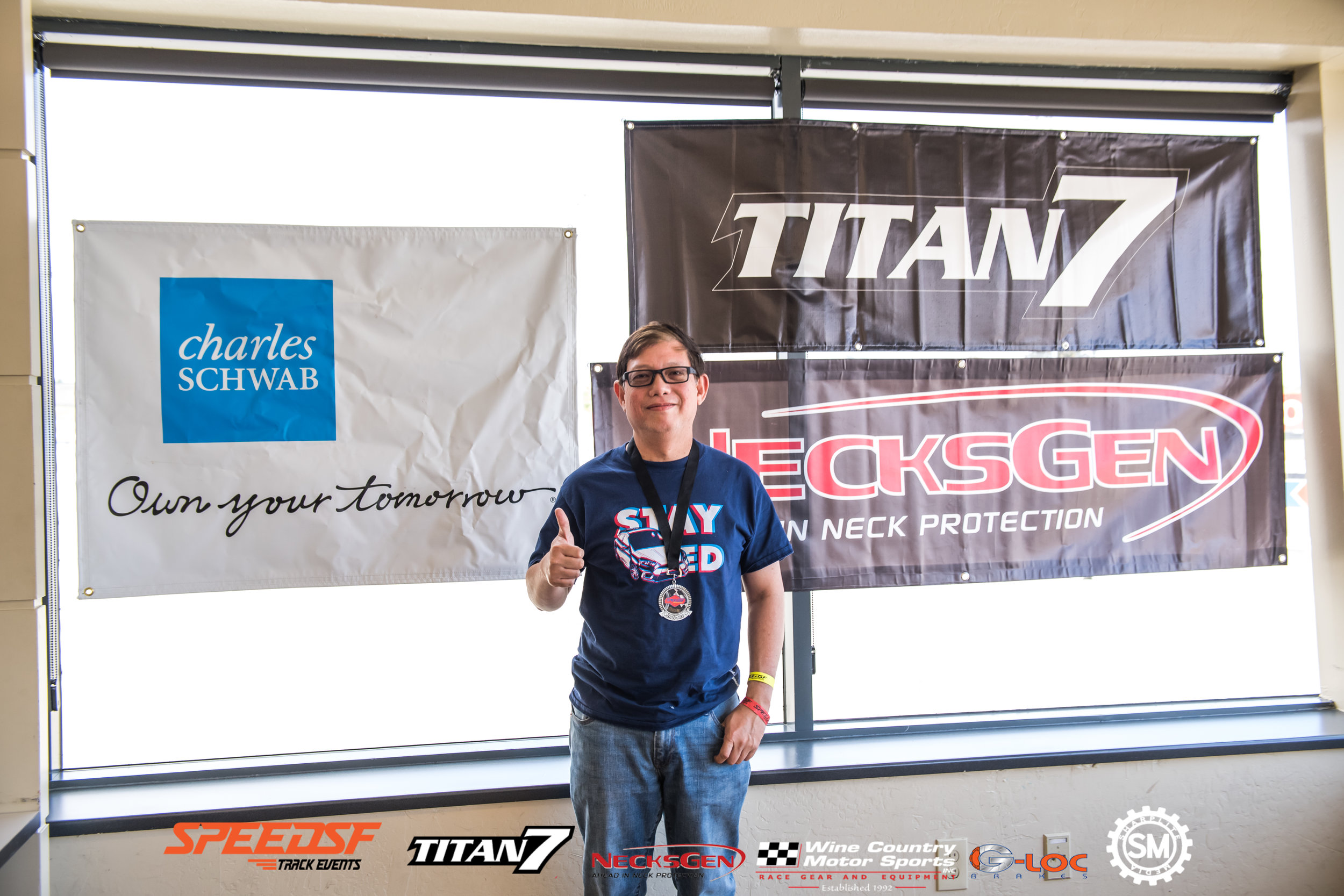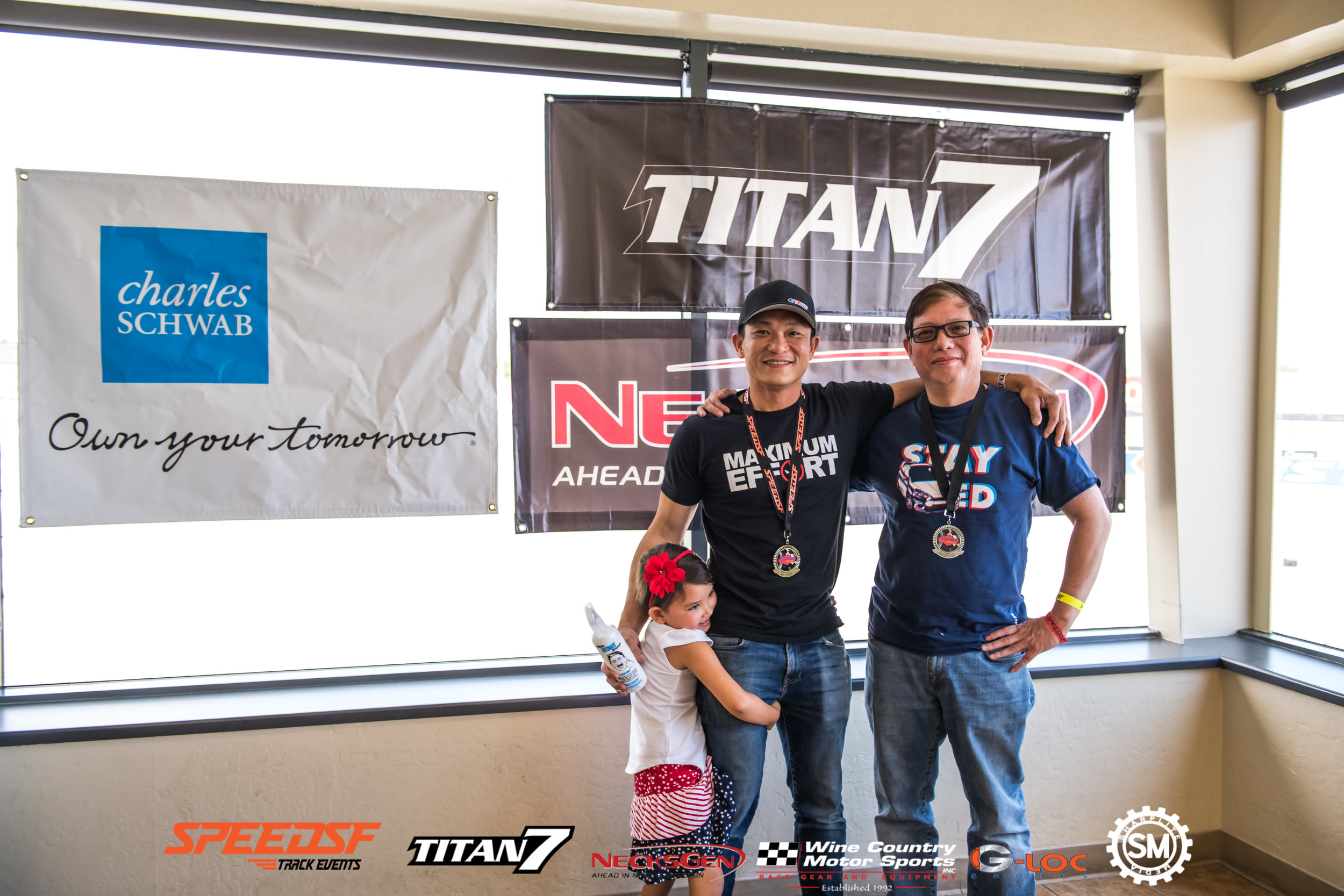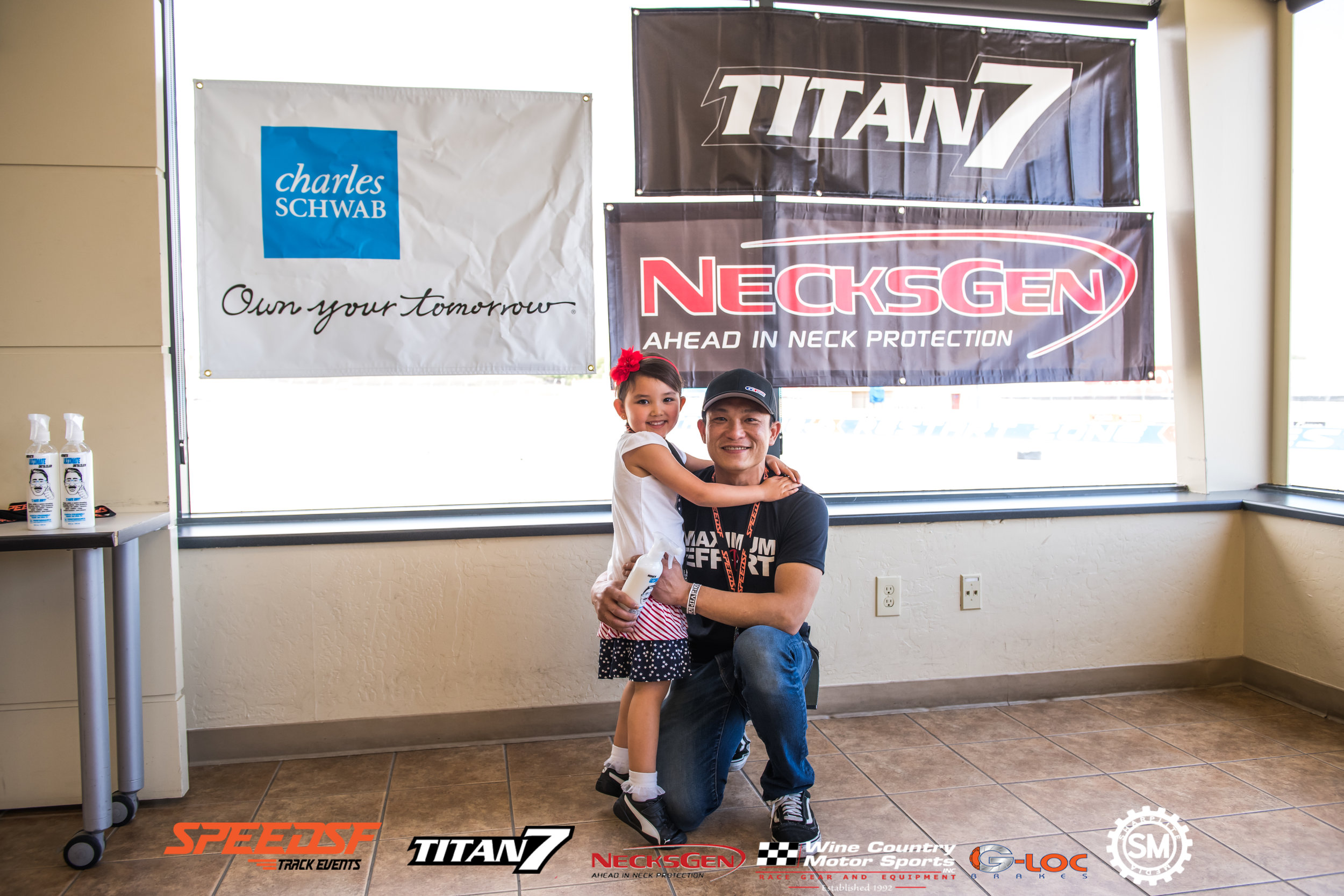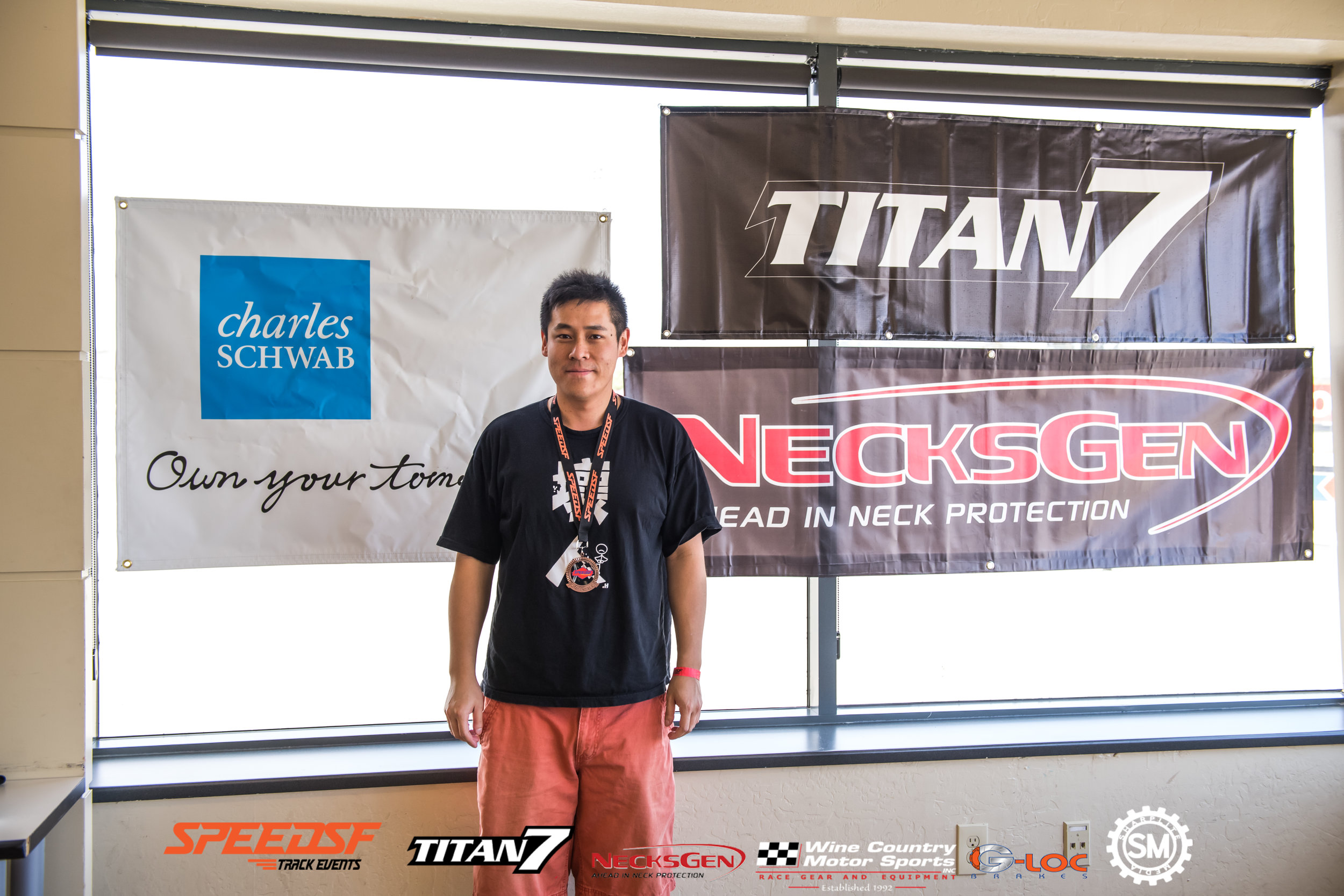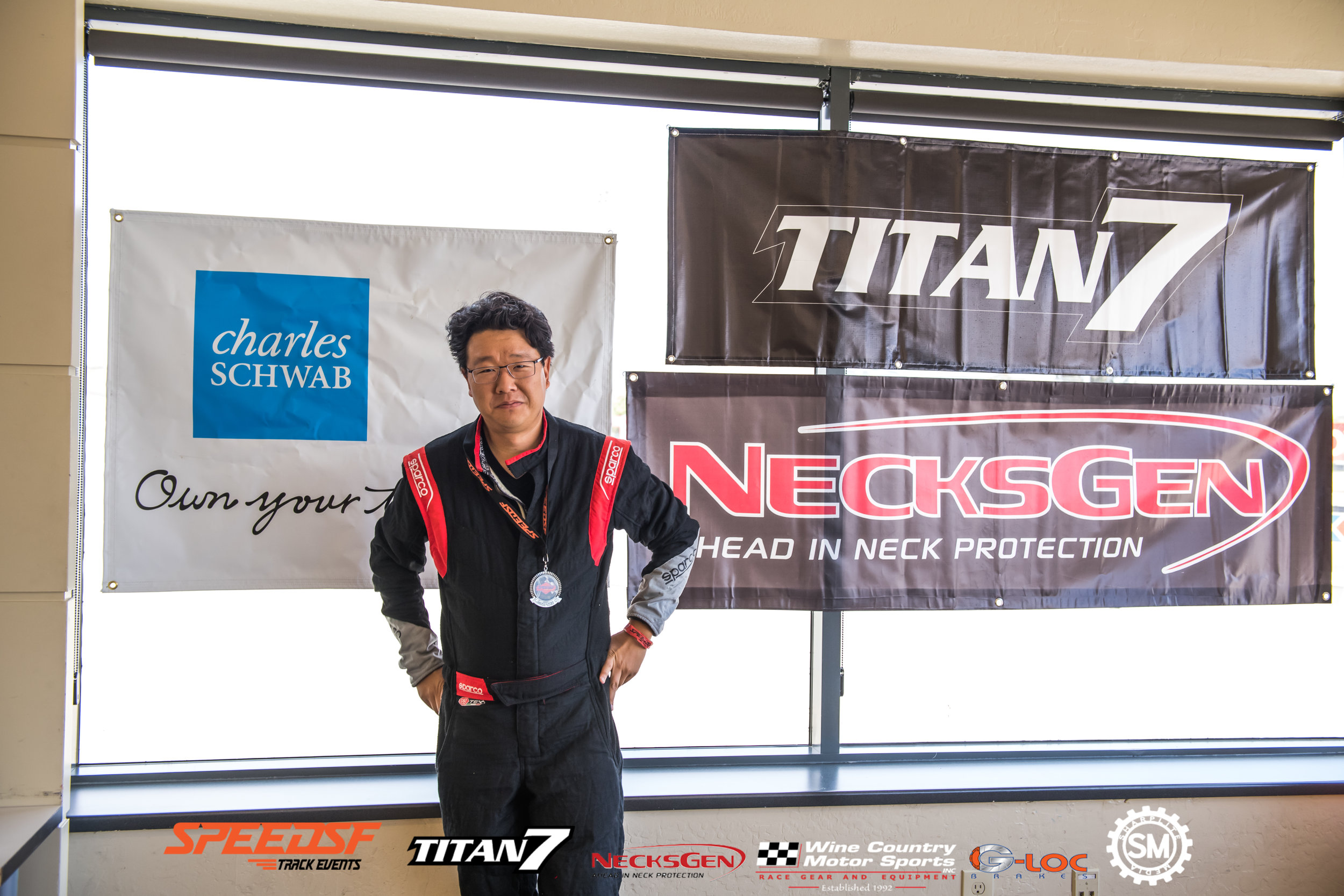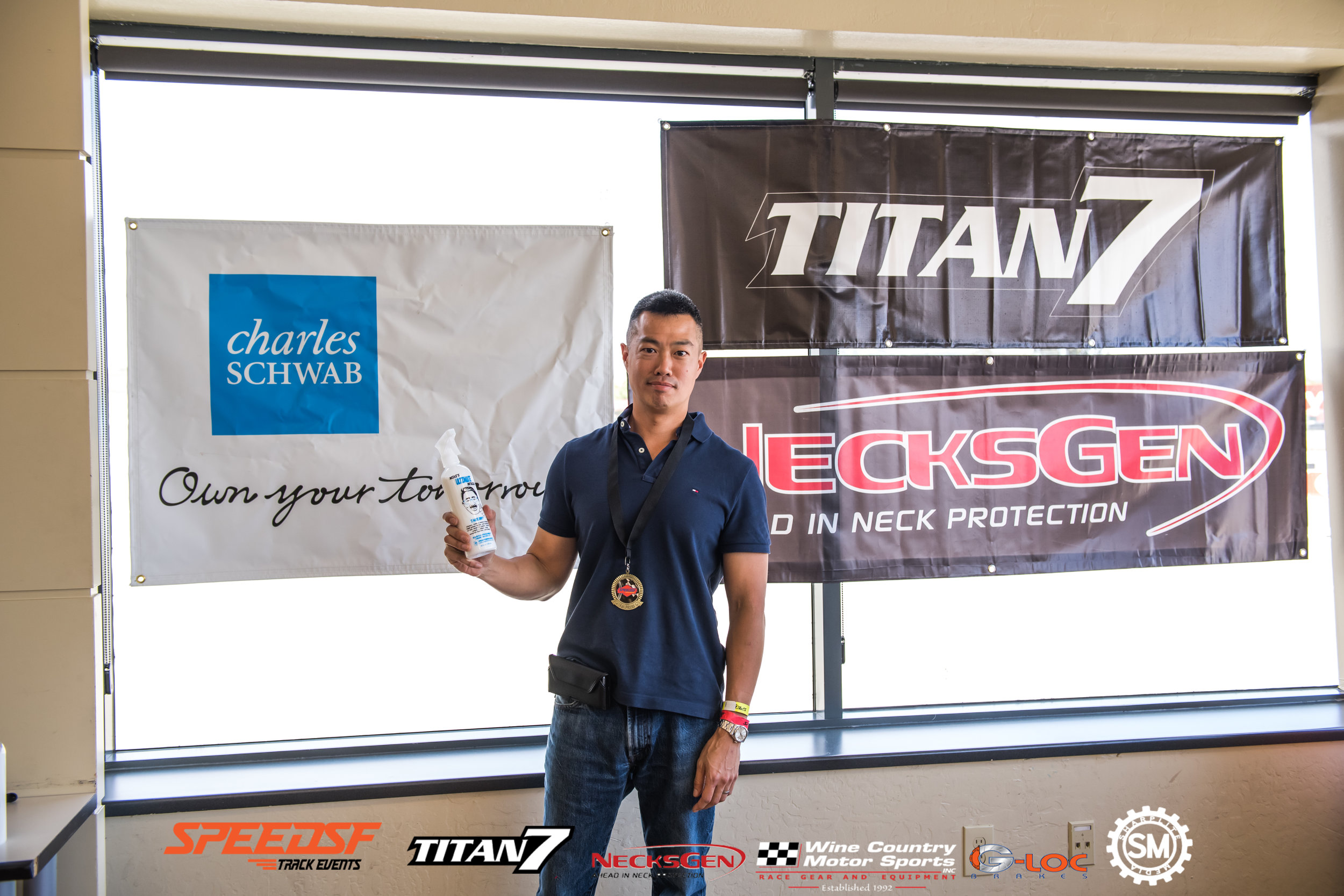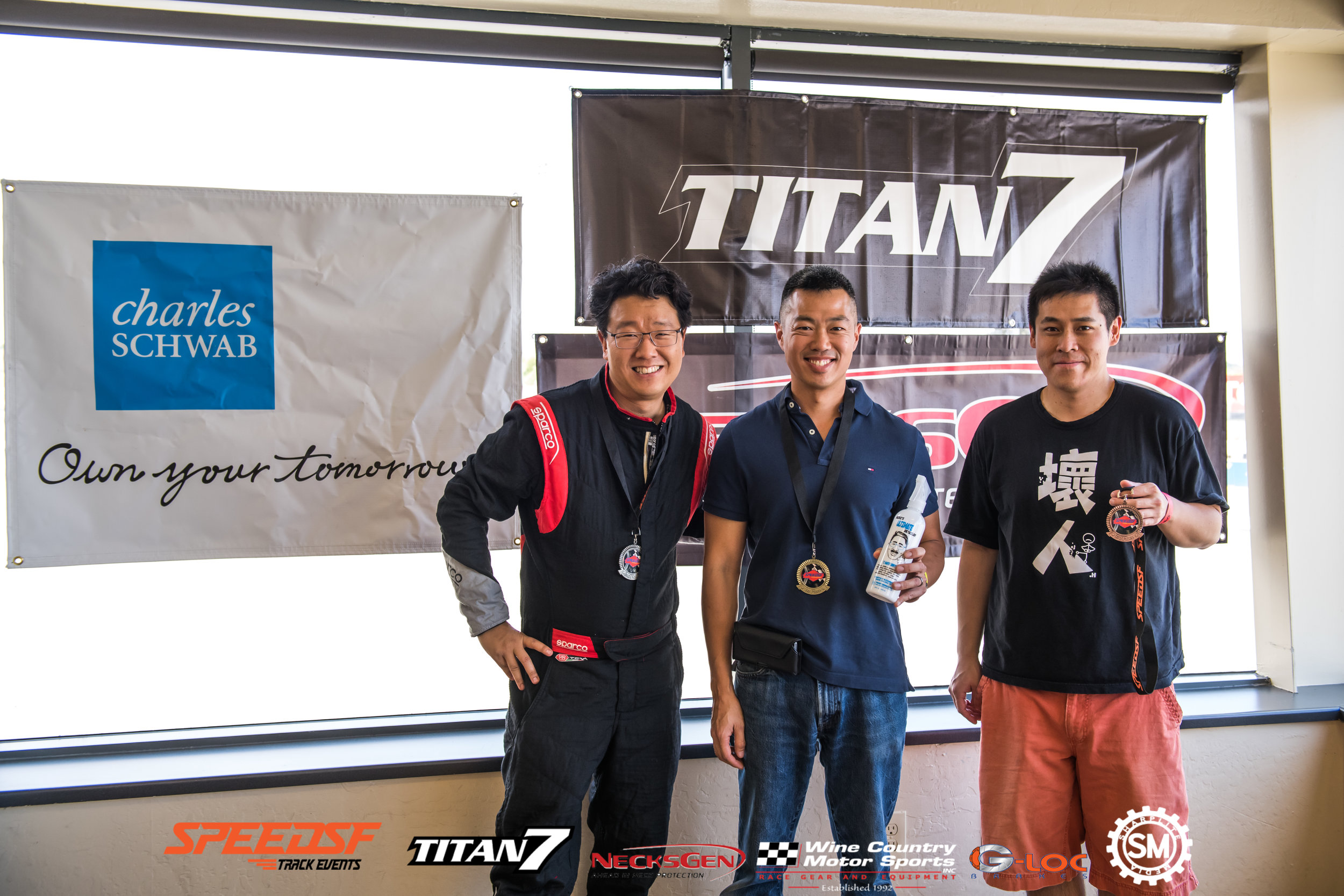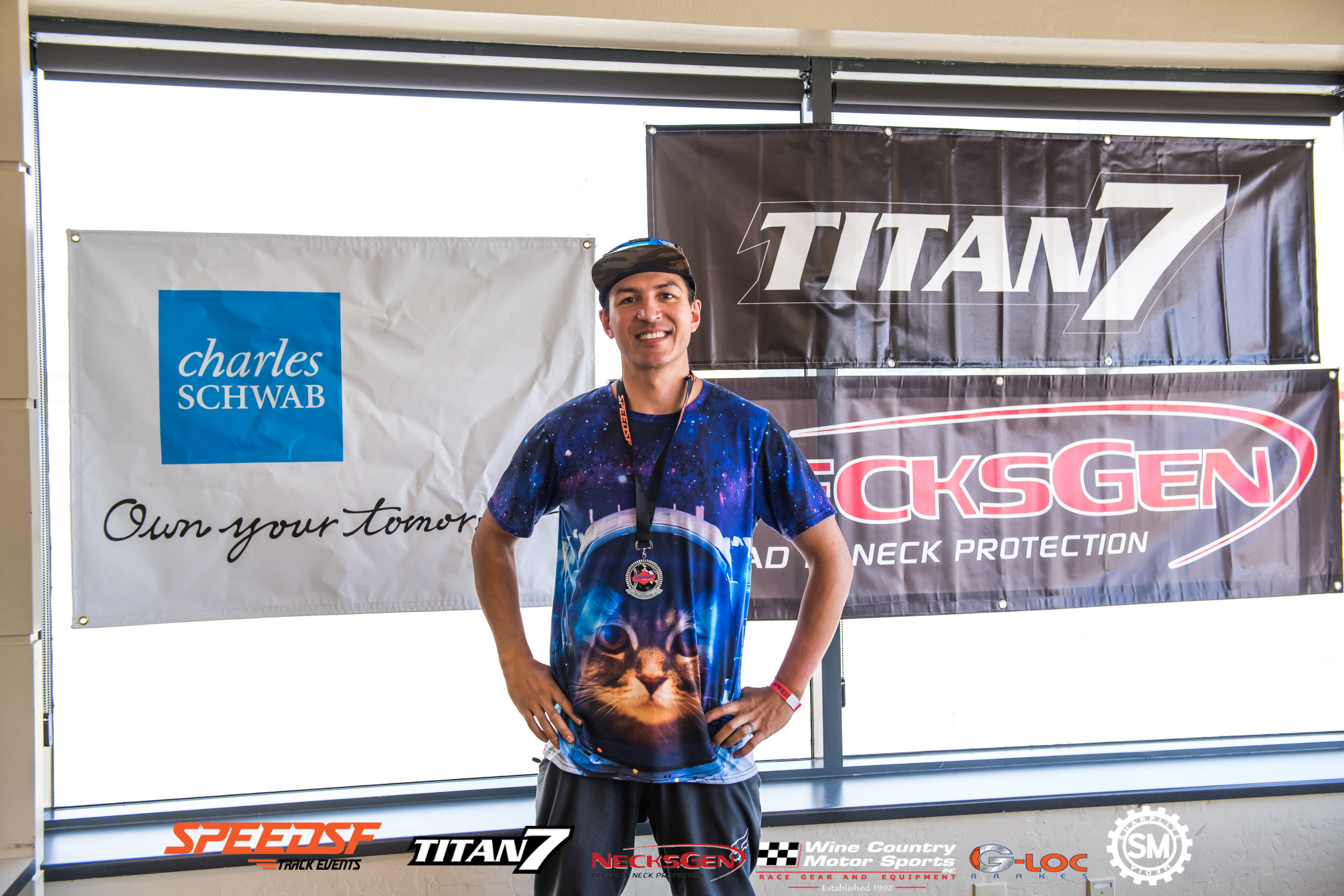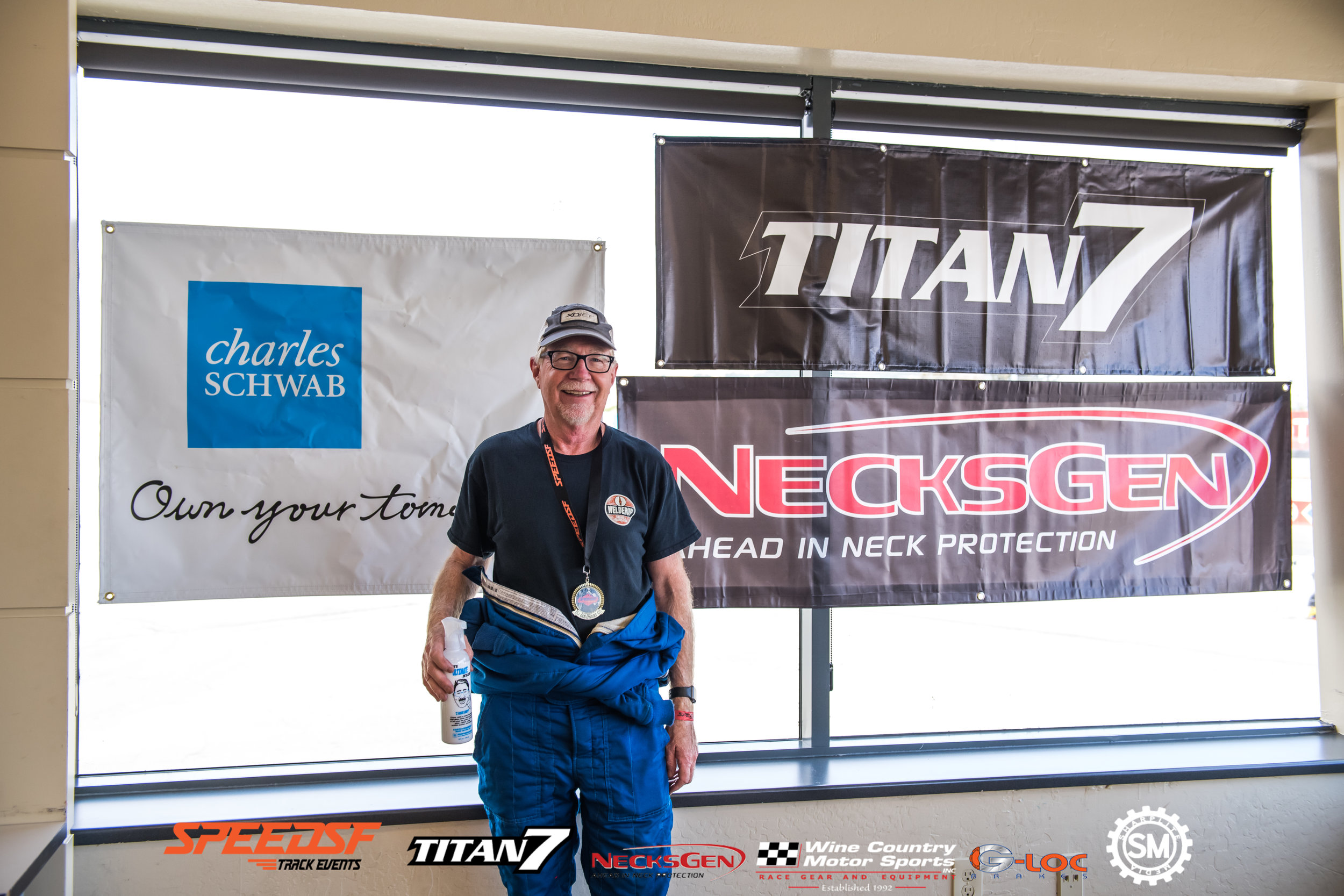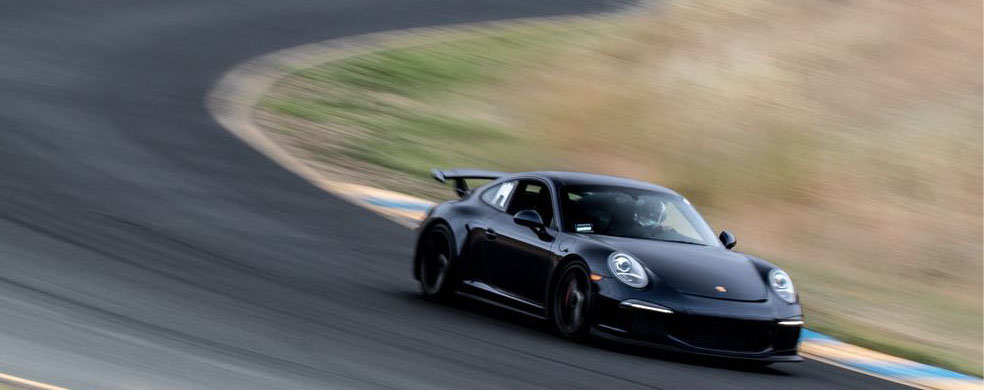
Richard’s MR2 Turbo: Not Too Pretty To Pirouette
Although Richard already had an E92 M3, he decided to spruce up his mid-ship sports car and spin his way into driving competence.
It began all the way back in grade school with Gran Turismo. A few years later, Richard Tran graduated from video games and started moving through the worlds of hard-parking BMWs and drag racing until his expanding network brought a few road racers into his life.
When they invited him to a track day with Speed SF in 2019, he accepted — but not before considering the consequences. Richard was opposed to taking big risks; he’d seriously hurt himself in a car crash a few years before, and he certainly didn’t want to damage his then-new M3, but they persisted — they told him he’d leave the the track feeling something extraordinary.
The feelings of euphoria following that first session helped him forget about the potential costs of thrill seeking. In fact, he’d been bitten badly enough to sign up then and there for another twelve track days. Quickly, he put the dependable M3 on the back burner; he had a cheaper, lighter, more maneuverable mid-engined car he believed would take more to master.
To the trained eye, his 1991 Toyota MR2 Turbo (SW20) didn’t look like the ideal track toy candidate. Actually, it looked more like a museum piece. Three-stage paint, fresh interior panels, and completely new suspension components were all parts of a three-year restoration that culminated in a show-grade vehicle. Richard was so proud of it, he displayed it at SEMA.
Work Meisters and the OEM kouki aero was all that was needed to make the SW20 pop — it truly is a svelte, sexy car.
Despite its immaculate condition, he felt it wasn’t too good to be used in the way he’d (ab)used his M3. In fact, Richard felt that he’d be missing out on something vital if he didn’t track it. There was a directness and a demanding quality about it that made him feel giddy at 5/10ths.
The second outing proved he had his head screwed on straight, but didn’t quite have the quick hands needed to manage the MR2. The factory components just wouldn’t cut it, especially on all-seasons, so he replaced the rotors with slotted Stoptechs and slapped on a set of EBC Yellows. Along with those, he installed a set of Tein Super Street coilovers, a pair of GReddy side skirts, and a 1998-spec spoiler with lifted risers for a little flash.
The basic package was fun, but far from friendly. “I made the mistake of trying to drive it like the M3,” he began, “and that just wouldn’t work. I learned pretty quickly that I couldn’t throw it around or brake as late as I could in the BMW.”
The odd agricultural excursion didn’t dampen his enthusiasm for his demanding new car.
After many red flags and several stern conversations with the track workers, Richard learned he had to soften his inputs a little and improve the chassis a lot. The second-generation MR2 is known as a nervous car prone to rotate without much provocation, but it can be tamed with some suspension work, a little maintenance throttle, and the right sort of staggered tire setup.
Giving precedence to the rear axle began by fitting the rear wheels with 245/40R17 Federal RS-RR Pros — somewhat wider than the 215/40R17 fronts. Then, Richard turned to Elite Performance’s Melody Cannizzaro to soften the sensitive midship’s edges. A little more front camber relative to the rear helped settle the rear end while cornering, and more toe-in at the rear kept it planted under braking and acceleration. Then, as advised by his friends, Richard tried stiffening the front to minimize the nose dive under heavy braking, which could encourage the lightened rear to spin.
Minimizing some of that see-sawing gave him much more confidence in the car, and the resulting improvements in cornering speeds helped Richard notice a few more of its shortcomings.
It wasn’t the tight, direct thing he thought a lightweight MR car would be, but, after all, it was nearing a half-million miles. Sunshine Auto overhauled the entire suspension, adding new control arms, bigger sway bars, inner and outer tie rods, additional chassis bracing, and a set of 808 Racespec coilovers from Bob Pham. “The new setup made the car feel like a go-kart. Actually, the first day back at the track with these mods, I went six seconds faster than I’d ever gone before,” he exclaimed.
Richard’s love for the Sailor Moon series gave this car its eponymous nickname.
“Those modifications transformed it from a decent daily driver to an uncomfortable track car, but I still trust it enough to drive it to the track — it hasn’t left me stranded once,” he said. Pretty impressive for a car that just passed the 500,000 miles on the odometer. Chalk a bit of that up to build quality from the late-eighties Japanese boom, some of that to Richard’s obsessive maintenance habits, and a little bit to the near-stock configuration of the power train.
Aside from a Mishimoto radiator an HKS SSQV BOV, and a Berk 3” exhaust, the original 3SGTE motor remains stock.
Aside from a splitter and a pair of canards, Richard doesn’t plan on adding much more. Actually, he’s confident enough to admit he’s the limiting factor at this stage. “My friends will get in and go six seconds faster than I can, so I know I need seat time more than anything. Well, I could use a set of Sparco Circuits because I’m getting thrown around on the stock seats, but that’s about it.
For me, it’s the perfect track car — dependable, fun, and constantly challenging. I don’t really care about making it the fastest car here. I’ve got a ways to go as a driver, anyways. I’m not here to be the best — I just want to have fun, and in that department, the MR2 always delivers.
My track friends’ words of encouragement and support have been a driving force behind my journey; pushing me to overcome obstacles and strive for greatness. I rolled my car once many years ago and I was in the hospital for months. I thought I wouldn’t walk again.
My wife did not want to see me in another accident ever again. Actually, she wanted me to retire, but she saw how happy I was attending track days with friends, so she now watches me track. I promised her I’ll never go completely flat-out ever again and I’m fine with that — as long as I get to see her smile.”
Special thanks to Elite Performance, The Driveway, and Sunshine Auto.
Sonoma’s Recent Repave Helps Set New Records
Sonoma’s recent repave — the first in over two decades — has helped Speed SF’s fastest set new records in three of the Challenge groups.
Speed SF’s drivers were fortunate to be the first members of the public to experience Sonoma’s new repave — the first in twenty-three years. One of Northern California’s most popular race tracks, Sonoma has been the site of NASCAR, IndyCar, and World Touring Car races over its fifty-five years.
Construction began after Christmas, with ABSL Construction of California milling out over 10,000 tons of asphalt from the track and pit lane, then grinding down the track, repairing old cracks, and laying the new asphalt.
Crack sealing in January.
Construction completed on February 23rd, two weeks before Speed SF was able to experience the new surface for ourselves.
The scenery was verdant, but the repave was far from green at Speed SF’s first full-track event of the season — enabling some of our front-runners to set new records in three of our Speed SF Challenge groups. Even those who hadn’t set new records set personal records. “The track is about three seconds faster than before,” Patrick Chio reported.
S4
In S4, Sean Win-Yepez cut 1.1 seconds off his previous best.
“There is more grip everywhere, but the gains are especially noticeable in T3/3A. There, there was so much grip that my power steering started to cut out!
One observation is that the curbs are not redone, so they now offer relatively less grip than the track itself, whereas before they were essentially about the same as the pavement. So, drivers who didn't use the curbs before will pick up more time than drivers who used them a lot.
My setup has remained pretty similar to last year, and I don’t think I benefited as much in the traction zones as some of the more powerful cars,” he added.
S3
In S3, power helped spread the distance from the previous bests a bit further. Spencer Kimball chopped the previous S3 record, set by him last May, by 2.59 seconds. In the last fifteen months, nothing about his setup has changed aside from some weight reduction. "The new paving really helps with consistency and driver confidence. Thanks to the smoother surface and lack of cracks, you can now take T1 and T2 on proper line instead of diverting your path to avoid surface undulations. I have yet to analyze my data and compare it to my previous run’s, but my lap times were about two seconds faster than my last event at Sonoma in 2023.
Based on my quick and dirty analysis, time was gained in T1, the exit of T6, and the T8/8A esses. One of the coolest features of this totally fresh paving is that my tires looked brand new after the event. Once it's rubbered in, I think we'll be seeing a lot more sub-40 cars at Sonoma,” Spencer predicted.
S2
In S2, Maxwell Lisovsky was able just to show what his monster E36 is capable of. It has benefited from the most development as of late, but that doesn’t take anything away from his staggering 1:39.3 — a whopping 3.5 seconds faster than his previous best. Now, applying the power cleanly in second-gear corners is almost an afterthought for a sorted track tool wearing slicks.
It seems that, due to gaining something more in the traction zones, the punchier cars have been able to take better advantage of the new grip available. However, even those in the budget cars and the underpowered scalpels will find something to love about the fantastic new surface at Sonoma Raceway. These times bode well for the future, which promises novel challenges for drivers and opportunities to push harder than they ever have before..
To sign up for Sonoma event on June 21st, click here.
.
Walter’s Sentra: Lifetime Obsession
Twenty years after crewing for various teams in the Spec SE-R series, Walter began racing himself and made a very special Sentra his own.
A lifelong Nissan fan and a crew member for an old NASA team running an SE-R, Walter seemed destined to pick up this particular Sentra. His family had brought him up on Zs and Maximas, so when Walter turned 16, he bought his first car, a 1991 Sentra.
That sowed the seed for the next several years. Inspired by Need for Speed, he started tuning his Sentra and soon became a knowledgeable voice in the community as well as an in-demand mechanic. His reputation opened the door to crewing positions for several big teams running in NASA’s SE-R Cup series back in the early 2000s — some of which even ran in the 25 Hours of Thunderhill.
In 2003, Walter stepped away from cars to focus on family. That break lasted for fifteen years. After that long interim, he picked up an E46 M3 and started driving himself. As good as the BMW was on the track, the love for the old Sentra, now mixed with his recent racing experiences, led him to consider building a special Sentra for racing. However, he couldn’t spare the time he once could, and so he hoped something half or wholly-built would pop up in the classifieds.
When an old friend reached out to Walter with news of a special car for sale, he felt like his stars had aligned. Not only was this particular Sentra built by MotoIQ’s Mike Kojima, but it had been the brother of a car Walter was familiar with — one which had been raced in SE-R Cup back in the day.
That particular car from his crewing days was named “Dog I.” This was “Dog II,” the sister car. The two had been given their monikers from their Petco sponsorship; they had pawprints plastered all over them during their racing days. The latter wasn’t used much in Spec SE-R, but it had seen some action in the Pacific Tuner Championship ten years ago. Since then, it’d been stored and taken out for the annual track outing. The price was right, the build quality was obvious, and the decision was easy. Walter drove his truck and trailer down to LA that weekend and began a new relationship that joined his past with his future.
Like its sibling, Dog II is built upon a body-in-white build with all the right parts. The motor, a 2.1-liter SR20VE with 11:1 compression, produces 200 horsepower and 170 lb-ft of torque on a 50-50 blend of 91 and 100 octane fuel. It’s a peaky motor, but with only 2,600 pounds to push along, it makes do.
An oversized Koyo rad is part of the beefy cooling system that helped Kojima run the car comfortably in desert heat.
Handling comes courtesy of a square set of 235/40R17 NT01s wrapping Volk TE37 wheels and an intricate cage connecting all four shock towers. Ground Control coilovers, plenty of front camber, and a bump steer kit help the car follow every minor steering input. The final touch, a little bit of rear axle bending to toe the rears out slightly, contributes to the Sentra’s immediate turn-in — the kind that is vital in a front-drive sedan. “Super oversteery” were the words Walter chose to describe its balance.
The car was just about perfect. Aside from updating the safety equipment, Walter felt it needed nothing. That was until he drove it on track for the first time and struggled with the peakiness of the motor. Despite the SR20VE’s variable valve lift, it isn’t quite as tractable as he wanted. So when picking out a new Nismo LSD, he specified a 4.75 final drive to keep the engine in its sweet spot more of the time. And like that, he was done with modifying it.
The problem with a car like this, even a relatively simple car that’s nearly completed, is that it requires a trained race shop to maintain it. He leaves it to Tarek at All Automotive in Mountain View. “They have the suspension geometry expertise and motorsports experience needed to direct the continuing development of the vehicle as well as continue the maintenance needed after every season,” Walter adds.
Now that the Sentra’s up to date and running reliably, he hopes to put in as many track days as he can. It hardly uses its brakes; the Wilwood four-pistons and 11.75” rotors are understressed. For how fast it is, it’s remarkably easy on consumables. It’s still on the same set of tires the car came with, too.
He played a supporting role for many years, but once the ball was rolling and he was able to sit himself in the seat, things have gotten steadily better. His racing education helped him make the right decision when it came to buying a purpose-built car — one which has given him the opportunity to put in his 10,000 laps without having to regularly wrench on the car. The fact that he’s finally getting to hone his driving skills on track in such relaxed fashion is sweet, but it’s not quite as sweet as being able to simultaneously revisit his tuning heyday and witness his racing future expand.
Fenton's Integra Type S: A Change of Heart
While he was on the fence for a while with Acura’s bigger, boatier Integra, the Type S had enough of the right stuff to convince him to try this front-wheel drive super sedan.
“I used to be the biggest hater of FWDs,” he started. Despite his introduction to cars coming in the form of a Civic, he rapidly transitioned into rear-drive platforms when he took up track driving. After a pair of S2000s, he moved onto Porsche Caymans, 911s, and, most recently, a Subaru BRZ. What they all had in common was their rear-drive layout, which cemented in Fenton the belief that all other drivetrain configurations were beneath consideration.
Lately, he’s had a change of heart.
It was an unexpected decision to sell his BRZ. Oil starvation issues concerned him, but he had also owned the car for eighteen months and was starting to wonder what decent replacement was out there—something new, fun, and practical between fifty and sixty grand.
Actually, he was a little more particular than that:
1) It had to be track-capable.
2) It had to have been endorsed by Throttle House, savagegeese, or TheTopher.
3) It had to be at least as practical as the BRZ.
4) It couldn’t break the bank in the event of an incident.
Not much in that price range met his requests, but the faster Hondas, despite driving the wrong axle, were fairly close. But it was more than the drivetrain that deterred him at first.
“I remember when the base Integra was first announced, I thought Acura was disrespecting the Integra name. It looked like a boat; it had no resemblance to the DC2 or the DC5 and, I believed, was probably an overpriced Civic.”
A few months later, the Integra Type S was announced, and Fenton found himself torn. “I started to love the way it looked. Even though the general shape was the same, they tweaked the right areas to make it look like a driver’s car. This had proper flares, an aggressive rear diffuser, a vented hood, gaping intakes—it was unique and purposeful.”
“The Integra wasn’t really on my radar until, one day, I was bored at work and decided to configure a car on the Acura website. I specced out my ideal Type S, and figured I’d add my email to their list—why not?
The next day, Acura of Pleasanton, just seven miles from my house, contacted me and offered that exact car at MSRP plus $1,000 of non-negotiable dealer add-ons. One prospective buyer had backed out and my name came up on their list.”
At the time, he’d been considering the FL5 Civic Type R, though the markup was significant. Plus, the car has a number of creature comforts and tuning differences over the Civic that makes it a better daily. An Integra-specific re-tune of the K20C1 engine, shared between the two, provides much more mid-range torque. Additionally, the Integra’s electronic dampers benefit from new tuning to make it a more supple road car.
The case in favor of FWD was growing, but he still had his bias to overcome. “I used to believe that, if you cannot powerslide it out of a corner, it’s not a sports car.
However, he couldn’t find anything else under $60,000 that is spacious, has a backseat, has a manual transmission, is track-capable, and is rear-wheel drive. I realized that, in order to hit my price point, I’d have to make one or two concessions.
I figured I’d at least give the Integra a try. In person, it looked fantastic, and it felt like a $50,000 car inside. It was something I could live with on a daily basis. The shifter is nearly as good as a Honda S2000’s, the ride quality is phenomenal; with the dampers in comfort mode, it rides almost as well as a luxury car. It has minimal torque steer and phenomenal brakes. After driving it around the block, I was sold.”
He bought it that day.
Since then, he’s beaten nearly all of his previous bests. At Laguna Seca, Thunderhill East, and Thunderhill West, he’s beaten his bests in the BRZ by 2 to 3 seconds. Some of that has to be down to Integra having twice the torque, but, as Fenton’s learned, a FWD car might be easier to come to terms with.
“I can lean on the car more confidently, whereas the BRZ would break away more abruptly. I know that, on turn-in, it’s going to understeer, and while that might sound boring, it means I can get up to speed a little bit faster, especially on cold mornings.”
At Laguna Seca, he drove the tires off his car—literally. Underinflating the PS4S tires to try and keep them in their ideal range seemed sensible, but during turn-in to Turn 6, the front-right tire debeaded. “I only stopped a few feet from the wall. It taught me not to track 30-profile tires with soft sidewalls any longer.”
If there was one issue beyond that, it was the lack of support from the stock seats. “The OEM seats are inadequate for track driving; they are the same design as the base Integra with very little bolstering. The OEM FL5 seats are supportive and soft enough for daily driving and track duty. I’d happily exchange the Integra seats’ heating and electronic adjustability for the FL5’s greater versatility.”
And so he started adding the first round of modifications, beginning with a set of 18 x 9.5” + 45 Apex VS-5RS wheels wrapped in Kumho 265-35 V730s (the same as he had on his BRZ for fair comparison), as well as a set of Ohlins Road & Track coilovers.
The Road & Tracks have a reputation for being more road than track, but the Integra-spec 6kg front and 10kg rear springs are much stiffer than what’s normally offered. “The spring rates have helped a lot with tucking the nose. You can get consistent mid-corner rotation with a lift-off the throttle.”
Along with those mods, he added some Castrol SRF fluid and a set of Endless ME20 pads from RHD Japan since the yen is weak now. Their torque rating is much higher than the standard pads, which were at least resilient enough to run sessions at Laguna without fade.
With the first round of modifications in place, he took it to Thunderhill West and ran a 1:24 in his second session—some 2.5 seconds faster than he ever went in his hardcore S2000 on Federal tires. “It felt adjustable; it wasn’t a battle against understeer in every corner. You can transfer weight with the inputs and rotate the car in small, measurable increments. That’s something I find a modern GTI just won’t do.”
Most recently, Fenton ran Thunderhill East Bypass for a day that he found encouraging, if not a little frustrating. After spinning in the first session and getting the black flag, he found himself without traffic in the second session and logged a 2:01. “I believed I could find another one to two seconds in the third session, but one of the flaws of the car held me back.”
In order to completely avoid fuel starvation, the tank needs to remain above half-full. After dipping below the middle hash five minutes into his third session, he spent the remainder dealing with fuel cut. He couldn’t leave too miffed; he’d only had one real session to push the car, and with that 2:01 indicated on his Garmin, he’d already gone three seconds faster than he ever had in the BRZ.
Considering he’s only done three modifications and is already three seconds faster than the BRZ, he has no regrets. “I might not be powersliding it everywhere, but it’s taught me that there are other, subtler ways of manipulation.”
Beyond all this, I can drive to and from the track in complete comfort. With radar cruise control, lane-keep assist, blind spot monitoring, heated seats, a premium ELS sound system, and even a sunglasses holder—I’ve never been so comfortable on my way to and from the track before. Going from a partially gutted S2000, to my mostly-practical BRZ, to this, I’ve experienced three distinct improvements in comfort. Plus, I can ferry people around. There is plenty of space for four adults—roughly the interior space of an Accord from fifteen years ago.”
It’s still a little too quiet to hear with his helmet on, so he’s planning on upgrading to a modest exhaust that should make it easier to gauge where he is in the rev range, reduce backpressure, and find a little more grunt. That said, it’s not lacking in that department; it has more than enough torque to run third gear through most of Thunderhill West. Oh—it could use more front camber.
In Fenton’s eyes, it deserves to be seen as Acura’s flagship sports sedan—it’s a deserving successor to the DC2 Integra Type R. “It’s a compromised car at the end of the day, and yet they have kept all those compromises from adversely affecting driving enjoyment. To me, it’s the perfect compromise.”
Blake's M4: Friendly Firepower
While the F82 still lacks the tuning support some of its predecessors enjoy, the long-wheelbase platform has served Blake Titus as he’s learned the basics of track driving. A satisfying platform that’s “always on the verge of killing you,” as he puts it.
Lead photo credit: @danielbooty
He could look past one letting go, but when the second EJ motor blew, Blake Titus’ honeymoon phase with his WRX officially ended. Though there was an opportunity to rebuild for the third time, Blake sensed a better platform might help him make an easier transition from autocrossing into track days. He was half-right.
The Subaru’s successor, an S52-swapped E30, held some promise, and for a while, it seemed like he’d found a way to get his jollies with half the headaches. That wasn’t to last.
As it turned out, the S52’s head had cracked somewhere on the way to his first track day at Thunderhill West. After pulling his oil pan’s plug, a milkshake poured out, and Blake considered throwing in his helmet.
Thankfully, there was another car sitting in Blake’s garage. His F82 M4 was far from track-ready, and the predicted running costs made him wince, but it was operational and still covered under warranty.
His first outing at Laguna was successful; a 1:42.10 is an encouraging time for a heavyset grand tourer with more torque than traction. Sure, it floundered around on stock springs, but that time in an intermediate’s hands proved beyond a doubt that the F82 platform had potential. He knew it wouldn’t be easy on his wallet, but out-of-the-box performance like that can make people do silly things.
Curious where he could start tweaking the car to find some more cornering speed, he got underneath it and studied the intricately arranged layers of structural stiffeners meant to help the big BMW belie its weight.
“You just have to look around and marvel at how much structural bracing there is. After a while, you start to ask yourself, ‘How could I improve upon this?’”
Thankfully, not much is needed to get this car ready for the racetrack. The first round of basic bolt-ons consisted of a staggered set of Apex EC7s wrapped in Toyo R888Rs, GLoc R18 and R10 pads, Castrol SRF fluid, and a set of Girodisc two-pieces—the factory rotors would warp after a few track days.
That simple setup served him well for the first year of tracking the car, but after he’d gotten properly acquainted with the M4, he sensed the weight wasn’t being managed as well as it should be.
To hasten weight transfer and provide a little more body control, Blake picked a set of Swift Spec R springs measuring 5K and 13K front and rear, respectively. These were a grand compromise; they were chosen so that he could retain some semblance of comfort on his drives to and from the track. Mainly, they allowed him to keep using the factory EDC dampers.
“I’ve kept it full weight for now. I thinks it’s pretty easy to turn a nice dual-duty car into an uncomfortable POS,” Blake admitted.
The rubber began to feel like the limiting factor after some time, so Blake bought a new set of tires that promised more consistency. The Nankang AR-1s delivered in that respect, and they helped him chop two seconds off most of his best times.
They would fade fast, though no faster than any other tire he’d tried. Its heft was undeniable and, unfortunately, virtually unmovable. Most of the strippable weight sits around the rear axle, which shouldn’t be removed. Even in stock trim, the M4 needs more weight over the driven wheels; it always struggles to administer the S55’s power without wheelspin.
In the name of improving traction, he decided to try to force the rear into the pavement with Bimmerworld’s GTMore wing. It made a considerable difference—he chopped his time at Buttonwillow 13CW by four seconds the first time out. However, the front hadn’t been balanced aerodynamically and the resulting understeer made it even easier to fry the fronts. Bimmerworld’s rep recommended he try a track-oriented set of shocks, so Blake bought a set of MCS two-ways and turned a few knobs.
Few things have helped settle the rear like Bimmerworld’s dry carbon GTMore wing.
He might not’ve known precisely what he was doing, but he was relieved to see the rep had Blake’s best interests in mind. The resulting compliance made a world of difference—particularly at the bumpier tracks he frequented. At Buttonwillow 13CW, Blake could drop his best time by nearly three seconds—a 1:55.8. Quite an improvement from a set of shocks adjusted and an educated guess.
Credit: CaliPhotography
He figured that then would be as good as any time to throw a front splitter into the mix, so he tried cutting his own Alumalite piece and bolting it to his front, but it folded at the end of Thunderhill’s front straight. The replacement, Turner Motorsports’ MC2P splitter proved more resilient and effective, though it still cannot match the downforce generated at the hinteraxel. To find an agreeable balance, Blake had to reduce the wing’s angle of attack.
By this stage, Blake was pushing the car hard enough to test the powertrain’s thermal resilience. After one frustrating leak from the charge air cooler, he replaced the factory item with one of CSF’s, and swapped the standard heat exchanger with a Koyo unit. Since then, it hasn’t been fazed by August heat.
A square set of Yokohama A055 slicks mounted on narrower APEX VS5-RS wheels gave him the grip and neutrality he’d been seeking for some time, and with the elements cooperating, Blake went back to Buttonwillow and logged a 1:54.3—his best yet.
Blake’s still searching for a 52, but he feels that the M4 needs to diet or get its footwork finely tuned by a master before that’s possible. As mentioned earlier, pulling weight isn’t his idea of a good time, so he’s decided instead to buy the every one of Turner’s adjustable suspension arms as well as their differential bushings for perfected body control. If all goes to plan, he won’t have as much difficulty putting down the power—which he’s recently increased with a Bootmode BM3 CS tune. As much.
While the F82 M4 doesn’t change direction like a true sports car can, it compensates with unbelievable power—enough to spin at seventy in a straight line. Where it’s at its best is in the longer, faster corners; the long wheelbase and accompanying stability make it easier to trust in these bends. At this point, it’ll just take a little bit of tweaking to make it a nimble thing in the sections where traction and rotation take precedence.
Credit: @ariesphoto7
If Blake’s experiences have taught him anything at this point, it’s that “the torque is always trying to kill you, so you have to be very quick with your hands and be confident in your skills; you have to drive with all the nannies off. MDM will kill your lap times and too many people rely on these systems. Then the first time they turn the traction control off they send the car to Copart.
The F82 is an amazing platform that still lacks in some of the aftermarket support that have made the E92, E46, and E36 such appealing track cars. Still, the potential is there to make the F82 a real contender once the rest of the world catch on. I can’t wait to see what other companies offer in the future to keep improving on the platform.”
Matt Paige's C6 Z06: The Track Rat’s Idea of a Hybrid
Rather than chase big power, Matt Paige made the necessary adjustments to this cost-no-object Corvette track car to make it reliable, approachable, and sexy.
Photo credit: APEX Staff Photographer @victorgiang
There’s something refreshing about watching the onboards Matt Paige posts all too infrequently to his YouTube page. It only takes a couple corners to see evidence of a well-sorted car in action. Soft turn-in, great traction, and a real sort of stability that gives him the reassurance to push hard are traits we can appreciate from the start of his lap linked below.
By addressing every performance-related department in more or less equal measure, the car has a wide array of strengths which make it a versatile machine most speed freaks can appreciate. It’s a car that’s civil enough for short drives on the street, despite being tuned and tweaked to drive full lapping sessions without worry.
The track-street mix doesn’t place much emphasis on comfort, but it does make sure the factory bodywork is retained while using the airflow over it more effectively. For instance, the rear brake ducts are repurposed to direct air towards the gearbox and differential.
The vented hood isn’t stock bodywork, but it does fit the whole scheme as it’s painted the same shade of yellow.
Up front, the LG Motorsports splitter removes the front airdam and, in conjunction with a vented hood, helps the hot air inside the engine bay evacuate. Downforce and cooling addressed in one fell swoop—all without disrupting the soft, curvaceous shape of the C6.
That two-birds-one-stone approach could be seen in the greater build objectives with this particular Corvette. First, Matt wanted to show what his company is capable of. Few cars really fill the dual-purposer role, but Laptimz Motorsports used all their knowhow and a considerable budget to make it a track guy’s idea of the ideal hybrid.
The second objective was to demonstrate the value of a track car that doesn’t prioritize outright speed. Even with the lap times it’s capable of, the build emphasis was on stress-free track work; the company aim is getting enthusiasts onto the track with minimal fretting and frustration.
For that reason, reliability came first. Matt strove to keep the temperatures low through a set of Setrab oil coolers and a G-Speed laydown radiator. To ensure steady lubrication at high lateral and longitudinal loads, he picked a dry sump system from Dailey Engineering. For a milder balance with a hint of push, he chose a staggered set of Apex VS-5RS wheels wrapped in wide rubber—315s up front and 345s in the rear.
That wide footprint easily harnesses the engine’s output, as this LS7 isn’t crazy-powerful by LS standards. With the help of American Heritage heads, a Katech Torquer cam, Katech valves, and a pretty mild exhaust, it makes 525 horsepower and 520 lb-ft of torque—more than enough shove for Sonoma and Thunderhill.
Unfortunately, the retention of the interior pieces and most all the factory bodywork makes this 3,000-pound middleweight a little heftier than most track cars of this caliber. Still, those lightweight wheels, SKF hubs, aluminum hubs, lighter AP Racing brakes, and LG Motorsports drop spindles trim some unsprung weight. It all contributes to a feeling of uninterrupted adhesion with the road beneath. After all, it’s not only about the total weight, but where it’s located.
Photo credit: Trevor Ryan
The result is a car that’s sure on its feet, urgent, stable, and somewhat progressive when it does break loose. Now, the use of a delicate right foot helps Matt stay out of trouble, but he has to tread carefully on cold tires—big 315s have a habit of letting go abruptly if they’re not brought up to temperature before getting abused.
A little Lexan, lightened footwork, and a carbon roof help this Corvette belie its weight.
Even when the car does slide, the fresher suspension and direct feeling through the wheel give Matt enough information to correct snaps and shimmies without breaking a sweat. Not even a slide through the middle of Sonoma’s Turn 10 seems daunting, as seen at 1:28 in the footage above. This surefootnedness helps Matt push hard without trepidation—and feel like a superhero in the process.
Without a doubt, we’d certainly have fuller fields if this is how all track toys were built.
Showdown at Sonoma: Battle Between the Fastest Stateside A90 Supras
Jackie Ding and Will Kwok have both gone quite far in tuning their A90s—further than any others on American soil. With Gary Wong piloting Will’s machine, these two drivers demonstrate where variations in tuning are felt most around Sonoma Raceway.
They’d known each other from the forums and hours on the phone, but they hadn’t met in person. For the last few years, both Jackie Ding and Will Kwok have developing some of the fastest A90 Supras in the country, and only recently were about to partake in some friendly competition.
Jackie’s PhD Racing Supra, now famous online thanks to his growing YouTube channel, caught the attention of Will in 2019. “Will quickly became a huge supporter of PhD Racing Lab and is now our biggest customer. He’s always a great guy to talk to, so he was one of the first people I told I was coming out to the West Coast. Naturally, we started talking about a little battle when I was there,” Jackie told us.
It was Gary Wong, Will’s hired hotshoe, who supplied Jackie with Speed SF’s schedule. Jackie picked the dates that interested him, and the two decided to have themselves a duel. If Jackie couldn’t finish more than a half second ahead of Gary at Gary’s home track, he’d have to buy dinner.
Footwork
Since Will got most of his pointers from Jackie, perhaps first real time attack driver to develop the A90 Supra in the U.S., the parts used on the two cars aren’t that different. Both share most of the SPL catalog available for the A90, including the SPL front lower control arms, SPL adjustable front caster rods, SPL rear toe links and eccentric lockouts, SPL bumpsteer correction kit, SPL rear traction links, SPL rear upper lateral links, and SPL front swaybar endlinks. There are a few notable differences, though; Jackie’s car sports the Reinharte two-ways coilovers while Will’s is on MCS three-ways.
Powerplants
Supras have a certain reputation to live up to, and both these cars do that with over 1,200 combined horsepower. Jackie’s B58 is improved with VP MS109 direct injection and a Garrett GTX3076R Gen 2 as part of the AMS Alpha 6 turbo kit. The total output: somewhere in the 650-horsepower range.
Will has explored a little more of his motor’s potential. His sports the Pure800 turbo, flex fuel, and port injection,—enough for 700 horsepower at the real wheels, depending on power map. The power outputs are similar, but Jackie has to leave a little on the table as his gearbox hasn’t been built, unlike Will’s.
Though slightly heavier, Will’s car is a little faster on the straights due to a stronger gearbox and another fifty horsepower.
For both Sonoma and Laguna, both cars sported the same tires: 275/40/18 CSR. However, the grip levels provided varied due to weight and aerodynamics. Jackie’s car-driver combination is somewhere around 150-200 pounds lighter than Gary and the purple car, and the configuration of wings and splitters are different enough to provide very different characters. While Will’s car has the Spage V1 front splitter, Jackie’s has the V2. Both running the Spage SP012 68” swan neck GT wing, but Jackie’s wing is mounted slightly lower for a less understeery setup.
Similar setups, similar parts—that would be the case since Will has relied on Jackie for tuning advice. However, their design ethos differ somewhat. Jackie’s car is much more suited to the high-speed stuff, while the purple car is more compliant, more squishy, and better suited to the slower tracks on the West Coast.
Subtle Differences OVER one Lap
For the first half of Sonoma, Gary held the edge. The bumps in Turn 1 were tough, but when it came to hard braking and high-speed direction changes, as in Turns 7 and the 8/8A esses, Jackie and his slightly pointer car pushed ahead. Turn 10 obviously favored the aero grip of the red car, but it wouldn’t be fair to say it was as simple as turning the wheel and matting it. As we can see in the footage below at 8:53, a little braking too late and adding a little too much throttle after the speed change prior to Turn 10 caused a moment which might’ve given Jackie a little heart palpitation. Without a doubt, Sonoma is a driver’s track that Jackie had to learn in a hurry.
“Their car handled the bumps better, so in sector 1 at Sonoma, Gary definitely had an edge on us. Our car, being more stiffly sprung and heavy on compression, is a really high-speed focused aero car. While we lost a little in Sector 1, we gained that back in Sector 3’s high-speed esses,” Jackie elaborated.
“I was surprised with the braking performances. We were both running the same CSG pads, but I think I had more confidence in my brakes, even though I’ve only got a Stoptech Trophys on the front axle. Will’s car has APs 9660s front and rear. I think the big reason for that was our more advanced front splitter; having that extra downforce gives us extra front grip under braking,” he added.
At the end of the day, the main difference was in downforce. Both cars produce comparable grunt and share the same footprint, but subtle changes in aero balance and perhaps a slightly svelter shape gave Jackie a slight edge around Sonoma, though it’s only fair to mention he’s been developing this car longer and driving it a lot more. Still, nobody felt shortchanged at the end of that glorious day. Sonoma’s not the easiest of tracks, and it definitely doesn’t suffer fools, and to put that much power to the road through moderately sized tires and not crash is an accomplishment in itself. Dinner looks cheap after the cost of a smashed carbon clamshell.
SPEEDSF CHALLENGE - NOVEMBER 8 - ROUND 9 @ SONOMA RACEWAY
The SpeedSF Challenge circus continued on back at Sonoma Raceway to host its 9th round in this crowd-favorite track. With 26 wonderful drivers taking to the track hoping for Challenge glory, it was bound to be an exciting session for all!
INTRODUCTION
The SpeedSF Challenge circus continued on back at Sonoma Raceway to host its 9th round in this crowd-favorite track. With 26 wonderful drivers taking to the track hoping for Challenge glory, it was bound to be an exciting session for all!
CLASS S1
Easy to podium with only three drivers in the mix, though a surprising result with Gordon Peng’s 2002 C5 Z06 taking the top of the podium with a 1:46.663 lap time, while Ravi Gattamaraju’s 2016 Subaru BRZ took him to a 2nd place finish thanks to a 1:46.731 lap time. Steve Melson’s 3rd place finish in his 2014 Audi R8 was thanks to a 1:47.463 lap time, though we expect him to be even faster the next time we visit Sonoma!
CLASS S2
With 7 drivers in S2, it was bound to get a bit more competitive. The tried and true Dirty Mango S2000 took its spot on the top podium thanks to the class S2 record-beating 1:46.463 lap time originally set by George Kibilov’s previous 1:48.366 record lap time in his E46 M3. This time, George Kibilov kept it close with a 1:47.161 lap time in his E46 M3 and took 2nd place, also beating his previous record-setting lap time for this class at Sonoma Raceway. Rounding out 3rd on the podium was Jacek DTM in some unknown vehicle putting in a 1:49.793 lap time. Very good driving from this group too!
CLASS S3
Sean Yepez’s 1st place podium finishing lap time of 1:45.774 was the fastest lap time out of everyone in the challenge thanks to his crazy 2007 Lotus Exige S, breaking the previous class S3 lap record of 1:47.597 also set by Sean here at Sonoma Raceway. David Fitz-Randolph took a joyride of his own around the track in his 1995 Mazda Miata and put down a 1:46.428 lap time, keeping him firmly in 2nd place ahead of 3rd place podium placer Gary Wong, whose own adventure around Sonoma earned him a 1:47.914 lap time. Good job for the close lap times here, gentlemen!
CLASS S4
Absolutely destroying the competition here, Gabriel Rothman’s 1st place finish in his 2003 Honda S2000 was due in part to his 1:53.481 lap time, while 2nd place podium placer Richard Rozporka put in a 1:57.353 lap time in his 2002 Subaru Impreza WRX and was in no danger keeping ahead of 3rd place podium placer Casey Cummings whose 1999 Honda Civic SI threw down a 2:01.295 lap time for his efforts.
CLASS S5
Genuinely expected a proliferation of MR2s to encroach upon the Miata’s territory, but there was only 1 that showed up: Tony Rodriguez in a 2003 MR2 Spyder. He not only took home 1st place, but he obliterated King Tang’s class lap record of 1:57.012 by putting in a 1:55.540 lap time. Awesome result for Tony who has had a stellar season thus far. 2nd place was taken home by Joseph Nagy in a 1991 BMW 325is thanks to a 1:57.128 lap time while Joe Kou came in 3rd place in his 1991 Mazda Miata, putting in a 1:57.717 lap time. Round of applause to the S5 hustlers!
CONCLUSION
Excellent work by our drivers who won their places and set new class lap records! THANK YOU to everyone who participated in the SpeedSF Challenge on a pleasant Sunday. For those who are still chasing podium finishes, more seat time, coaching, and watching videos of how to attack the track will certainly get you there!
Round 10 will be here soon! Our next SpeedSF Challenge will be hosted at Buttonwillow Raceway during our annual Black Friday event on November 27th, 2020. Rest up and enjoy your Thanksgiving the night before. We truly appreciate our sponsors and participants and we are forever thankful as all of this would not be possible without them!
Thank you to our sponsors Wine Country Motorsports, Titan7 Wheels, Necksgen, and Charles Schwab for their continued and valued support. Please visit their respective websites to show your support and let them know SpeedSF sent you!
SPEEDSF CHALLENGE - MAY 25, 2019 - ROUND 4 @ SONOMA RACEWAY
Ah yes, Infin—Sonoma Raceway. Proclaimed by many drivers as the Best Track in the West, it’s hard to disagree especially when a bunch of high-powered Beetles are at front of the SpeedSF Challenge train eager to put down their best lap times. Whether it’s the various elevation changes, its challenging turns, or the track’s proximity to various vineyards, Sonoma Raceway seems always bring out the best participants during our SpeedSF Challenge.
As a result, 31 drivers joined the Challenge and, oh boy, was it a good one, especially in S4! Not only did the 1st place winner of S4 beat a 2-year S4 Sonoma lap time, 2nd place and 3rd place were within tenths of each other!
With that said, let’s go to the results!
Class S1
The High-Powered Beetle Group along with some four-bangers and a 2-door Chevy! Chris Bales and Jeff Han ruled this class with a 1-2 win, respectively. Chris Bales took his 2019 Porsche GT3 RS to a first place win by putting down a 1:45.826 lap time, just .600 away from beating Andrie Hartanto’s Ferrari F430 lap record here at Sonoma!
Jeff Han’s lap time of 1:47.128 in his 2016 Porsche 911 GT3 RS was great as well, placing him 1 full second ahead of some kind of silver 2002 C5Z06 Corvette driven by Gordon Peng.
Gordon’s lap time of 01:48.133 was just enough to keep him in 3rd place, as Bruce Lee’s 2018 Chevrolet Camaro ZL1 1LE was gnawing at the bit with his 1:48.555 lap time. Perhaps next time, Bruce. Until then, be like water, my friend.
Class S2
Maximum Effort was indeed displayed by the drivers above…and George Kibilov (not pictured), I guess. After Ostby’s S2000 time was deleted, the top 3 winners for this class was Gary Yeung, Anthony Calayas, and the aforementioned George Kibilov. The Dirty Mango S2000 took a commanding 1st place win after Gary drove a blistering 1:48.446 pace, which was only .047 seconds off his own S2 Sonoma July 2018 lap record. You’re losing it, Gary! Maybe a favorable gust of tailwind would have been helpful to get you over the line just a bit faster ;) .
Anthony took his Porsche Cayman GT4 to a great 2nd place win by putting down a 1:49.500 lap time, while George drove his 2002 BMW M3 to a 3rd place win with a 1:50.309 lap time. Great driving by all, including Ostby with his deleted lap time!
Class S3
Class S3’s top three drivers consisted of two guys who have one-syllable last names and some famous So-Cal driver with a multi-syllabic name. The fact that Sonny drove all the way up to NorCal goes to show how appealing Sonoma is to drivers!
Reigning class champion Gary Wong took his 2004 Honda S2000 to a 1st place victory showing that SoCal Sonny who’s boss by placing a 1:50.318 lap time. Sonny, for his efforts, drove his 2013 Scion FR-S to a secure 2nd place win by throwing down a 1:51.546 lap time. He was the probably fastest FR-S on the track for the whole day! Kenneth Yip and his 2011 BMW M3 took home 3rd place with a lap time of 1:52.495. Good job to everyone in this class.
Class S4
Oh here we go. 10 drivers on the track, only 3 could go home. As mentioned before, the 2-year old S4 Sonoma lap record (1.52.512) once held by Scott Smith and his crazy Miata fell as a result of Sohan Kota’s 1:51.330 lap time set in his 2000 Honda S2000. As a result of the new lap record, Sohan won a Wine Country Motorsports $50 Gift Certificate!
Joe McGuiGui took home 2nd place in his (and Rebecca’s) FR-S after adding on some ricer bits on the car to make it go just a bit faster. As a result, the car was able to cross the line with a 1:53.143, just .023 seconds ahead of the 3rd place winner, Daryl Chan who drove his DC2 Integra around Sonoma screaming “VTEC!!” and earned himself a 1:53.166 lap time. Wow, that is close! Hey Joe, looks like the rice came in handy!
Class S5
Fast Driver Party, Party of 1! Scott Smith ‘s Spec Skittles showed Sonoma sweet skills, supposedly setting swift speed. A 1:58.551, good consolation prize since he didn’t get on the podium in S1 with his GT3 :O.
Class X
Dedicated SCCA racer from the 80s vs a 2009 high-HP production turbo-charged vehicle. Hm. David Colbert took that Radwood racer to Class X victory thanks to his 1:48.814 lap time, putting him 0.357 seconds ahead of Lief Storer and his 2009 Nissan GT-R. Awesome driving from the dude with the big cat on his shirt and from a literal rocket scientist!
Conclusion
Overall, this was a successful day. A record fell, close lap times happened, class S5 is still around, somehow. It should just be re-named “Group-where-stockish-Miatas-can-play”, honestly. Adam Swan, I hope to see your beautiful 240SX on the podium again!
A great job to the drivers who won their places and THANK YOU to everyone who participated in the SpeedSF Challenge!
As we look forward to Round 5 of the SpeedSF Challenge at Thunderhill Raceway on May 31 we want to say that we truly appreciate our sponsors and participants as it would not be possible without them!
We thank our sponsors Wine Country Motorsports, G-Loc brakes, Titan7 Wheels, Necksgen, and Charles Schwab for their continued and valued support. Please visit their respective websites to show your support and let them know SpeedSF sent you!
Our next SpeedSF Challenge will be held at Thunderhill Raceway in Willows, CA. Again, please check out the event website by clicking here. We will see you at our next event!












